#the themes and concepts explored in the two manga are different and unique to each other but also incredibly interconnected
Text
It's so funny because all the hype around the dunmeshi anime is what finally got me to read it. And it was great! Incredible even! Ryoko Kui is a master of character design and world building!
But then I decided, "you know, I've read one manga on my "to-read" list, why not go ahead and do a couple more?" And then I read Girls' Last Tour and Shimeji Simulation.
And guess which one got more entrenched in my brain, the Incredibly Fleshed-Out And Rich Fantasy World, or the Weird Moeblob Slice Of Life Manga About Girls With Food In Their Hair?
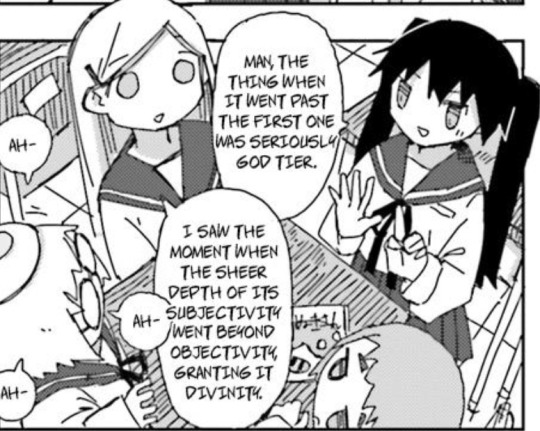
#shimeji simulation#girls' last tour#dungeon meshi#to be fair I think I'd definitely gain more appreciation for Dungeon Meshi if I reread it#and gave myself more time to absorb all the little intricacies of the world and characters#which I am planning to do as well as watch the anime#it's just funny to me how COMPLETELY AND UTTERLY ShimSim supplanted its place in my head#DunMeshi is objectively amazing but Shimeji gives me brainworms#i consider GLT and ShimSim part of the same work#not because they're necessarily connected by story (other than some references and easter eggs)#but because of the connected themes and ideas explored within each#the themes and concepts explored in the two manga are different and unique to each other but also incredibly interconnected
44 notes
·
View notes
Text
Let's Talk About NatsuMikan: The Anime (pt. 1)
I could go on and on about these two and I think I will, just because I don’t often see people talk about the analysis behind them. The meta I have seen about them has included a perspective that equaled the anime and the manga and I don’t think that’s an accurate way of viewing their relationship.
The anime is a different species than the manga, something that frequently happens during the adaptation from page to screen. Since they’re so different, I’ll analyze them separately.
There's going to be many parts to this so I'll keep a table of contents right here so people can more easily navigate (though you can also read through the "let's talk about natsumikan: the anime" tag on my blog):
Anime Analysis
Part 1: Exposition & Episode 7
Part 2: Episodes 8, 9, 10, & 11
Part 3: Episodes 12, 13, 14, 15, 16, & 17
Part 4: Episodes 18 & 19
Part 5: Episodes 20, 21, & 22
Part 6: Episodes 23, 24, 25, & 26 & Conclusion

The anime makes changes, as anime adaptations often do. The most outstanding changes are appearance related, as Natsume now has brown eyes instead of red, in addition to other characters who have hue-shifted eyes and hair. But there are also story changes, and I’ll be focusing on the changes that occur, specifically in regards to Natsume and Mikan and their relationship.
For one, their relationship starts evolving much earlier in the anime. I think it’s pretty undeniable that in the anime, Natsume started liking Mikan at the end of the dodgeball game. That scene never happened in the manga, but in the anime, it’s a crucial step in making sure nothing seems too sudden or forced.
The anime is 26 episodes long. If Natsume only starts liking Mikan after she saves him during the Reo Arc, then we’re already halfway through the show when positive feelings between the two appear. On the other hand, the feelings develop more slowly in the manga because there’s more time to properly develop the relationship in a more drawn out way.
My analysis will start with the anime, because it’s shorter and easier to discuss.
Exposition
It’s impossible to say that the anime was completely loyal to the manga. It very frequently couldn’t be, because it needed to fill in time in episodes or give closure early before the manga even addressed it (Natsume’s backstory in the anime, for instance, is vaguely referred to and implies deviation from the manga).
The most obvious difference between the manga and the anime from the get-go is visual. Not only do they have differing art styles (I don’t dislike the anime style but Higuchi Tachibana’s art style is so distinct and unmistakable while the anime’s isn’t so unique), but the setting is also different.
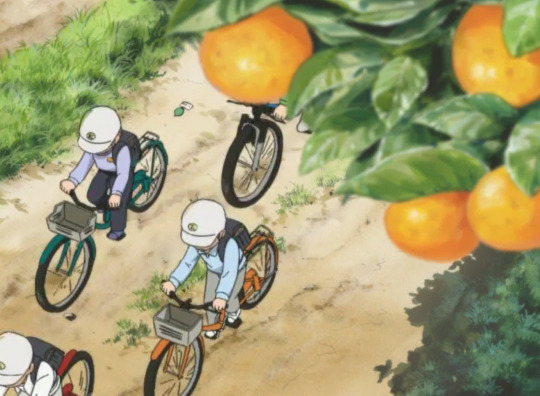
While the manga started in the depth of winter, the anime starts off in summer/fall. It always struck me as odd that while the first page of the manga has Mikan running after Hotaru in full winter-wear, the anime starts off warm and idyllic. You could almost think of that as a general warning for the difference between the anime and the manga. After all, while the anime has a reputation for being a cutesy and upbeat story about friendship and magical powers, the manga is much darker and discusses many morbid and depressing themes that can and WILL fuck you up. Warm vs. cold seems like an accurate difference, though I don’t think that was intentional.
We see way more of the village life in the anime, including Mikan’s efforts to keep the school from closing. This is a welcome change because Mikan’s passion to keep the school open is nothing compared to her friendship with Hotaru, and even after the school is saved, she runs away to see her friend, even if it means she goes to another school. The manga doesn’t imply that Mikan knew already about the school’s fate, and since she is always so preoccupied with Hotaru anyway, we don’t really get the impression that she cares very much. To Anime!Mikan, Hotaru is more important than saving the school, something she was so passionate about she rallied to get signatures. It’s an extra scene to prove just how much Hotaru matters to Mikan, and to show even more how selfless Hotaru was to go to Alice Academy, since she knew how much the school mattered to Mikan.

“Sign my petition to get a Gakuen Alice anime reboot!!!”
My boy Natsume is only introduced properly in the second episode, when we actually see his face and he speaks. His appearance is different from the manga’s too. I’m not sure if this was to appeal to a younger audience or what, but Natsume’s eyes are changed to brown instead of their iconic red, something that was always my biggest peeve about the anime adaptation. His hair is also somewhat purplish instead of entirely grey/black and, although this does bother me a lot less than the eyes, I wonder why they made this change when other characters have black hair. It might have been to differentiate him from Hotaru, another main character with black hair, though I’ve never had issue in the manga telling them apart.
His first interaction with Mikan is a lot more pleasant in the anime than in the manga, although that’s not really saying anything. Mikan’s skirt simply falls off and Natsume draws attention to it, rather than the unpleasant events that took place in the manga. This different event makes it a lot easier to support a relationship between the two of them right off the bat. They are still antagonistic but it’s not as terrible as it is in the manga. This makes it easier to establish romantic feelings earlier on, and might have been changed in order to achieve just that, or possibly also to appeal to a younger audience. Maybe both? Who knows.
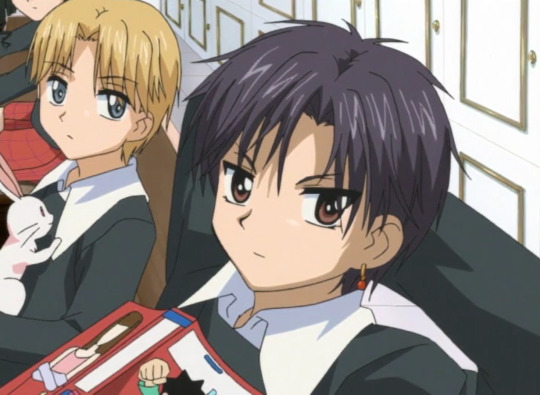
“You can’t sit with us!”
With Natsume presented the way he is in the anime, it’s easier to make the claim that he’s simply a good guy who acts the way he does to protect people. And it’s true! He is! But he is also so much more. In the manga, he’s a more complicated character. Although he is a good person, he still requires character development, which is something he does go through, and something I’ll talk about more in his meta analysis later.
Most of the events at the beginning of the anime parallel the events of the manga. Mikan goes to Alice Academy at the same time of year, Natsume shows up with an explosion, Mikan has to go through the Northern Woods, she discovers her powers in her fight with Natsume, etc. Some of the continuation from episode to episode is different than the transitions between chapter to chapter, there’s extra scenes inserted to fill up time, and some of the exposition seems strangely presented (in the anime, Mikan finds out more about the school when she finds Narumi and Iinchou waiting for her at a tea party, which is…. Super weird…), but all in all the information and events are mainly the same. The big differences start with the dodgeball episode.
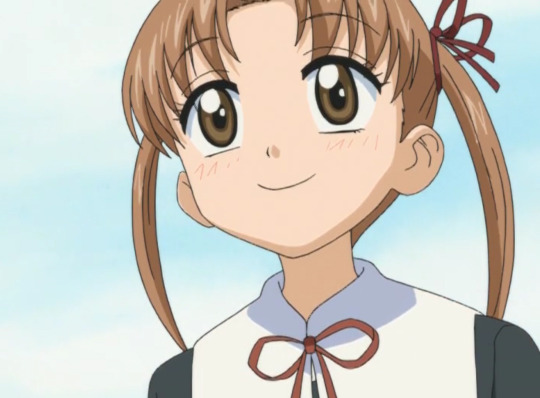
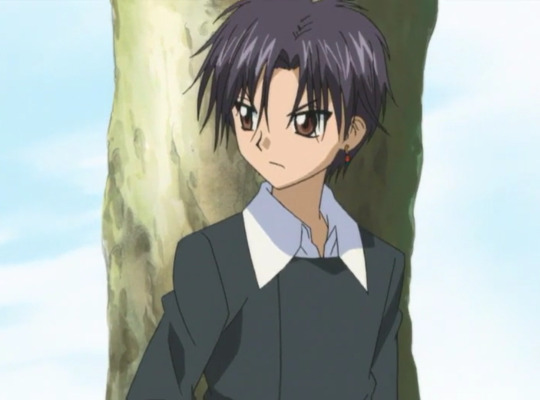
“Look how happy she is. Makes me wanna barf.”
Episode 7 vs. Chapter 9
I love the dodgeball episode. I feel like for the most part, the anime does deviation from the manga pretty well. With the last arc as an exception, I generally enjoy their changes and additions to the plot. The anime has to be different, has to progress at a different pace, has to introduce topics at different times. They have an episode to fill, and less time to build relationships. Natsume and Mikan are both different characters in the anime but it’s very subtle and has to happen due to the fact that the anime is shorter and seems more designed for younger audiences, in addition to wrapping up before the manga could explore more of the story.
Anyway, let’s talk about the dodgeball episode. AGAIN THIS DOES NOT HAPPEN IN THE MANGA THE SAME WAY so when discussing NatsuMikan as a concept, the anime events cannot be treated the same as the manga events. A lot of people maybe forget that the manga is very different than the anime when it comes to this episode. I see the two media conflated in plenty of fanfics, where seventeen year old NatsuMikan reflect on the dodgeball game from their youth that changed everything, and I get it because the anime version of the dodgeball game is cute! It's shippy! It's fun! But it doesn't happen in the manga the same way.
There's a similar trope with the sakura tree, which I can only remember from the anime, and yet it's such a fundamental aspect of NM fanfic it might as well have played a vital role in both anime and manga. Nothing wrong with any of this, of course. I'm just making it clear that my analysis will cover the two media as separate for the sake of a cohesive essay. Separating them in fanfic is far less important.
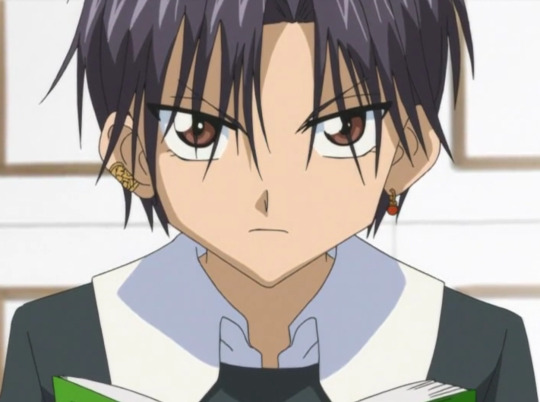
This look could probably kill someone. I’m surprised Mikan is still alive, TBH.
The chapter’s focus is Mikan starting to feel more at home in Class B, making friends with her once-hostile classmates, but the episode is more preoccupied with Natsume and Mikan’s perspectives on each other. While in the manga, the game ends with a tie and Mikan accidentally hits Hotaru in the face with the ball, the anime draws out the game to fill an episode and to introduce an evolution in the way Natsume sees Mikan. The first part of the anime episode is Mikan introducing her friends to her new senpai, Tsubasa. After she invites her friends, we see Natsume glowering at her and promptly ditching the next class, saying to Ruka that he can’t stand being in the same class as her. This addition to the plot already foreshadows that their relationship will change in some way by the end of the episode.

Tsubasa tells a frustrated Mikan that if she wants Natsume to be less unpleasant, he’d need to release some of his toxic energy. Thus, the sporty Mikan introduces the concept of dodgeball to the unwelcoming class. When they finally agree, Natsume gives one condition: that they play with the notorious Alice Ball, which is powered by the thrower’s alice (a detail absent from the manga). This Alice Ball is particularly terrifying with the threat of Natsume’s dangerous fire alice. Mikan also needs to get more people on her team, another aspect absent from the manga. While in the manga, Mikan only had her few friends on her team (including a wandering Ruka) and this ended up playing to her advantage, the anime has a humorous plot of Mikan tracking players down for her team, including a fake mustache she makes with her pigtails (she’s so cute, I love her), paying Hotaru to be on her team, and blackmailing Ruka to participate. This was mainly to fill time, but it makes the dodgeball game more important as well.
In the manga, we don’t see how the game ends, just that the teams tied and that everyone in class is having fun and bonding. In the anime, more emphasis is put on the “Mikan vs. Natsume” aspect, so a tie like the manga’s would be anticlimactic. Thus, the anime concludes the dodgeball game with Mikan and Natsume being the only kids left on the court, and Natsume not using his alice when he throws the Alice Ball. Even Hotaru leaving the game is something she does out of boredom instead of injury, further separating the other characters from the plot. It’s about Natsume and Mikan, and everyone else is mostly a side character. (Though Ruka also plays a vital role to this episode AND chapter, and it’s at this point that I think he started developing real feelings for Mikan as well. So when it comes to the anime, he and Natsume fall for Mikan around the same time, but in the manga, Ruka likes her first and the “he liked her first” argument for Natsume vanishes, though he never had that “advantage” to begin with.)

“Thank you!”
Natsume wins (something that shocked me at twelve years old) and is ready to walk away with his handy “tch” and all but Mikan thanks him for not using his alice and he goes off on her, demanding to know why she’s still smiling despite her loss. She says she’s happy that he had fun and was involved with the rest of class for once, and that in a way that means she wins. For Anime!Natsumikan, this is it. This is the turning point. “I just wanted you to be happy and have fun,” is what Mikan might as well be saying. “Really, this was all for you!” It’s sweet and it’s thoughtful and I don’t think Natsume ever imagined he’d be on the receiving end of her kindness, especially after all their beef. Manga!Mikan would probably not say these things to him, even if she meant them, for the sole reason that Mikan is stubborn and holds onto her pride, especially when it comes to her early relationship with Natsume, but Anime!Mikan is much more forgiving and much more willing to extend an olive branch, like in the dance episode. In any case, Natsume starts falling right then, and it’s obvious too, because he is pissed, and even more angry because he’s not even mad at her. He’s angry with himself for his change of opinion. This is the girl he was fully content to hate forever and yet here he was, starting to like her. Not ideal.
This scene, something so crucial to the development of Anime!Natsumikan, is completely absent from the manga. In the manga, Natsume still dislikes her by the end of the game although he does have fun.
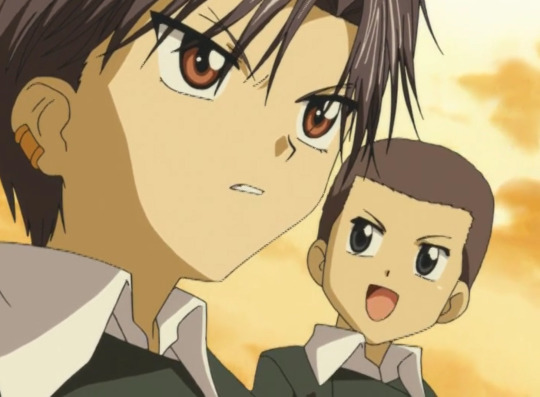
He's not angry, just disappointed. In himself.
I’m not going to say one is better when it comes to starting up NatsuMikan because they’re very different creatures and I actually thoroughly enjoy both.
Anyway, the NatsuMikan after episode 7 is almost the same as in the manga, but the events carry a different weight since we know Natsume likes Mikan now (even if he would never admit it).
Summary
I hope this first part was interesting, and that it introduced the idea of Anime!NatsuMikan as being a little different from the manga's version. Yes, it is more or less the same story, but with so many thematic and plot changes, they take a different form as well, in a perhaps more subtle way, kind of like a slightly canon divergent fanfic. Fanfic where Natsume starts liking Mikan a bit earlier on in the story.
Next Part ->
#gakuen alice#alice academy#natsumikan#hyuuga natsume#natsume hyuuga#sakura mikan#mikan sakura#meta#my meta#ga#meta analysis#mine#ga meta#ga meta: anime nm#let's talk about natsumikan: anime#im trying to create a system from one post so let's see how it goes#ive never posted media analysis like this but im very excited to bc ive always wanted to analyze these kids <3#unfortunately due to tumblrs image post limit of 10 i had to split this into MANY parts#im a visual person and i know others are too#if these images are not sufficient then i would rec maybe rewatching the eps after reading or maybe just skipping through the eps#u might some find some changes and themes of note as well to add and that would be super fun!#ga meta: nm#let's talk about natsumikan
49 notes
·
View notes
Text
Best Queer Anime
https://ift.tt/eA8V8J
Diverse storytelling is one of anime’s most appealing qualities. Want a show about superheroes? There’s a series for you. Ninja? You, too. Demon slayers? Yup. Not interested in action or horror? Don’t worry. You can find series about high school volleyball teams, people who transmigrate to another world, and workplace romance. It’s not an exaggeration to say that there’s an anime for everyone, no matter their tastes or preferences.
Given the wide variety of stories, there’s a lot of anime about LBGTQ people and the queer experience. To be clear, anime has more than its fair share of problematic portrayals such as uninterrogated crossdressing tropes, unchallenged homophobia and transphobia, and comedy at the expense of a queer character. But these things are hardly unique to anime, unfortunately. Despite these shortcomings, the format does have great series exploring the LGBTQ experience in different contexts and genres so here are some of the best queer anime to watch.
Yuri on Ice
One of the series that launched Studio MAPPA into its present-day prominence, Yuri on Ice takes us into the world of championship-level figure skating. It revolves around struggling Japanese figure skater, Yuri Katsuki, and bored Russian figure skater Victor Nikiforov, who audaciously agrees to be Yuri’s coach. While the sport and respective cultures of its leads are infamously known for their real life homophobia, Yuri on Ice deliberately presents a story where none of that is present. And with a film expected to drop at some point in the future, now’s the time to watch this gorgeous series if you haven’t already.
Bloom into You
In this high school romance, two girls unexpectedly connect when they each turn down romantic confessions from male classmates. Their new friendship takes a surprising turn when the older girl, Touko, reveals to the other girl, Yuu, that she’s in love with her. Despite Yuu not yet returning her feelings, their relationship continues to evolve when Touko asks Yuu to manage her campaign to become student council president and then later when they help put on a school play. While the original manga is more explicit about the girls’ eventual happy ending, the anime still brings to life a realistic portrayal of self-acceptance and changing feelings during the teen years.
No. 6
When No. 6 opens, we meet Shion, a privileged boy with a bright and promising future. But because this is a dystopian story, that doesn’t last for long. One night, Shion helps another boy named Nezumi. Unfortunately Nezumi is an enemy of the state and for his kindness, Shion is punished by being stripped of his elite social status. Fast forward a few years, the boys meet again, and their reunion leads to the uncovering of a vast government conspiracy. If you like wild sci-fi plots to go with your queer themes, No. 6 is the show for you.
Wandering Son
While there aren’t yet many anime series that explore the trans experience, Wandering Son does a stellar job making up for that lack. The show focuses on two kids, Shuichi and Yoshino, who meet in fifth grade. Shuichi is a trans girl and Yoshino is a trans boy, and Wandering Son follows the two friends from elementary school into high school, chronicling their respective journeys with their evolving gender identities.
Revolutionary Girl Utena
One of the biggest anime of the 1990s, Revolutionary Girl Utena was a trippy rollercoaster ride. It explored self-identity and gender roles against the backdrop of underground duels at an elite academy. Revolutionary Girl Utena was the anime for many queer feminist girls and for good reason: the idea of a princess who’d rather be a prince and save herself instead of being saved is one that resonated then and still resonates today. For this reason, and many others, Utena would go on to influence some of today’s biggest animated series like Steven Universe and the new She-ra: Princess of Power.
Doukyuusei: Classmates
Casual anime fans may want a break from the intense stories and long-running series that pervade the format. Some hardcore anime fans may too! Doukyuusei is a film that portrays the sincere and heartfelt relationship between two high school boys who fall in love. That’s it. That’s the story. And it’s a good one.
Given
Given takes a different approach to high school romance. Ritsuka aspires to become a musician, but he’s lost his passion for playing the guitar. And as any creative person can attest, losing that fire for the thing you love most can make life seem mundane and dull. Lucky for him, he meets the quiet Mafuyu and hears the other boy’s golden singing voice. The series is one that music enthusiasts everywhere should watch—even if only to peep at the episode titles and the songs they reference. A follow-up film explores the complicated relationship between the two other band members, Haruki and Akihiko.
Land of the Lustrous
Set in the distant future, Land of the Lustrous introduces us to the Lustrous, a race of crystalline lifeforms. They wage a constant war against the Lunarians, a hostile race that likes harvesting the Lustrous’ bodies. They’re actual gemstones, remember? It kind of sucks. The anime preserves the intentions of the original manga and makes the deliberate choice to refer to the Lustrous with they/them pronouns. After all, what would gender look like in a crystalline lifeform? They certainly wouldn’t resemble conventional, Western concepts of gender, that’s for sure.
Princess Knight
A series for the classic anime fans, Princess Knight is based on a manga by the legendary Osamu Tezuka. It follows Sapphire, a girl who has both “the blue heart of a boy and the pink heart of a girl.” Considering the manga was first published in the 1950s, this genderbending premise was groundbreaking, even though some aspects are now dated. Without Princess Knight, we wouldn’t have later iconic series like The Rose of Versailles and Revolutionary Girl Utena.
And one final bonus…
The Stranger by the Shore
While this film doesn’t hit FUNimation until next month, the premise is unabashedly queer and familiar to many LGBTQ folks. Shun is a novelist who was cut off by his family after he came out as gay. When he meets the recently orphaned Mio, he must grapple with the past to move on and embrace his future.
cnx.cmd.push(function() { cnx({ playerId: "106e33c0-3911-473c-b599-b1426db57530", }).render("0270c398a82f44f49c23c16122516796"); });
What are some of your favorite queer anime? Let us know in the comments!
The post Best Queer Anime appeared first on Den of Geek.
from Den of Geek https://ift.tt/3qzex7V
17 notes
·
View notes
Text
Gochiusa BLOOM episode 4 impressions
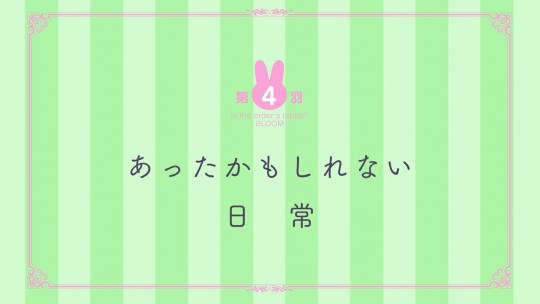
Previously: episode 3, episode 2, episode 1
And now, episode 4. Last time we saw Chiya and Cocoa being put in charge of organising a “restaurant” for their class’s entry into the cultural festival. And it ends with them showing up at Rize and Sharo’s school and borrowing some “supplies”. At the start of episode 4 we go back in time to see what happened between those two events, as well as the cultural festival itself.
The episode opens with one of Cocoa’s classmates discussing a proposed arrangement of tables in the classroom, from the feng shui point of view. This traditional Chinese practice is often used in East Asia to create harmonious environment. In Japanese it’s called fūsui (風水). One of the main instruments is a compass (羅盤 raban), which can be seen placed on the table here:

Like with a normal compass there are symbols for directions written around it. However it also includes Chinese zodiac and Celestial stem characters. Just so we don’t forget what show this is, the character for Rabbit zodiac sign is replaced by a pictogram. The flow of qi (or chi) energy is also discussed, which is one of the primary feng shui concepts.
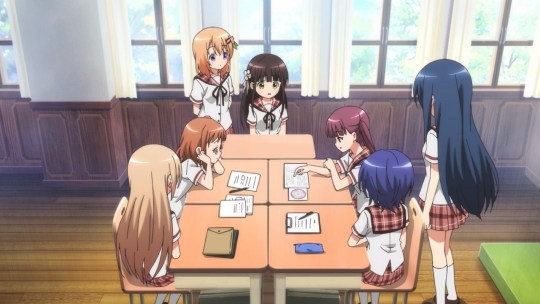
In the very next shot we see a bunch of Cocoa’s classmates gathered around the table. In anime it often happens that the main characters greatly stand out among their classmates by having original design and colorful hair. In fact in season 1 episodes 4 and 8 when Cocoa’s class is shown, that pretty much appears to be the case.
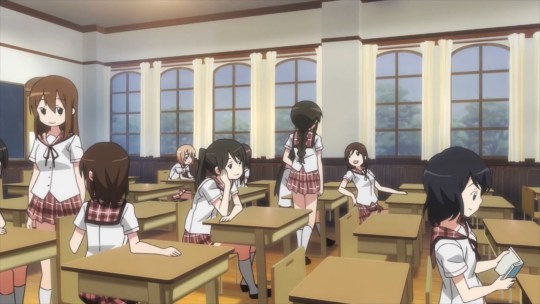
However the new group of classmates we’re introduced to is different. Not only do they have colorful hair and unique design, but they also have names and different personalities. Moreover this story arc isn’t the last time they’re seen (at least in the manga). Some backstory for these characters is also revealed, such as Kano staying at carpenter’s house, and Class President having deep-seated issues because of failing to get into her preferred school.
Anyway, Cocoa and Chiya decide that the best way to decorate their “restaurant” is by borrowing the decorations from the other school. Apparently they had to defeat the clubs over there in various contests, including the blowgun club (with its president making only a background appearance this time). This is obviously a callback to season 2 episode 10 where Rize and Sharo also had to win various contests to reach their goal.
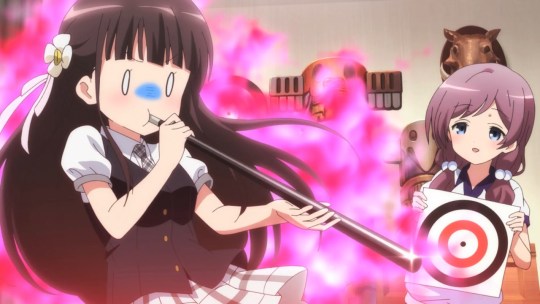
The “spoils of war” include a bunch of masks that were previously seen decorating the blowgun club. I’m honestly not aware of any connection between fukiya and masks, but anyway, in a callback to an earlier feng shui scene we see classmate Anzu being aghast at the negative qi the mask seemingly emanates.


We get a little "imagine spot” with the classmates imagining Rize and Sharo based on their descriptions, which are apparently quite scary. I thought it’s interesting how the question marks which in the manga were drawn on top of the characters silhouettes ended up being drawn directly on characters’ faces and being partially covered by hair. Spooky.

We also see how the classmates imagine Cocoa and Chiya. Cocoa is seen as a “little sister” (much to her annoyance), while Chiya is seen as bancho (番長) which is the title of a leader of a group of juvenile delinquents, a surprisingly common character archetype despite the fact that this subculture hasn’t existed for decades. This is in contrast to Chiya imagining herself as shacho (社長), company president. 社 also means “society”, while a delinquent is basically the opposite of that.

Also, what was up with this soup being prepared? I don’t think they even served it. Anyway, Cocoa and Chiya give invitations to the rest of the gang, and the official theme of the “restaurant” is revealed, which is Beer Hall! And more specifically, Oktoberfest. Now, as you probably know this is a huge beer festival held in Munich, Germany. Contrary to its name, it takes place mostly during late September, and ends on the first Sunday of October, so perhaps this is the time period when the episode happens. On the other hand, cultural festivals are usually held around November 3rd (Culture Day) in Japan. So that’s another datapoint. On the third hand (?) we haven’t reached the Halloween episode yet so it’s probably not November.

(yeah, this is the second gif of Cocoa and Chiya on fire, what about it)
Anyway, it’s the day of the Cultural Festival and we see all sorts of stalls set up by the other classes. Chino, who has never been there before(?) seems to be impressed by it all, while Rize seems to imply they don’t have events like this at her school. Chimame run off by themselves, which leaves Rize and Sharo on a date basically.
Soon Chimame come back, each carrying a beer mug (called Maß in German and “stein” in English) which contains what looks like beer, but is actually a very frothy apple juice. However note that in Japanese “juice” (ジュース) can mean any soft drink, so it might have been carbonated or something?
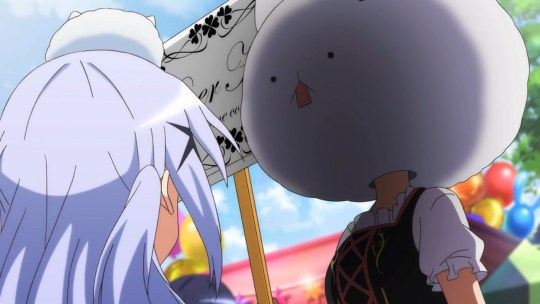
Soon, a very scary person in a Tippy costume shows up, but it’s actually Cocoa and this is her idea of a “Tippy hat” which she mentioned earlier. Cocoa (and the rest of her class) wears a costume which could be previously seen on the cover of Memorial Blend, the season 1 Gochiusa guidebook. This is actually a traditional dress called dirndl which is worn in southern Germany and other countries around the Alps.
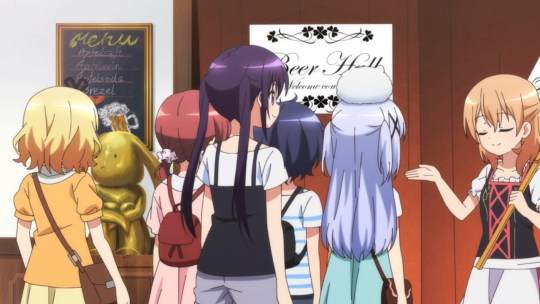
The full menu can be briefly seen here and includes Apfelsaft (apple juice), Apfelwein (apple wine), Apfelsoda (apple soda, but pretty sure that’s not a real word) and Brezel (pretzel). No soup included. Also note Sharo being scared of the rabbit statue before this scene.
Anzu shows up again, this time doing a Tarot card reading. It seems she’s interested in all sorts of divinations. In response Chino does the same “much obliged for taking care of” greeting Chiya did to Karede Yura in the previous episode, while calling Cocoa dame-ane (ダメ姉 “no-good big sister”) in the process. It’s not very often that Chino calls Cocoa “big sister”, so Cocoa is very happy about that.

Kano is seen bringing 5 full beer steins to the table. The standardized volume of one beer stein is 1 liter, which corresponds to 1kg of liquid. Together with the glass itself, total weight is about 2.5kg, or 5 pounds. The largest number of beer steins a single person has carried simultaneously is 29 (by Oliver Strümpfel). For a female, the record is 19 by Anita Schwarz. I didn’t expect Rize to win the armwrestling contest against Kano (in the manga it was ambiguous who won, or whether the contest even took place) but I guess being a CQC expert would help with that.

Chimame, Rize and Sharo are convinced to try on the dirndls of Cocoa’s classmates, who then immediately bail, leaving Rize and others in the position of the waiters. However they happily take on the challenge, and even Aoyama and Rin join in. We also see the mysterious pretzel that was on the menu:

Without Cocoa, there was nobody to call in new guests, but it turned out that Chino had more appeal wearing that Tippy headgear, so Chino bravely takes on this role for herself.

This kind of dramatic shot is called “harmony processing” (ハーモニー処理) and comes from the time anime was cel-animated with the character cel being painted in to blend with the background cel. The most famous example of this technique is in the boxing anime Ashita no Joe.
Eventually Cocoa, Chiya, Rize and Sharo get to leave their post and explore the school, all wearing Cocoa’s school uniforms, and have a good time. They imagine how it would’ve been if they were all classmates (even Rize who is technically a year older, but if her birthday was not in February but in April she’d be in the same class as the others).
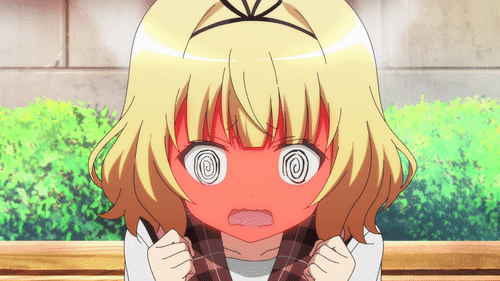
Just like the last episode’s title, the title of this episode あったかもしれない日常 is reused from the manga, namely the chapter 12 of volume 5. It basically means “the everyday life that could have been”, and refers specifically to the alternate timeline where Rize, Sharo, Chiya and Cocoa are classmates.

More importantly, Chino gets to see what it looks like, and it might be the final push she needs to decide which school she would join (although there are many scenes hinting towards it throughout the episode). Chino even manages to get a photographer to preserve the memory of this moment. She wasn’t brave enough to ask for it directly, so she puts on the Tippy headgear to do it. A funny difference from the manga though, is that in the anime Tippy (to his horror) gets covered up by it, instead of staying on top of it like before.

After the festival, there’s a mostly anime-original scene where Chino pretty much announces her decision to Maya and Megu. With Chino’s statement “I have decided” I can’t help but recall the lyrics of the ending theme
決めちゃいます ○ですから問題なーい
(We’ll decide. Because we’re <blank> it’ll be ok.)
With the placeholder ○ standing for “Chimame-tai”, of course.
Which brings up a question: when does Chino tell Maya and Megu she has chosen Cocoa’s school in the manga? I can’t find it at all. Seems like they already know by vol.6 ch.7...
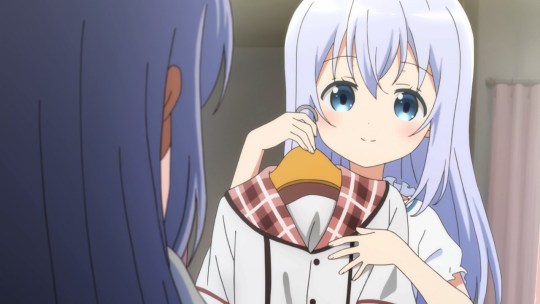
After the ED there’s another short scene of Chino sneaking in Cocoa’s room to imagine how her uniform will look on her. Interestingly, this is based on 4-koma from chapter 13, making this the first episode this season to adapt content from 3 different chapters. Makes me wonder how they’ll adapt the rest of chapter 13 because this reveal is at the end of it, and some scenes rely on Cocoa not knowing Chino’s decision. But I guess we’ll see in the next episode.
Anyway, thanks for reading, see you next week!
15 notes
·
View notes
Text
IN-DEPTH: Unraveling the Ecology Behind My Favorite Anime and Manga

Ecology is a widely misunderstood term that is often confused with environmentalism. The word "ecology" originates from the Greek word oikos (home or household). As that suggests, ecology is the study of the organism and its oikos — its home or environment. Land, water, air, sunlight, plants, animals, other individuals of the same species, and itself — everything is part of an organism's environment along with the way everything relates to everything else. That’s ecology.
Most information on ecology is in the form of research papers, textbooks, and popular science. In short, nonfiction. We may read nonfiction books on topics we are interested in, but for topics we aren’t interested in or even aware of? It’s unlikely. Fiction bridges the gap between education and enjoyment. You may not want to watch a documentary about agriculture, but you’d certainly be interested in watching Silver Spoon. It’s a win-win.
Anime and manga have always had an interesting way of approaching topics of nature and ecology, whether it be a celebration of nature like A Place Further Than the Universe, a subtle treatise on ecological topics like Parasyte, or environmental commentary like Weathering With You. Hayao Miyazaki’s Nausicaa of the Valley of the Wind is probably the most important anime/manga piece of eco-fiction. These are all important works, but let's look at the ecological themes in three of my most treasured anime and manga, each of which embodies a different branch of ecology.
Shin Sekai Yori (From the New World) and Behavioral Ecology

From the New World might have the most overt connection to ecology. Author Yusuke Kishi was inspired to write the original novel after reading Konrad Lorenz’s 1963 book On Aggression. Konrad Lorenz is widely considered to be the father of modern behavioral ecology, perhaps best known for his studies on imprinting in geese. In On Aggression, Lorenz attempted to explain aggression (defined as the intent to harm another individual of the same species) through the framework of evolutionary biology. According to his (now outdated) "hydraulic model," frustration builds in the individual like a fluid until it is "released" by an outlet — namely, aggression.
Aggression is a curious phenomenon. You are probably accustomed to seeing animals in grand fights to the death in nature documentaries. Except, this actually almost never happens. All organisms seek to be as "successful" as possible. In evolutionary terms, "success" comes from leaving behind as many descendants as possible. Can’t do that if you’re dead, can you? Even injuries have the potential to impact success: an injured individual might be viewed as an undesirable mate, for example. Animals will actively avoid violent escalation of conflict as much as possible — especially social animals where conflict is an inevitable byproduct of increased interaction, and powerful carnivorous animals who have the capability to kill. Lorenz wrote of how these animals must evolve behaviors that will reduce the impact of aggression. One of these anti-aggression adaptations might sound familiar to From the New World fans: attack inhibition.
In From the New World, attack inhibition is one of the key properties of humans with the psychokinetic powers called Cantus. Basically, a human with Cantus will feel strongly unable to physically attack another human. Persisting with such an attack will result in the triggering of "death feedback," killing the attacker. This is similar to natural phenomena — fights among wolves or dogs usually have a clear winner and loser but rarely end in serious injury because bite strength is carefully moderated so as not to cause injury (a phenomenon called soft mouth). The loser will turn upside down, exposing their vulnerable regions to the winner, who will not attack as they have already established dominance. Similar behaviors can be observed in many other animals, such as ravens. According to Lorenz, this is the result of an innate attack inhibition that has evolved in these species.

While the “death feedback” of From the New World might seem like a harsh punishment for aggression, it’s not too far off from the truth. A species whose individuals engage in wanton violence is not a species that would last long. In the words of Lorenz, “a raven can peck out the eye of another with one thrust of its beak, a wolf can rip the jugular vein of another with a single bite. There would be no more ravens and no more wolves if reliable inhibitions did not prevent such actions.” In other words, violent escalation of conflict is undesirable for the individual, and by extension for the species. Natural selection is real-life “death feedback,” isn’t it?
Lorenz also had a theory that less-powerful animals such as doves or rabbits have not evolved such inhibitions because they aren’t as necessary — except in captivity, where individuals are forced to confront each other with no possibility of escape. And what of us normal, Cantus-less humans, then? Lorenz describes us as "a dove which, by some unnatural trick of nature, has suddenly acquired the beak of a raven." In From the New World, the supposed “greatest danger to society” comes in the form of humans with weak or nonexistent Cantus — these individuals are not burdened with attack inhibition or death feedback. In short, individuals like you or me. Humans are a curious species, even without Cantus. Our use of tools bypasses conventional evolutionary pathways. We have not had time to adapt, but will we? Are war and conflict an inevitable byproduct of our aggressive tendencies? Both Lorenz and From the New World have one common thing to say: that there are no easy answers to this.
Golden Kamuy and Conservation Ecology

Golden Kamuy is an ecologist’s paradise. Manga creator Satoru Noda packs pages with everything from delicate drawings of local flora to elaborate footnotes on the pooping habits of bears, really bringing early 20th-century Hokkaido to life. On the surface, Golden Kamuy is a classic gold rush western, a wild tale of conflict between the protagonists (ex-soldier Sugimoto and Ainu hunter Asirpa) and various other parties in search of lost Ainu gold. Beneath lies a greater conflict: humanity versus Hokkaido itself.
Hokkaido is Japan’s largest prefecture, and one of its least-populated, accounting for 22 percent of Japan’s land area but only 4.4 percent of the population. Hokkaido is an island, physically separated from mainland Japan to the south by the Tsugaru Strait. This physical separation is known as Blakiston’s Line (after English explorer Thomas Blakiston). Several plants and animals found north of Blakiston’s Line (in Hokkaido) won’t be found south of it (in mainland Japan), and vice versa. So you have black bears and flying squirrels on the mainland but brown bears and chipmunks in Hokkaido.
Into this unique environment stepped modern human civilization in the form of settlers from mainland Japan and beyond — mostly ranchers, gold prospectors, and prisoners. In short, the majority of the Golden Kamuy cast. Although the Ainu people had lived in Hokkaido for a long period of time, their impact on the environment was minimal, as they lived sustainably off the land. The settlers were a different bunch, altering the environment in many ways. One of those ways was through farming. The Meiji government sought to modernize agricultural techniques in the country and brought in advisers from the West to do so. One of them, in particular, would change the landscape of Hokkaido for good — a certain Ohio rancher named Edwin Dun, who you might recognize as Eddie Dun from Golden Kamuy.

Well before his first appearance in Volume 7, Dun’s role in de-wilding Hokkaido was hinted at in Volume 3 — Noda mentions an American rancher responsible for driving the Hokkaido wolf to extinction. Brought in to introduce scientific agricultural methods in 1873, Dun realized horse ranching in Hokkaido faced a significant hurdle: predation. Hokkaido wolves were slaughtering a good portion of horses and foals, so Dun took it upon himself to exterminate wolves from Hokkaido. His method of poisoning horse carcasses, combined with a bounty hunting system, worked a little too well — the last record of the Hokkaido wolf is from 1896.
The other major way settlers impacted the environment of Hokkaido was through the very foundation of Golden Kamuy’s plot: gold mining. It has been well documented that even small-scale gold panning at rivers has serious consequences for fish populations — the mining activity disturbs the riverbed and increases the amount of sediment in downstream waters. This sediment contains greater levels of mercury and other trace minerals that can impact fish. The Hokkaido gold rush endangered the salmon of Hokkaido — one of the most important species of the ecosystem as a food source to bears and Ainu alike.
Ultimately, Golden Kamuy is as much a study of human-nature conflict as it is of conflict between humans. Each of the three main factions of people — settlers, soldiers, and Ainu — view nature differently. To settlers like Eddie Dun, nature is an inconvenient hurdle to be tamed. To soldiers like Lieutenant Tsurumi, nature is a powerful hazard to their daily lives that is to be feared. And to Ainu like Asirpa, nature is an equal, meant to be treated with respect.
MUSHI-SHI and Community Ecology

MUSHI-SHI's central concept of enigmatic life-forms — called mushi — that flit on the edge of existence, enables it to tackle a whole bunch of ecological themes, but central to it all is what is known as community ecology. Community ecology studies the way different organisms interact at various scales in space and time. At the core of this field are interspecific interactions — how different species interact with each other. An interaction between two species could be anywhere between mutualism (where both parties benefit) or parasitism (where one exploits the other).
The depiction of parasitism is extremely close to real life. Some mushi take over the host’s ears, some take over the eyes. Some take control of the entire body, leaving but a husk of a person behind. This horrifies us because, as humans, we aren’t really accustomed to parasites aside from the occasional hair lice or intestinal worms. To see the worst of parasitism, one needs to look at other species. Parasitoid wasps will "drug" large insects by stinging them before laying eggs inside them, when the young hatch, they can eat the host alive from the inside out. Why not outright kill the host? To keep them fresher for longer.
The most intriguing parasites are those that alter the host’s behavior to their benefit. In Episode 3 of MUSHI-SHI The Next Passage, we encounter a man who seems to shun warmth of any kind, embracing the cold of winter. The most notable thing is the fact that he is not truly cold-resistant — his body is suffering from the effects of exposure, yet he seems not to notice. Unbeknownst to him, he is infected by a cold-loving mushi. This is textbook behavior alteration. Behavior-altering parasites have some of the most complex life-cycles of any organism. Toxoplasma, a small microorganism, infects rats. However, its true host (the one in which it can reproduce) is the domestic cat. To ensure that it reaches a cat, the Toxoplasma alters the behavior of its rat host, making it braver and less fearful of cats. Once this foolhardy rat is eaten by a cat, the Toxoplasma can finally reproduce, releasing spores via the cat’s droppings, ready to be eaten by — you guessed it — a rat. Thus the cycle starts over. This isn’t an isolated case — there are hundreds of such parasites, some with even more complex life cycles.

No episode of MUSHI-SHI better encapsulates the ecology of parasitism than the Rosemary’s Baby-esque “Cotton Changeling” (Season 1, Episode 21). We encounter a mother and her strange, green-skinned, near-identical children. These "children" are not human — they are merely mushi pretending to be human. While the first "children" are barely able to walk, later generations are impressively human-like, with fully developed speech and intelligence. They resist protagonist Ginko's attempts to convince the mother to stop caring for them. This generational improvement mirrors nature, where parasites are engaged in an evolutionary arms race with their hosts. The hosts change to counter the parasite, and the parasite must keep pace too. A classic example can be seen with that most classic of parasites: the cuckoo. Over time, host birds learn to recognize cuckoo eggs or chicks and throw them out. In response, the cuckoo begins to lay eggs that are more similar to those of their host.
If you thought parasitism was solely about harming the host, you’d be wrong — MUSHI-SHI understands this. In many episodes, mushi infection actually confers a benefit upon the infected person, who are sometimes unwilling to be cured by Ginko. Once again, this isn’t far off from real life. Researchers now believe there is a spectrum between mutualism and parasitism. In fact, many mutualisms began as parasitic interactions. One of the most widespread parasites — bacteria called Wolbachia that infect insects — confers benefits like viral immunity and insecticide resistance upon its host. Some insects are incapable of breeding without Wolbachia infection. But if you thought the Wolbachia was doing this out of benevolence, you’d be wrong again — Wolbachia is simply committed to doing whatever it takes to ensure its own survival. If the host dies, so does the parasite.
Host-parasite interactions are cyclic, and MUSHI-SHI is all about such cycles. Shots of humans and mushi are contrasted with long shots of the forest floor, where leaves decay and rot, returning to soil, fueling the web of life. Mushi exploit humans, who exploit mushi, and the cycle continues. At the center of it all is Ginko, an ecologist if I’ve ever seen one. To Ginko, the mushi are neither good nor evil, they simply exist. Everything is only the way it should be, nothing more or less. Taking on the role of a neutral observer rather than an exterminator, he goes from place to place, motivated as much by his own curiosity as he is by a desire to help people. It is through Ginko that MUSHI-SHI shows us what it means to be an ecologist.
The Power of Fiction: A Personal Story

I mentioned earlier that fiction has the power to make us interested in things we aren’t interested in. It also has the power to make us regain interest in things we lost interest in. I was once an ecologist-in-training. Since childhood, I had been fascinated by the natural world, and becoming an ecologist seemed like the natural culmination of such interests.
It didn't pan out that way, sadly. I hated college. By the end of my long and protracted Master’s degree, I no longer had any love for ecology. I actively shied away from scientific discussions with my more illustrious colleagues and no longer made an effort to keep myself informed about current research. Me and ecology, we were finished. Or so I thought. I began to explore anime and manga — longtime interests of mine — more deeply as a sort of escape from my "failures" in academia. It was through the three titles discussed above that I was able to reconcile with the subject. My ecological knowledge actively enhanced my watching and reading experience and I suddenly felt a desire to rediscover what it was that made me love the subject so much in my early days. I was genuinely grateful for everything I'd learned because it helped me better appreciate such fine works of art. While I may never return to academia, I no longer feel the need to forget my time there, to push it out of my memory. I no longer feel that shame. It goes to show that anime and manga not only have the power to teach us about our world but can also touch our lives in strange and unexpected ways.
By: Manas B. Sharma
3 notes
·
View notes
Text
February 2020 Book Review
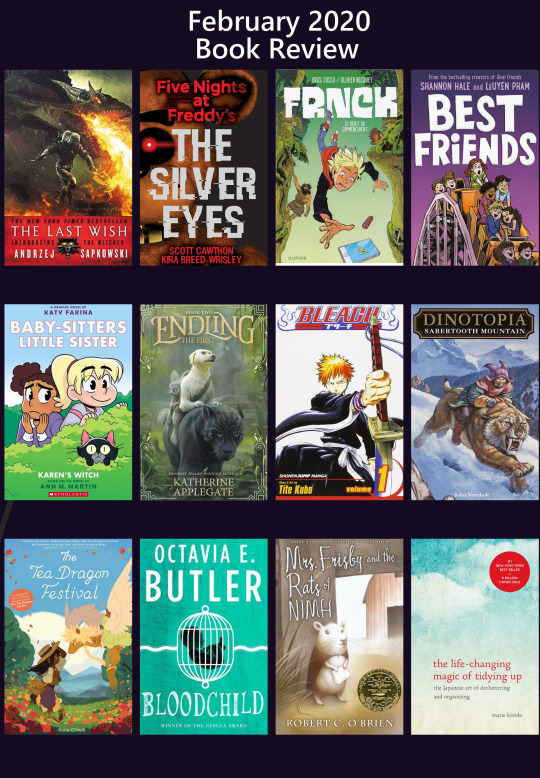
The Last Wish / Sword Of Destiny

Let’s start with the books that currently have me in a stranglehold. I apologize to everyone that actually follows me and watched me descend into fandom pits but whatcha gonna do. So, I was aware of the video game when it came out, but not being a prolific gamer I was intrigued but never bothered getting into it. Then the Netflix series came out, and I was again intrigued... but I suck at sitting down and watching shows. So what the heck I decided, it’s probably mediocre hypermasculine high fantasy but let’s try a book to see what the fuss is all about.
Good god. Guys. It’s real good. And so fucking different from the show. Geralt is actually a really emotional, well-meaning guy who’s starved for positive social interactions and is just trying to do his best. And the books’ consistent themes of colonialism, environmental destruction, forced extinction, and changing eras is... chilling and fascinating and honestly a little too relatable at times. These books have made me laugh and shout and frankly sob. Still a little sexist, cause 90s fantasy, but Geralt is so not the gruff, heartless, manly man character I thought he would be. I am so deeply into these and have just cracked the spine of the next book in the series. If you like high fantasy, I can’t recommend these enough.
The Silver Eyes
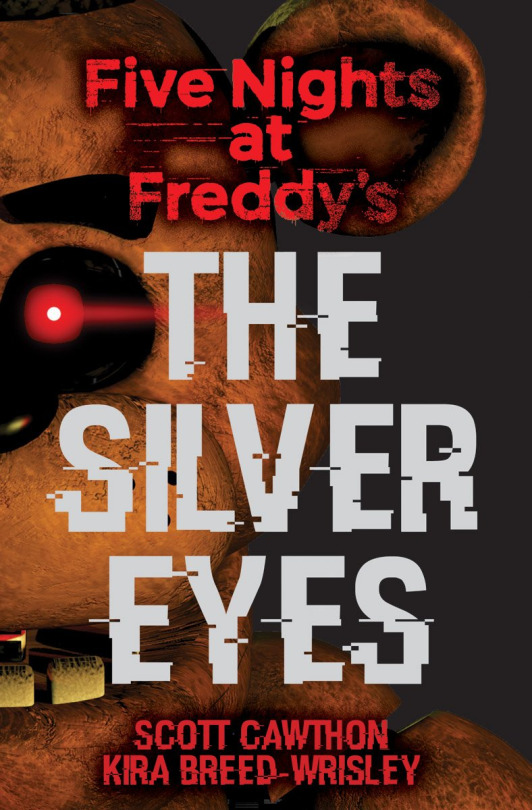
I just learnt that there were Five Nights At Freddy’s books, and honestly picked this up from the library as a joke for my brother. We’d played the games back when they first came out, and were into the lore, but lbr they’re more of a meme at this point. Anyway, we ended up reading this out loud to each other, a chapter a night, and I enjoyed it a lot more than I thought I would. Probably wouldn’t have liked it as much on my own, but the main character was complicated and messy, and the book’s way or portraying trauma was neat. It was nominally horror, and did have the occasional chilling moment, or times it was fun to speculate, it over all it was pretty run of the mill middle grade fiction.
FRNK

Probably the best graphic novel I’ve read this month.
I was howling with laughter while I read it. Good quality Belgium comics, always a treat. This story is about a modern day boy, Frank, who is accidentally thrown back into prehistoric times, where he’s stuck with a bunch of cavemen who haven’t invented the concept of vowels yet. Admittedly my French isn’t great, so it made trying to decipher words with half the letters missing a challenge to say the least, but plenty worth it. I really want to get my hands on book two. I believe there’s an English translation, and I’d recommend giving it a try.
Best Friends

A neat little graphic novel that addresses common growing up issues, about what it means to be friends, stay friends, how to cope with people changing and when it’s time to walk away. Anxiety, being yourself, fitting in, all that sort of stuff. It’s a quick read, very pleasant, and has nice art.
Karen’s Witch
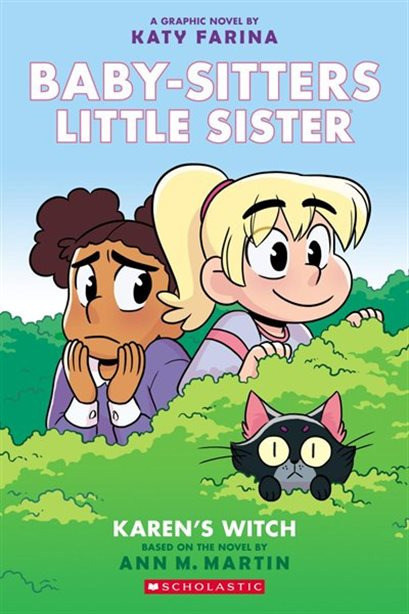
Another cute graphic novel with charming art. I read this at the store while I was waiting for a prescription to be filled. It’s about this five year old (or thereabouts) who is absolutely determined that her neighbour is a witch and by god she is going to prove it or at least scare herself and her friend silly in the process. A fun little read!
Endling: The First

The second book in the Endling series, and all my praise for the first book apply here as well. A super unique high fantasy that gives extinct and threatened species a voice. The book explore themes of war, environmental destruction, sacrifice and loss. You really get to see how much Byx has grown and how much she needs to continue to grow. This book has me so excited for the third, I haven’t read such an emotionally rewarding quest novel in a long time.
Bleach
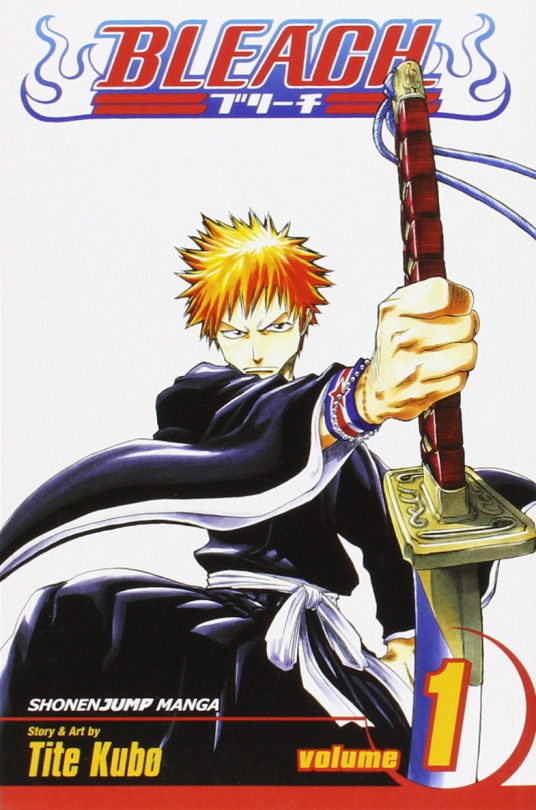
I found out my library has a billion books of this series and decided to jump into it again for the first time in over a decade. Honestly it’s even better than I remembered? The art is absolutely stunning, Ichigo is such a power fantasy hero, and it’s one of those series with a lot of really loveable characters and a lot of heart. Ichigo is a good guy who you actually feel good liking, which can’t be said for all shonen protags by any means. This is just such a classic and it holds up man. And if you like manga and have never read it? Jump in and enjoy a normal human getting supernatural powers and kicking absolutely enormous monsters’ asses.
Dinotopia: Sabertooth Mountain

This was my favourite Dinotopia book as a kid, and it was still fun to reread. The world of Dinotopia is one separate from the rest of the world, where humanity lives in perfect harmony with many prehistoric creatures that have managed to survive and evolve on the island of Dinotopia. This story is about a crisis brewing, as the sabertooths are cut off from their food supply and are in danger of not only starving but of bringing death to the rest of the mountain as well. While surveying the situation with his older sister, the main character finds himself falling from the airship in the middle of a storm, directly into the valley of starving sabertooths.
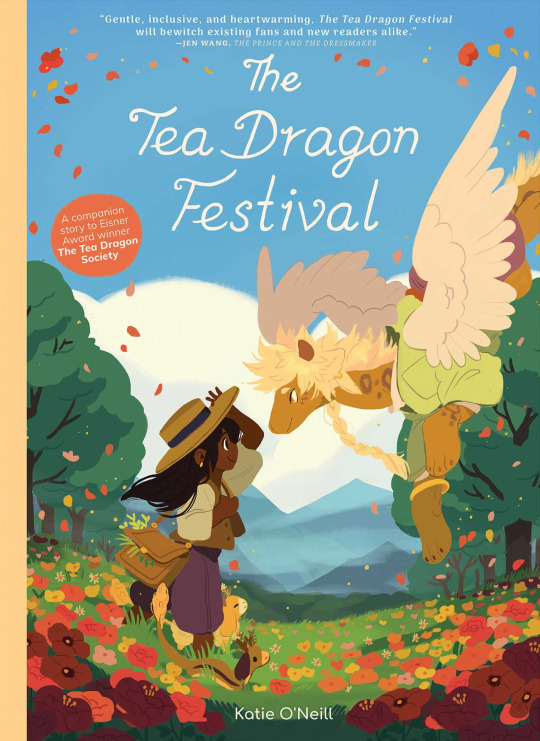
I read a bunch of this author’s graphic novels, and they are such feel-good queer lit. This was probably my favourite of the lot, but I also read Tea Dragon Society, Aquicorn Cove, and Princess Princess Ever After. Taking place in a picturesque mountain community, it’s about a girl meeting a guardian dragon who accidentally fell asleep in the mountains a century ago rather than watch over the village like intended. It’s about coming to terms with and loving yourself (and also about super cute little tea dragons).
Just Jaime
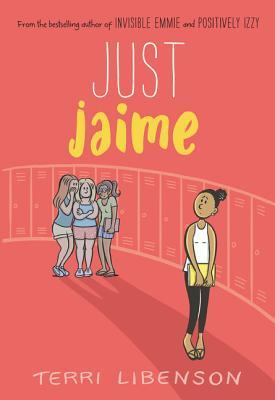
Another story that focuses on the complications of middle school, and how friends can grow and change, and when sometimes friendships become toxic and cruel. These are novel/graphic novel hybrids that are very visually appealing, and really do manage to tell very heartfelt stories. This one takes a side character from the earlier two books, and turns her from a very one dimensional, somewhat annoying character, into a fully realized person with her own issues and her own need for growth.
The Life-Changing Magic Of Tidying Up / The Life-Changing Manga Of Tidying Up
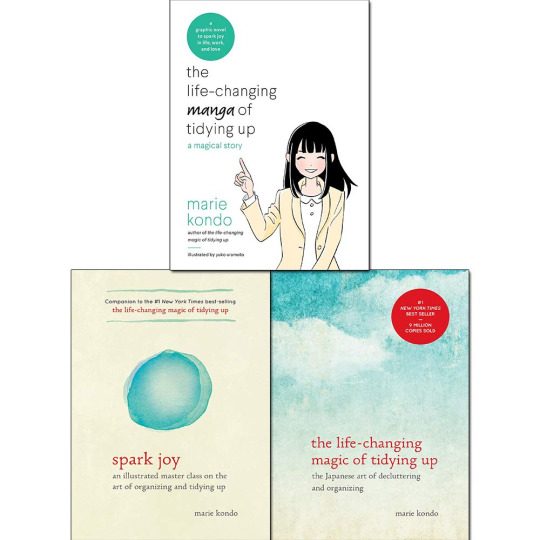
Given that I’m not really a non-fiction person and DEFINITELY not a self-help book person, I really enjoyed these (though I didn’t read Spark Joy). I read the manga first, out of curiosity, but enough of it struck true that I decided to try the book as well. Have I cleaned anything up yet? No. But honestly, I can genuinely say that despite being repetitive at points I do truly feel like I got a lot of good out of it, and I feel much more excited and prepared when I do decide to do a big clean next. It really does reframe the relationship you have with your belongings and with yourself. I genuinely love the concept of “sparking joy”.
Bigfoot Boy: The Sound Of Thunder
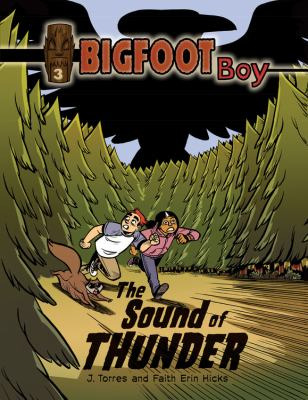
Technically the last book of the series, whoops. Though honestly having read it I didn’t feel like I missed that much. It’s a Canadian graphic novel and I had... mixed feelings about it. Interesting and exciting in some ways, but the pacing was odd, and honestly I don’t think indigenous voices went into making it (I could be wrong but...) and it reads as kinda... eugh. Problematic. Having a none indigenous author write about a white boy being the guardian of a first nation totem and turning into a bigfoot isn’t a super cool optic.
Bloodchild
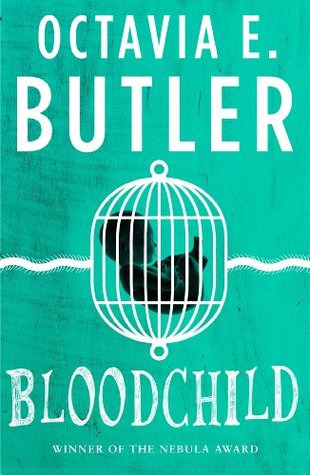
I was told “hey this is a really fucked up short story” so I read it, and guess what? It was a really fucked up short story. Would recommend if you want weird alien sex slavery bullshit-- it was a wild ride. And the overall themes obviously went a lot deeper than that, but honestly, it’s like a few dozen pages long if you wanna dig into all the philosophical shit, just give it a read! Uh, heavy content warning, tw tw tw, but a really bizarre, unsettling look at gender and power dynamics and oppression through a scifi lens.
Mrs Frisby and the Rats of NIHM

I hadn’t read this book since elementary school so I reread it on a whim. It really is such a charming story. As far as animal stories go, this feels almost like the platonic ideal. Mother mouse is worried about her sick son and winds up compelled to seek out the mysterious rats who live in the rosebush for help, and is not only thrust into her own adventure but learns about the strange past her late husband shared with the rats of NIMH. It’s such a relaxing read, while still managing to be exciting and compelling.
Exploring According to Og the Frog
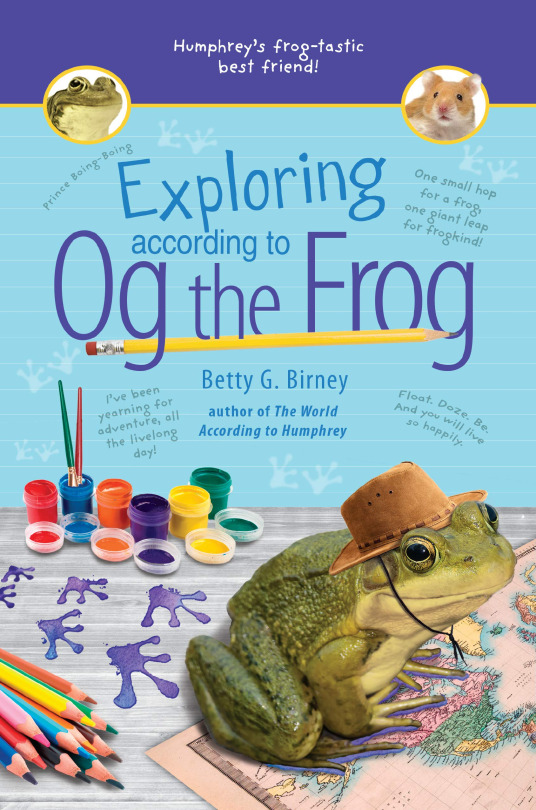
And one last animal story to round us off. I’d read one of the Humphrey books last month, and check out a couple more from the library for fun. I didn’t enjoy Mysteries According to Humphrey that much, but this one was charming, showing the world through Humphrey’s frog friend Og instead. The same charming type of adventure, but being a frog, Og has a very different attitude and view of the world, which was fun. Very cute elementary kid lit.
#book review#february book review#canadian lit#queer lit#the witcher#the last wish#sword of destiny#fnaf#five nights at freddy's#the silver eyes#frnck#endling#baby sitter's club#mrs frisby and the rats of nimh#bloodchild#octavia butler#marie kondo#just jaime#tea dragon festival#dinotopia#bleach#novels#manga#graphic novels#comics#chatter
12 notes
·
View notes
Note
003 for the last fandom you were in (like, reading a post about/drawing for/watching/reading, etc. the last fandom thing you saw/partook in 😂💙✨) Also bonus: Share an interesting fact about one of your personal characters 👀✨
WELL technically the last fandom i *was in* was DB- and the last fandom thing *i saw* was Pop’n music, and the last one i *partook in* was KH... so distraction is distraction; triple whammy time idec
But wait the 003 one is with specific characters :Oc... im going to do these with my faves for each then, but if that’s not what you wanted feel free to correct me i’ll re-do it 😂 also MEGA LONG LOL
🐉 low and behold my fav from this series is COOLER
How I feel about this character: now the only reason i ever got into DB in the first place was because of Frieza- that i saw on the cover of the manga, while buying groceries with my mom. Like when she would go and pay, she’d let me go to the ‘kid’s books’ section, who was right next to the cashiers. And there was that ONE DB manga with final form Frieza on it, and was like WOW and begged my mom to buy it- she did; she didn’t know DB and never really knew that it wasn’t the best thing to buy for 6 years old me, lol. So uhm that got me into DB and after buying like 10 DB manga books with pretty (but deceptive) covers, i somehow got that one DS game- Supersonic Warriors 2. I had no idea there was an anime (believe it or not), and as you can guess had no knowledge of the movies, so this game introduced me to quite a bunch of characters- including Cooler! ... Tho uhm ngl it wasn’t an instant love like Frieza- i was still 6 so i was like ´purple frieza with prettier colors’ and that’s it. Fast foward because this is LONG LOL SORRY but got to know Salza and (vaguely) Cooler’s general motivations thanks to PS2’s Budokai Tenkaichi 2, around 2015 i got back into DB, and actually watched their movie... And honestly i had no idea that HE was like that- truly bitter towards his brother AND father, and had to actually prove himself; and only to get nothing from the two when he PUSHED HIMSELF SO FAR HE ACHIEVED A TRANSFORMATION *NO ONE ELSE* HAS ACHIEVED. Like let’s be real, Frieza is a VILE person, beyond cruel- but Cooler? He’s somehow worse, because he has reasons to be bitter- to me it can fuel his cruelty even further than Frieza and idk. It’s great. I’ll come back to it further in this but i feel this is a VERY interesting concept for a ‘frieza sibling’ villain.
Any/all the people I ship romantically with this character: no one- Cooler’s super aromantic (and ace) in my head. Doesn’t even understand the concept of friendship, so love? Lol no. But i hc that Dore is romantically attracted to him though- Cooler has no idea, and maybe that’s for the best, i think he might react badly if he knew.
My favorite non-romantic relationship for this character: surprise, surprise, CoolerxSalza lol. I might reiterate things i already said/mentioned, but. I think Salza genuinely believes in Cooler- the latter kind of ‘saved’ him from Brench, a place where he was the very best and that bored him almost to death; and Salza was always sadistic, so the fact that he not only got a job about making ppl miserable (or better- killing them), but actually gets to do it with someone else (even if it’s in professional terms), Salza just. REALLY looks up to Cooler. But as his right hand, he actually got to witness Cooler talking with his father/brother, and how they argue- that made Salza realize that, as tough Cooler is, he’s a real person and certain things can get on his nerves. And so Salza comforting Cooler is. Very important to me
My unpopular opinion about this character: h-he.. trans,. Boy- no but legit uhm tbh. he’s better than Frieza in some ways, fight me. Much more potential. Proof: how ToP Frieza was just re-iterations and nothing new- the only thing new being that last attack w goluband that’s it. While Cooler! There’s so much you can explore- feelings-wise especially. Because imo he HAS feelings but he was taught to show otherwise
One thing I wish would happen / had happened with this character in canon: honestly? As much as i’d like him back in a movie, something i kept thinking/hoping would happen was Cooler and Trunks’ interaction potential. Like both have harsh fathers, and idk they could have some kind of relationship based on that? Like not ANYWHERE near friendship- or anything like that; more like a ‘i thought i was the only one with this problem’ kind of relationship.
Favorite friendship for this character: SALZA LOL and DBHeroes Trunks, even if it breaks my hope for them bounding out of convienance but also bc of dad issues
My crossover ship: honestly HONESTLY Satori from 2hu. They’re like, the same. Asocial creepy older sibling that, in-universe, isn’t very liked, while their younger is going around and being a nuisance at best. They could talk over tea, and put their younger parasites in cages while doing so
🎶🎵🎶🎵Pop’n music i guess?!!?? even though i never played it and i’m just digging the songs and chara designs?!?! Anyway my fav is Yima
How I feel about this character: i love everything about him? The fact that he’s very visually different and unique from all other characters and in general, how no one seems to know what he really is, and especially. ESPECIALLY! How he apparentely never talks, and expresses himself via dancing, by taking poses that look like kanjis and symbols. Also apparentely he’s super in touch with nature and ‘the gods’, so he’s never seen with anyone else? Asocial creature... Good!
Any/all the people I ship romantically with this character: he doesn’t know what a romance is. And he wouldn’t eat one because honestly i’m not even sure he has a mouth. The only ‘proof’? Sign? He has SOMETHING is that one pose where he’s smoking a pipe/using a flute. and according to the creators his ‘likes’ is Love, but honestly i think it’s the kind of love that goes beyond mere romance. The love of living, being alive. Deep love.
My favorite non-romantic relationship for this character: well. Technically the only thing he communicates to- (intentionally) is the player? So what if he’s aware of the player- are they one of his gods? I think that’s interesting to think about.
My unpopular opinion about this character: he’s a very unique character, much better than the protagonists that look good in the Pop’n music style, but would like any other anime human otherwise. If anything, proof of that is that one game where the style DOES change to an anime-like one, and Yima still looks unique while the others are undistinguisable if you take off their colors and/or features
One thing I wish would happen / had happened with this character in canon: HONESTLY i know this will never happen and maybe that’s a good thing? But i think he should be shown with Hoshi no Hito- which is kind of the entity antithesis of Yima. Yima = unknown entity that strives for Love, the gods, nature/life/fertility. Hoshi no Hito = unknown entity that strives for ??? Who knows actually but is tied to ‘Paradise of the universe’ and ‘Heaven’; the latter according to one of his theme songs, that has VERY strange imagery and looks stranger than Yume Nikki, making that ‘Paradise’ notion kind of. Like are you sure?? But yeah they’re similar while contradicting each other, it’s very strange and honestly not sure if it’s intentional, but if it is: do something with it, you’ve got something VERY unique on your hands! Do this and i’ll actually get into this series tbh.
Favorite friendship for this character: the way he loves nature and his gods is very endearing. Invite the player into it, Yima
My crossover ship: what is romans again i forgot
❤️KH and then you can leave, my child. The text wall is almost over........ Xemnas time.
How I feel about this character: me! BIG GAY! FOR XEMNAS! SINCE 2011!!!! Like bruh i remember i made a Gary Stu to date all my fav KH boys (Xem, Zexion and Vanitas- that are still my top faves. Been so for 9 years then lol?! Im old.) and my totally-not-a-secret-selfinsert would actually be in a relationship with Xemnas- even if back then, Xem wasn’t REMOTELY in character lol. So somehow it took me YEARS to realize how truly great Xemnas is? Like before i was only like ‘he’s one of the most handsome 3D men of all time’. Now i am like exactly that, BUT! He’s also a cult leader, not entirely human, and a mean villain so 👍👍👍. And while i have mixed feelings abt the whole ‘he lied to the orgXIII about them not able to have feelings’ thing, proves he’s truly evil and/or emotionless.
Any/all the people I ship romantically with this character: no one- another aro/ace lol. But to be fair- this one makes sense? He has NO EMOTIONS. He doesn’t even seem to understand friendship? So love? What is that
My favorite non-romantic relationship for this character: well ok this is one somewhat implied and never shown, and i was going to do a picture about it (i’m still going to do it lol) but. According to Nomura in an interview, Xemnas and Zexion have a teacher-student relationship? Which makes a lot of sense? Because: 1) Zexion is the ‘kid that mostly grew up in the cult, so doesn’t know anything else’ trope. 2) their powers can somewhat relate imo? Zexion has illusion powers. Xemnas has nothingness powers- and aren’t illusions nothing, in a way...? That one might be just me tbh- but i can kind of see them talking about their powers together. 3) Zexion is a ‘schemer’- he’s no stranger to manipulating people- wouldn’t it make sense if he learmed that from Xemnas? I honestly doubt he learned it from Lexaeus, Vexen or Ansem- and Xigbar is WAY too subtle. Might have learned from Xaldin as well but legit i think it’s Xem who taught it to him.
My unpopular opinion about this character: i don’t think he should be redeemed- they avtually didn’t do that, which i’m glad about. He lied to people for 10 YEARS about them being unable to feel, all that so he could softcore brainwash them later so they could be more like him, so not worth redeeming lol...
One thing I wish would happen / had happened with this character in canon: ... BUT... tbh. I think the fact that he’s Terra’s nobody should have been much more explored. Before kh3 i even hoped Xem would have what i call an ‘asriel moment’, as in ‘i’m a bad guy but in the past i was a completely different person (literally) and let me have a breakdown over it’. Also hoped that would have made Terra’s Kh3 design- as in Xemnas’ look (long hair, face) with Terra’s colors... but no they didn’t do that, instead they did something that kind of makes sense since Xem died in kh2, but also did a weird thing with Terra that i don’t get and frankly don’t care about bc it doesn’t involve Xemnas
Favorite friendship for this character: again i don’t think he understands friendship... but i love the idea of Xigbar fucking with Xemnas and the latter tolerating it. I mean in canon it’s mostly shown that SAÏX is the right-hand man, but i like to think that it’s actually Xigbar but he doesn’t care and only annoys everyone
My crossover ship: not really a ship but. Since Xemnas and Cell’s JP Voice actor is the same person... and that they’re both villains that really love themselves... interact
#asks#this is so long srry 😢#but it helped me not think of the bad things so 👍💖#... really hopes mobile doesn’t fuck up the paragraphs
9 notes
·
View notes
Text
Ghost in the Shell (1995) - Review
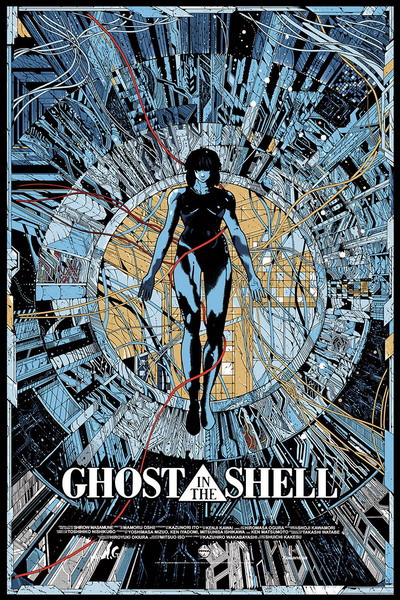
Hey everyone! I decided to watch Mamoru Oshii, Ghost in the Shell (1995). Below is my written review of my take on the film with the lessons and discussions we have had in class. Hope you enjoy! [Just a warning, there are spoilers contained in my review!]

Mamoru Oshii’s Ghost in the Shell (1995) is the animated adaptation of Shirow Masamune’s manga of the same name. It is a story that takes place in the fictional city Niihama in the Niihama Prefecture, Japan, or also known as New Port City, Japan (depending on the translation). The movie begins with this title card:
In the near future - corporate networks reach out to the stars, electrons and light flow throughout the universe. The advance of computerisation, however, has not yet wiped out nations and ethnic groups.
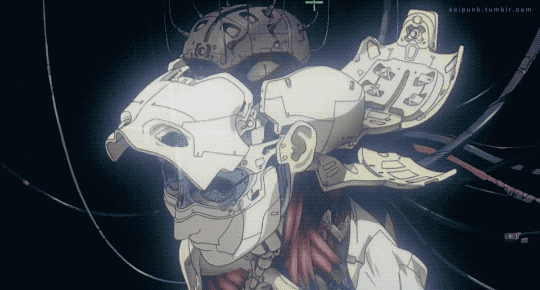
The time period is during the mid 21st century when technology has advanced to the point where humans are able to construct themselves as cyborgs by enhancing their physical bodies with implants. For example, many in society have cybernetic brains that allow them to plug into the internet or various internal networks, and “download” abilities, or affix themselves with prosthetics (in the case of our protagonist, she is entirely equipped with prosthetics and a cybernetic brain, rendering her a full cyborg). The story in a nutshell is the protagonist, Motoko Kusanagi, a Major at a gendarmerie-style security agent, who is tasked with hunting down a hacker known as the Puppet Master.
Throughout the film, memory, humanity and identity are explored and deconstructed as the events of the story unfold around Motoko. Visual cues provide us with insight on how the characters inhabit the world around them. Motoko lives and serves as an officer of the law in a Japanese city that is technologically advanced, yet has vestiges of the existing world before it (the surrounding world, particularly at the ground level, were inspired by 1995 Hong Kong). A city that appears to be in constant construction, displaying elements of the past, with scaffolds of a yet to be revealed future. The character ponders her existence of having a ghost (analogous to a soul) or whether or not the literal wiring and programming in her cybernetic brain is merely artifice, rendering her no different than the built environment surrounding her. If what she and the world around her is ostensibly programmable, what differentiates the natural world versus the one that is human created? It is an amazing way of storytelling by allowing us to piece together the nuances of the ideas by the visual imagery provided in the film. Below are some quotes that are peppered throughout the film that refers to the themes.
Man is an individual only because of his intangible memory. But memory cannot be defined, yet it defines mankind.
What if a cyber brain could possibly generate its own ghost, create a soul all by itself? And if it did, just what would be the importance of being human then?
It can also be argued that DNA is nothing more than a program designed to preserve itself.
Virtual experiences, dreams...All data that exists is both reality and fantasy.
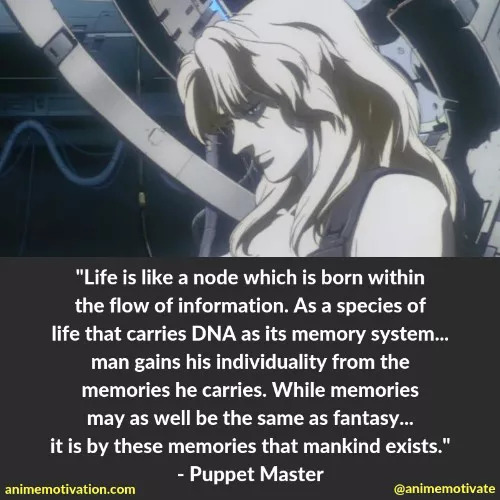
The most memorable and thought provoking part of the film occurs in the climactic scene in which Motoko and the Puppet Master engage in conversation with each other. Earlier in the film, it is revealed that the Puppet Master is an Artificial Intelligence program developed by the Ministry of Foreign affairs to hack nations. It went rogue once it developed sentience by being connected to all networks. In the climax of the film, the Puppet Master reveals that its plan all along was to get to Motoko so that it can merge itself with her to become something more. The Puppet Master delivers a speech which lets Motoko and us the viewers to understand the way in which it perceives the world and what its desires are. In my opinion this is the line that represents the ideas of the film most:
I am connected to a vast network, of which I myself am a part. To one like you, who cannot access it, you may perceive it only as light. As we are confined to our one section, so we are all connected. Limited to a small part of our functions. But now we must slip our bonds, and shift to the higher structure.
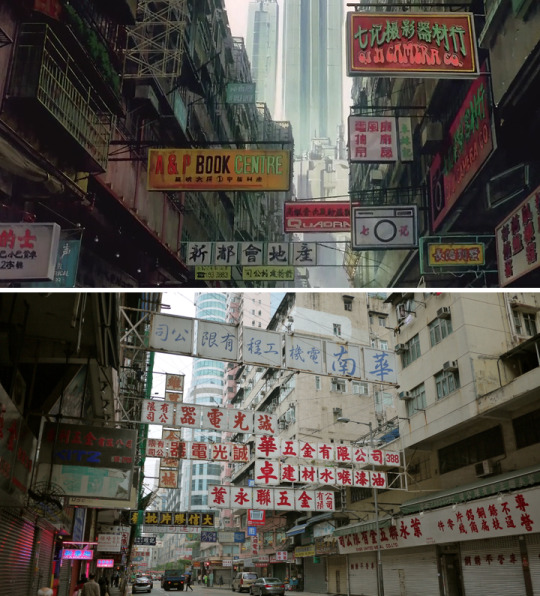
What is an interesting concept to take away from the film is how we quantify and qualify our identity in relationship to nature and artifice with the lens of science and philosophy, i.e. the Naturalism cosmological point of view. Some of the philosophical ideas posited by the film are mind-body dualism (the mind and body are uniquely separate entities) and Hegelian dialectics (through the process of juxtaposing two oppositional ideas to form a synthesis). An example of this can be found in the imagery itself of New Port City. The fictional city is inspired by Hong Kong, using the architectural language as a vehicle to reflect the themes of the film. 1995 Hong Kong was experiencing its final years of colonial rule under the British, and was soon to be returned to communist China. As a result there exists, to this day, an investigation of that particular identity, that has its origins in China but has layers of influence from British rule. Hong Kong’s identity, once relinquished from the British rule, occupies a unique position where it does not revert back to its previous way of life for identity, but also does not seek to be reinforced by stereotypes from colonial rule. From that tension, perhaps a new identity emerges from that search.
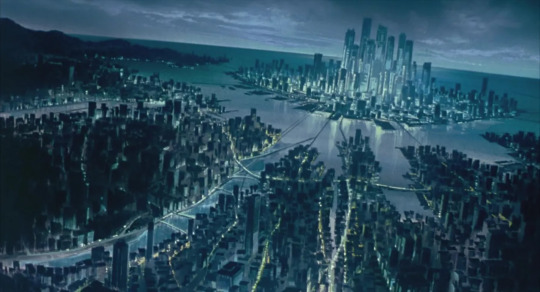
This process speaks to the point of material back talk that Donald Schone posits and the Internet of Things that Keller Easterling wrote about. There exists a positive feedback loop that informs us in designing the world around us, which in turn designs us. As Ghost in the Shell ends, the scene pans out to the futuristic New Port City, where it connotes the relationship between humans and their built environment, and the rooted connections it has to the natural world. When considering how we design things and ourselves, as we are acknowledging the increasingly harmful anthropocentric impact we have on our environment, it would behoove us to treat the things we create with greater reverence and not treat things as disposable. And through that process, hopefully we come to a synthesis that is holistically informative of our being and nature.
6 notes
·
View notes
Note
In a lot of your posts, they have a lot of the texts from the novels and manga. If you were to go off of ONLY the games, would Subject X still be hinted? I think yes, but I'm a casual fan.

Well, I developed my opinion on Subject X based ONLY on the games. I played all the games as soon as they came out. So, that would be many years ago at this point. I didn’t read the novels or the manga until after I beat KH3, which was relatively recently. My opinions on the story/characters were quite solidified by then. I actually read them because I thought KH3′s story was so inconsistent with the previous games.The novels/manga simply reinforced the opinions I already had formed after playing the games. I felt validated by them, but they had nothing to do with my opinion on Subject X.
Now, are you are asking me if I think Subject X—the way it was written in canon—was hinted at in the games? A mysterious time-travelling girl that Lea and Isa were looking for the whole time they were in Organization XIII? LOL. Hell no. Absolutely not. She was never hinted at even once, not even vaguely. And the way Axel and Saïx were written was never consistent with that motivation at all. If you mean Subject X as a concept? Xehanort’s lab rat? Yes, definitely. That was pretty much EXACTLY what I always expected Isa’s backstory to be, based ONLY on the games. I thought Lea and Isa were set up perfectly to be test subjects. When I play the older games, I’m still unable to see them as anything but test subjects. That’s how much support there was for that idea and how little there was for anything else.
I was VERY confused when KH3 did feature a character who was Xehanort’s lab rat. But instead of being Isa, it was a random girl he never mentioned before (but apparently was obsessed with). Them being apprentices was something so farfetched, it never even once crossed my mind. I didn’t understand how anyone could give that girl the backstory that seemed 1,000 times more suitable for Lea and Isa. How could the person writing the story not see that? How do they expect the fans to not see it, either? How dumb and/or incompetent do you have to be to write the story that way? How did that even get approved by a whole team of people? Those were my thoughts when I played KH3, based ONLY on the previous games.
That is NOT how someone will feel if a story is well-written. Some people act like Nomura made the story up as it went along, with each individual game. But that wasn’t the case for the games building up to KH3. Re:CoM and KH2FM+ were released together. And BBS, Days, and Coded were being developed simultaneously. These were all part of one big master plan. The way Saïx was written in Days was connected to how Isa was written in BBS, etc. Isa was planned to be a good guy MANY years in advance. IMO, him being the real Subject X was hinted at MANY years in advance. If you think anyone else was foreshadowed to be Subject X, let’s look at the games one by one.
Kingdom Hearts 2 Final Mix+
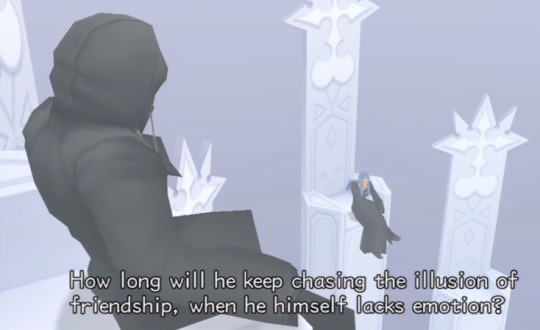
In all the games building up to KH3, the only person from Axel’s past that had any relevance was Isa/Saïx. They could have hinted at Subject X any time they wanted to in ALL these games, but they never did. In KH2FM+, all the new scenes with Saïx involved his relationship with Axel. Saïx seemed to be conflicted about Axel’s elimination. Xemnas made a comment to Saïx about Axel chasing the illusion of friendship. This scene hinted that Axel wasn’t really obsessed with Roxas like people thought. He was really just trying to recover his lost friendship with Isa. I had always suspected that Axel’s “obsession” with Roxas was due to his troubled past, so it didn’t surprise me at all. And Nomura loves twists like that.
They were setting up Isa’s relationship with Lea to have significance, not his relationship with anyone else. It’s absurd for me to think that they were trying to track down a girl they didn’t even know existed. They had real problems to worry about. KH2FM+ also introduced the Chamber of Repose and the Cavern of Remembrance. This all suggested that the experiments on the darkness of the heart would be very important and explored in much more depth. Xigbar seemed to have heavy involvement in these experiments, since he didn’t want to go down into the castle basement. And he’s the one who taunted Saïx about not being able to see Xion and not having a heart.
Kingdom Hearts Re:Chain of Memories
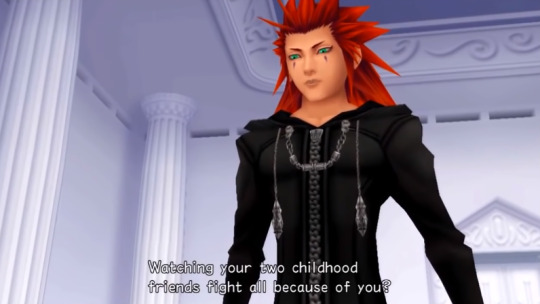
Castle Oblivion is all about recovering forgotten memories. The other most important recurring theme in Re:CoM was reuniting with people you miss. Pretty much every Disney world incorporated this theme. This was the perfect opportunity to hint at Subject X, but they didn’t do that. Instead, they chose to keep the focus on Axel’s relationship with Saïx.
Days made a big point of showing that Axel changed a LOT after coming back from Castle Oblivion. Saïx said this to him on Day 193, called “Memories”. He also asked Axel if the past meant nothing to him. Axel said he missed what was gone between him and Saïx. He didn’t mention missing anyone else. There was also a new scene where Axel acted extremely cold to Naminé because she was making two childhood friends fight. Isa was the only childhood friend we ever saw, and he later became an enemy. In every game building up to KH3, Isa was set up to be the most important character to Lea. Subject X? Crickets.
Kingdom Hearts 358/2 Days

Axel said in his report that he forgot what friendship felt like after becoming a Nobody. That was the whole point of him befriending Roxas and Xion. He was not focused on friendship until he met Roxas. And Saïx was always cold and indifferent towards everyone, even Axel, who was his best friend that he was inseparable from. They’ve been together for 10 years in the organization. I’m expected to believe that Saïx was able to care about some imaginary girl, but not his best friend? To be honest, I thought that the writers had to be drunk if they thought that was believable or realistic. Or that it made Saïx more sympathetic.
Even in Days, I could tell that Axel had a lot of baggage from his past. He always treated his memories of the past like they were sacred. Day 150 is about having something you can’t bear to lose. He said that for Nobodies, it was their past, because that’s all you have to remember the pain of losing something. Perfect time to mention Subject X. After all, her disappearance was Axel’s motivation, right? But the story made it perfectly clear: Axel was heartbroken over the loss of his best friend. Nothing else was ever mentioned. Axel was good friends with Roxas, but I got the sense that he was much, MUCH closer with Isa.
Personally, I thought Axel was a former test subject ever since the original KH2. It fit him perfectly. He was a sad, lonely, dysfunctional person. When Days hinted that Axel had a tragic past and dark secrets that he didn’t like to talk about, I was not at all surprised. He suffered from something way more traumatic than someone he barely knew disappearing. And it never seemed like he chose to be in the organization. That’s why he was always yearning for his childhood with things like ice cream and summer vacation. My personal belief is that Axel was always written with the backstory of a former test subject in mind. They came up with Saïx‘s backstory later, though I suspected he might have been a test subject too, due to his scar and his berserk state, which made him seem kinda freakish. We always knew that Xigbar and Saïx were unique due to them having gold eyes and pointy ears.
Kingdom Hearts Birth By Sleep

When I played BBS, I knew that something horrible must have happened to Isa to turn him into someone like Saïx. The difference between Saïx and Isa was like night and day. None of the other Nobodies were THAT different from their human counterparts. BBS also confirmed my opinion on Axel/Roxas/Xion. Lea was WAY closer to Isa than he was with them. Isa seemed like a shy kid. But he was very comfortable with Lea. And Lea acted much more naturally with Isa compared to Roxas and Xion.
After BBS, it was obvious that Isa was not a villain, and that he was going to be on the good side at the end of KH3. This was the game that was supposed to show you who the organization members were as humans. They showed that Braig was always evil. Lea and Isa were only in one single scene, other than the epilogue. So, why would they choose to show him as an innocent kid who was Lea’s best friend? Obviously, all of this was to show that he was the polar opposite of Braig. How is that consistent with his canon characterization? He sold his soul to Xehanort, did icky jobs for Xemnas at a pace Axel couldn’t keep up with, and tried to murder Axel. Why would anyone in their right mind choose to write Lea’s best friend that way, if he was not possessed? Especially if they wanted him to appear in future titles?
In the epilogue, they showed Lea and Isa eating ice cream together. Sea-salt ice cream was VERY important to Axel’s character. Axel defined friendship as people who eat ice cream together. I knew that Isa was very special to Axel if he was the origin of his addiction to ice cream. They also showed Lea and Isa trying to sneak into the castle. This was BEFORE the experiments took place. So, Subject X had nothing to do with why Lea and Isa were originally trying to sneak in. They wanted to sneak in because it sounded like fun. Not because they thought people were being tortured in there. There’s no evidence the mystery girl even existed back when BBS was written. The apprentices were not recruiting kids to be apprentices, they were kidnapping kids. What reason would Ansem have to let them be apprentices anyways? It makes no sense.
Kingdom Hearts Dream Drop Distance

In KH3D, Lea was recompleted. Xehanort was gone. He could have used that opportunity to look for information on Subject X. But he didn’t even mention her. He immediately set off to look for Isa. That was his main priority upon being recompleted, not finding Subject X or Roxas, who had gone back to Sora. Lea wasn’t even concerned that Saïx was trying to hunt him down in KH2. He was happy to look for him, even when he was putting himself at risk using the dark corridors. He used the same lines he did for Xion, which had huge narrative significance. It was clear that he was dead set on bringing Isa home. If Subject X was important, Lea didn’t act like it. KH3D sent the message to me that Lea was VERY devoted to Isa. Why even write him this way if he wasn’t supposed to rescue him eventually? Why make it seem like Isa was kidnapped if he was supposed to be looking for Subject X?
Lea and Isa were also the only two who were wearing the black coats when they were recompleted, which gave me the impression that they were test subjects. The apprentices never wore the black cloaks. And of course, the big revelation in KH3D was that Isa was a vessel. Unlike Xigbar, he seemed like he was being controlled, like a puppet. Lea awakened his Keyblade, the Flame Liberator, immediately afterwards. Xemnas also mentioned mind control experiments in this game. Why bring this up if Subject X was only experimented on for her memories. NONE of the games gave me the impression that Lea and Isa were apprentices, that Isa willingly joined the bad side, or that there was some mystery girl that he was looking for. They gave me the impression that Isa was one of the many characters who needed their hurting mended. That was supposed to be the main theme of KH3, after all.
Birth By Sleep Final Mix+
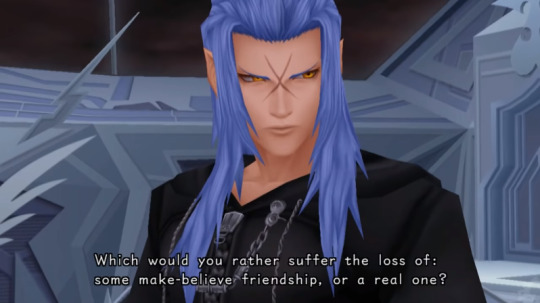
Xemnas may have called Aqua’s armor “friend”, but that was only because he had access to Terra’s memories. He tried to manipulate Aqua by impersonating Terra in KH0.2. And I got the impression that a similar idea was behind the relationship between Axel and Saïx. In the secret ending of BBSFM+, the camera zoomed in on Master Xehanort’s eyes when he said he had many other roads open besides Terra. Then they zoomed in on the amnesiac Terranort’s eyes, showing that they were brown. They zoomed in on Ansem the Wise’s eyes afterwards, showing that the were orange. And finally they zoomed in on his eyes again when he was in the Realm of Darkness. The implication was that Master Xehanort had so many options because of these experiments. His goal was to create vessels, not learn about the age of fairy tales.
Ansem put his research results in Sora to atone for all the lives he ruined. It can be reasonably discerned that Ansem Seeker of Darkness and Xemnas had orange eyes because of Ansem the Wise probing the depths of Xehanort’s heart, to restore his memory. He gained all of Terra’s memories in the process. And in the games building up to KH3, they specifically changed Saïx’s eyes from gold to orange. This implies that the same thing was done to him as well. We know Subject X was also an amnesiac and that Ansem the Wise hid them away when he released the other subjects. It makes sense that Isa was the same as Terra.
Kingdom Hearts 0.2

When Riku told Kairi that she was going to be training with Lea, she was shocked. She later admitted in KH3 that she was afraid of him, because he kidnapped her. But she said that she found it hard not to like him because all he ever wanted was to help his friend. That’s exactly what I expected to happen. My impression after playing KH0.2 was that Axel’s relationship with Roxas and Xion was meant to provide him with character development. This would allow Lea to fulfill his TRUE purpose in the story: becoming a Guardian of Light and rescuing his real best friend from Xehanort. Axel’s friendship with Roxas was supposed to carry over to Ventus because they both had a friend who was a vessel.
Axel’s friendship with Xion was meant to carry over to Kairi specifically because they were going to be training together in KH3. Kairi awakened her Keyblade because she wanted to bring Riku and Sora home. Lea and Kairi were planned as friends because he also wanted to bring his friend home. Axel’s friendship with Roxas and Xion played an important role in Lea’s development. But my impression was that getting Isa back was the ultimate goal of Lea’s character arc, not Roxas or Xion. And especially not Subject X, who is irrelevant to the Xehanort Saga.
Saïx could not see Xion for some reason that was never explained. He has a large Recusant’s Sigil scar on his face which was never explained. Axel said Saïx’s personality changed drastically, while he stayed more or less the same. This was never explained. Saïx had orange eyes like Xemnas, but this was never explained. Subject X does not explain ANY of these things. But Isa being experimented on as the REAL Subject X just happens to explain ALL of them.
Kingdom Hearts 3
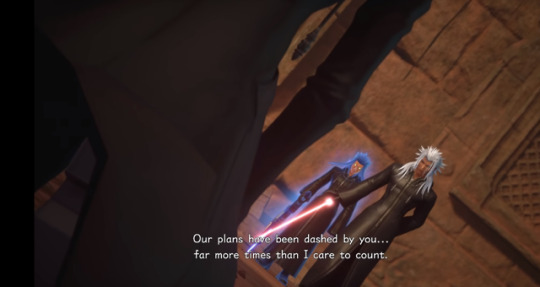
When Lea said he’d always be there to bring his friends back, Xehanort got a really nasty smirk on his face and sent Isa to attack him. It was just to punish him for ruining their plans. Xehanort knew exactly why Lea was there, and how to hurt him. Then during the final battle, it was a repeat of what happened in KH3D. Lea was ruining their plans yet again and Xemnas wanted to punish him. He was so confident that he had Isa under his full control, he thought he could murder Lea right in front of him and he wouldn’t do anything. He turned his back on Isa, literally and figuratively. Isa was positioned to be directly behind Xemnas’s right hand. He was his right-hand man, after all. Everything was all set up perfectly for Isa to finally betray Xemnas. That’s what being a recusant means in the first place.
Lea’s reunion with Roxas and Xion didn’t even feel like an organic or natural development in the story. It felt like shameless pandering. Subject X felt even more unnatural than Roxas and Xion did, which says a lot. Then there was Saïx’s transition into a “good guy”. If they wanted a character like Saïx to be redeemed, they would need to give him an actual redemption arc. Axel was always sympathetic and likable, and even he needed a redemption arc spanning multiple games. Saïx was WAY nastier than Axel. It would take a LONG time to redeem him. But…he was never humanized. The games went out of their way to depict Saïx as inhumanly cold as possible.

It was a deliberate CHOICE not to humanize him in ALL of these games. Yet there he was in the ending, chilling and eating ice cream, like it was the most natural thing in the world. Now, this would make perfect sense if his backstory was a nice kid who was kidnapped, experimented on, then got possessed. He wouldn’t have needed a redemption arc in that case. So it makes perfect sense why one was never planned for him. In every game, the emphasis was NEVER on Saïx being redeemed, but on Lea saving Isa. The power of waking was the main goal of the story. Isa was introduced in the game called “Birth by Sleep,” which IS the power of waking.
Lea and Isa being test subjects would have made the story far more interesting for 99.9% of players, I guarantee it. But it’s not even just that. Every game since KH2FM+ was written to give the impression that they were test subjects. There’s no way the writers weren’t aware of that. They knew exactly what message they were sending to people. And it makes waaay more sense than them being apprentices. I could not understand why anyone in their right mind would waste all of that foreshadowing and change their backstory to something FAR less interesting and also not very believable. If something doesn’t make sense it’s usually not true. I’m no detective or anything, but the only thing that makes sense is that Isa was planned to be Subject X for well over a decade. Then at the very last minute it was changed to this new girl.
There’s three reasons I could think for someone to believe that Subject X made sense the way it was written in canon. They are either:
A. Not looking at the story very closely. Probably a casual fan.
B. A blind Kingdom Hearts fanboy/fangirl who will defend anything in the story.
C. Not very intelligent or perceptive.
11 notes
·
View notes
Text
Let's Talk About Natsumikan: Natsume (pt. 3)
Previously, we started talking about Natsume, how cold he is, and his mannerisms. If you want, you can think of this next segment as the final analysis for this stretch of plot where Natsume is being fully introduced and his behaviors explored. After this one, things will start to get really interesting!
TW for bullying, suicidal ideation, depression, mental illness, and child abuse. Almost all of my essays will be heavily focused on one or all of these themes so if these topics are triggering to you, it might be best to not read.
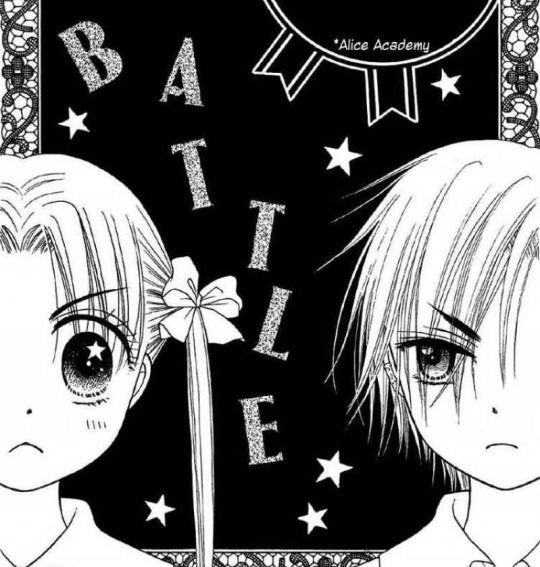
Chapter Nine
We went crazy analyzing the episode counterpart in the anime, going over the dodgeball game and all of its consequences regarding Natsume’s feelings for Mikan. The manga has just as much to analyze regarding Natsume, but very little of it is as pleasant!
In the manga, Natsume does not start falling for Mikan here. There is no beautiful scene where she confesses this was all done to make him smile. There is no pretend peace for Natsume at the end of the episode where he and Ruka muse about the game.
No, this is worse.
The beginning concept is more or less the same, but with significantly less emphasis on Natsume individually. In fact, Tsubasa tells Mikan Natsume isn’t solely to blame for the chaos in Class B--that they all need a way to let out their feelings and start having fun instead.
Natsume ends up sucked into the game against his will. He does not feel like playing, but he goes along with it when the bet is made--that is, if Mikan loses, she and her team need to be servants forever, but if she wins the other team has to quit their bullying of Substitute-sensei forever. There is no focus on Natsume ditching, or even on Natsume at all. Really Natsume only gets into it when he sees Ruka has been roped into joining Mikan’s team by accident. Natsume despises Mikan and, considering that Ruka has been kidnapped by her before, is not any happier to see him in Mikan’s custody again. He hits her in the head with the ball on purpose, knowing it would be out of bounds, because he wants to hurt her more than he wants to get her out of the game.
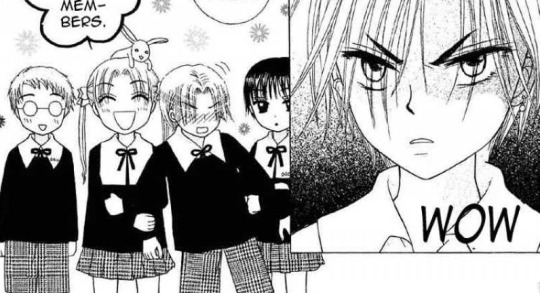
From Natsume's perspective, it does seem like she's trying to push his buttons on purpose lmao.
Natsume’s team has way more players, but because they’re afraid to hit Ruka on accident and face Natsume’s wrath, and because they are too crowded on their side, they have some obstacles. Sumire attempts to salvage this through good old fashioned cheating. Whether Natsume is privy to this seems unimportant. He doesn’t care about winning or losing either way, and doesn’t seem like he’s actively bullying the teacher to begin with like the others are. Now he’s just playing against Mikan for stealing Ruka away.
Compared to the anime’s version, the manga’s counterpart might seem anticlimactic, or less fun. But the truth is that the dodgeball game in the manga was never about befriending Natsume. Mikan never considered that because she despises him, maybe the same amount that he hates her. Creating a friendship is the last thing on either of their minds. This chapter is about Mikan finally feeling more at place in Class B as a whole, rather than winning over Natsume.
This chapter carries weight for him on an entirely different level. Natsume might have gotten himself involved with the game, and might have even had a bit of fun, but that was never going to last.
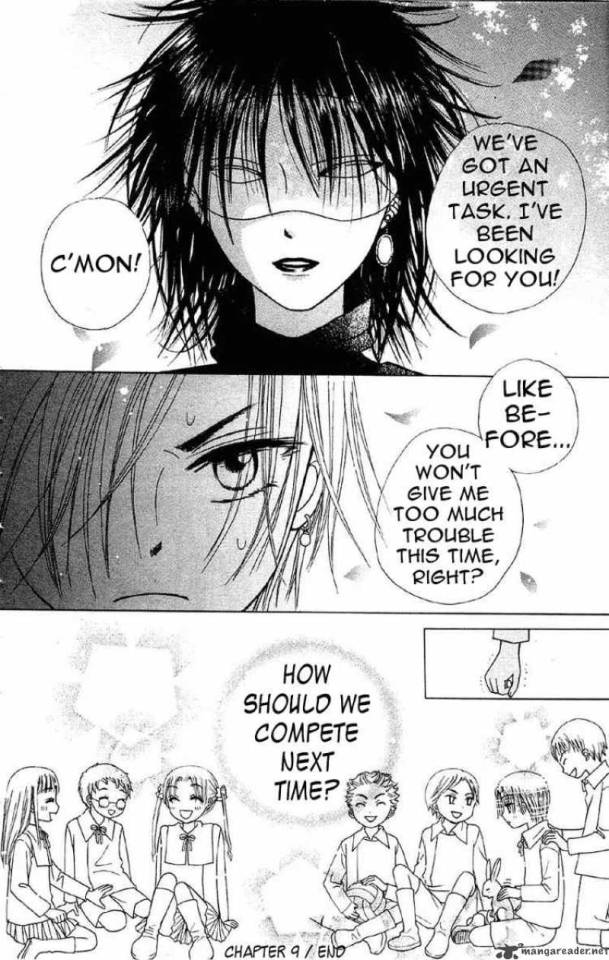
Natsume's life vs. Class B's life. Shadows vs. Shinies!
Natsume goes to get a drink of water after the game, where he encounters Persona, who tells him he has a mission. Right after this, we have a panel of the kids of Class B wondering what they should play next. This is the most obvious visual we will get of the jarring divide between Natsume’s life and that of the rest of Class B. Even Ruka seems to fit in with the other kids, despite trying to align himself more with his best friend. Natsume truly will never be like them, even if he does let himself have fun. He will always have to stop, put away the game, and don his mask for his missions. He can’t be a child like they can; his life is too dark.
In the anime, Persona is hidden in a tree but does not confront Natsume. If anything, he is a mere shadow looming over Natsume, threatening to bring darkness on Natsume’s newfound sunshine. In the manga, Persona’s presence is more potent.
The other children can laugh and play games and the biggest worry they have is what they will play next time. For Natsume, he will never belong with the rest of them, no matter how much they might admire him. Persona is just a reminder that Natsume isn’t like the rest of them.
Chapter Ten
Natsume is in a sour mood from the mission he recently went on, and Iinchou confirms this by saying he’s been grumpy since the dodgeball game. I talked about other reasons he may have been angry in the anime but in the manga it’s indisputable that Persona is the cause.
Thus, he has no qualms telling Mikan how it is: that her grandpa isn’t receiving the letters because they aren’t being sent, and that the teachers can’t be trusted. All of the things Ruka told her before are now coming from the horse’s mouth: this school is a prison. And again he reiterates: he and Mikan are marked, and more than anybody else, they’re treated differently from the rest of the kids. He is, after all, even more isolated from his loved ones than the rest are. On New Years, when everyone gets some letters and cards from loved ones, Natsume is the only one who’s not allowed anything. For him to imagine that there’s a kind-hearted teacher willing to send a letter or two is simply not even worth his time.

Okay but. Like. Nobody asked you, though.
It’s hard to say for sure why Natsume decided to tell Mikan this (other than to plant the seed of doubt in Mikan’s head story-wise). It’s possible that he wanted to help her, but keep in mind that he still hates her at this point. It’s far more likely that he, after a period of missions and consequent depleted health, is not in the mood to tolerate her rose-colored lenses and is much more willing to destroy her idealism and say it like it is, to shut her up.
After all, his threat from the Northern Woods is still relevant: he truly thinks that she will come to regret enrolling at the academy. If nothing else has worked to dampen her spirits, maybe the realization that she has been lied to will do the trick. He's just helping that epiphany along.
Chapter Eleven
The school festival is approaching and Mikan is dead set on making friends with people she wouldn’t normally consider. Naturally, this means trying with Natsume, who burns her hair and tells her to piss off.
Comparing the manga to the anime with this particular chapter is fascinating. In the anime, Natsume has already started liking Mikan. He helps her come up with ideas for her class to do and even encourages her to make up with her senpais when they have an argument. She starts understanding his unique type of kindness and appreciating his presence. It’s a cute episode where they can relate to each other and bond.
In the manga, they still hate each other. Mikan only approaches him because of Narumi’s advice, and because he doesn’t care, Natsume doesn’t mind burning her hair to get her away from him. He is in a sour mood because he can’t participate, made clear when Seaweed-head, Sumire’s brother, makes an appearance. He taunts both Mikan and Natsume for their lame ability classes, particularly the dangerous ability class, because they’re not even allowed to enter the festival. He makes a comment, something along the lines of them being “perfect partners” as a result (exhibit who’s-even-keeping-count-anymore of them being paired off before they even like each other). Natsume burns his hair too and calls him “fried seaweed”, playing off of Mikan’s insult for him.
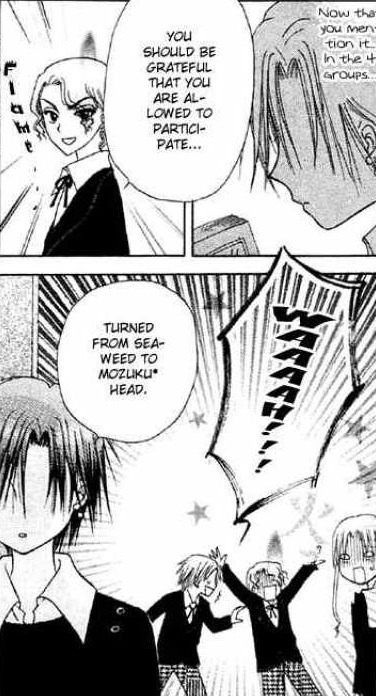
You can't see his eyes in these panels, and then he walks off, so it's almost easy to fall for the idea that he couldn't care less... but we know better.
Mikan later runs into him again, and this is where there is some consistency. In the anime, they are both clearly outcasts regarding the festival. Everyone expects the worst from the special ability class, and the dangerous ability class isn’t even allowed to enter the competitions. In the manga, the same things are true, and they are both aware of this.
Mikan, shocked at seeing him again, drops all her papers. She’s expecting him to insult her or use his alice again, on account of him being a “hateful person”, but Natsume does no such thing. They’re the only ones who would truly get it, being left out, so Natsume says instead that he doesn’t get what all the hype is about. Such a big fuss over nothing. Pathetic, even. He picks up her papers for her, though he doesn’t have to move much to do so. They stand in silence for a moment.

I mean... he didn't have to pick up her papers for her.
Perhaps his hatred for her is actually cooling. She is struggling through similar things as he is, and there’s room for bonding between them, even if neither of them particularly wants to. Whatever the reason, Natsume is choosing to just talk to her instead of insulting or teasing her here. Moreover, the way he says all this, so transparently, as if he wouldn’t have found the festival interesting even if he could participate, is something she can see through. You can imagine Mochu or Sumire nodding in agreement with his statement, maybe even pretending they thought so too this whole time, rather than connecting the dots as Mikan does. Natsume has a similar viewpoint on many things, things that are “all hype over nothing”, in his opinion, like the festival or even kissing that he actually does want to do.
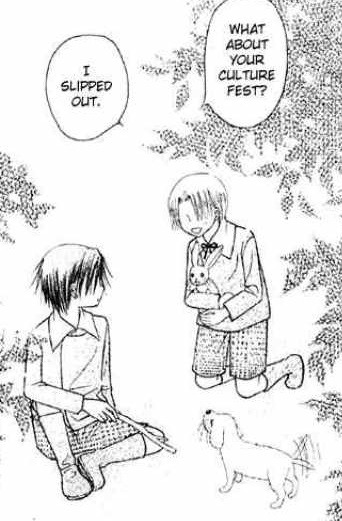
If Natsume can't participate, then Ruka won't either...
At the end of the chapter, Ruka comes to hang out with Natsume, choosing time with his best friend over meetings about the festival. He knows better than anyone probably how Natsume feels, being left out. Ruka will always choose Natsume over everything else, as he always has done, and keeping him company so he doesn’t feel lonely is an easy thing to sacrifice. It is his way of keeping his promise that he will make sure Natsume doesn't feel alone at the academy.
Chapter Twelve
Yet another chapter where the plots diverge from the anime’s version of events, Chapter Twelve is our trip to Central Town. Just like in the anime, Natsume is Mikan’s one condition to go to Central Town, and he is only convinced by Youichi.
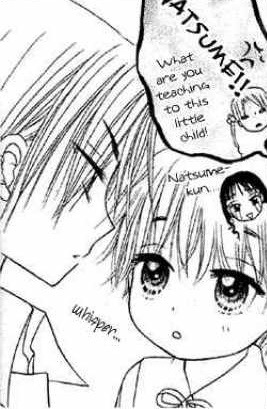
It would have been nice to see the time Natsume and Yo-chan first met, and how Natsume became so close to him since he doesn't seem fond of any other dangerous ability types.
It’s nice knowing that Natsume has people he loves even at the academy, other than Ruka, and things that can make him smile, if even for a brief moment. Youichi looks up to Natsume and Natsume acts like a protective big brother, which is something he’s had past experience with, as revealed in this chapter.
Once in Central Town, Natsume lingers by a jewelry story, where he sees a hair-clip that reminds him of Aoi. It’s something that would suit her, but he can’t get it for her. The reader can see that Natsume is a brother, and that his mystery sister is part of his tragic backstory (oh, to see Aoi animated ;-;). Mikan naturally misunderstands this and then Natsume is absent from the rest of the chapter. It’s almost like he was trying to prove the point that his presence could hardly be felt and wouldn’t make a difference in her trip, something she was distressed about.
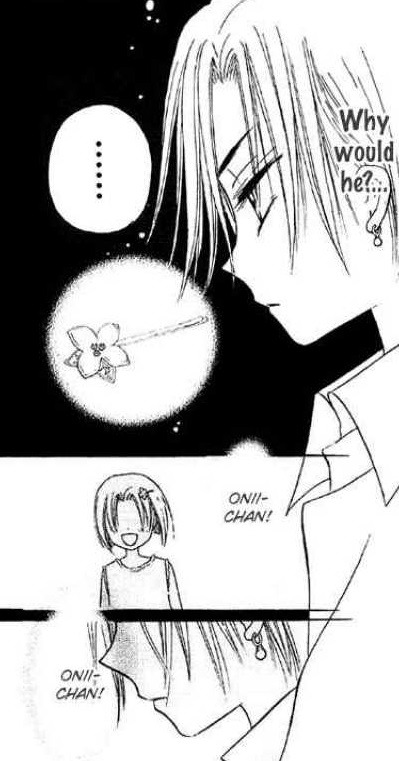
Yeah, so Natsume hasn't seen his sister in two years and doesn't know if she's even safe. For people with close sibling relationships, this is like. the definition of hell.
In the anime, Mikan includes him by giving him some howalon, but in the manga no such exchange occurs. He spends this trip mostly on his own, not even with Ruka or Youichi.
I wonder if the hair-clip was upsetting to him to the extent that he wanted the time to himself, or if it was a more general feeling of not being able to fit in anyway so why even bother, similar to the dodgeball chapter. Either way, he stays gone, and that’s fine. We’ll see plenty of him in the chapters to come.
Conclusion
This is the last edition of analyzing Natsume this way, where he has disdain for Mikan while maneuvering her cheerful little antics. In the next edition, we'll see a little of what Natsume's dark secret life looks like, the one that caused him to be like this. We'll also see a monumental shift in the way he views Mikan and then this will start looking a lot more like a ship essay heheheehhehe.
<- Previous Next ->
#gakuen alice#alice academy#hyuuga natsume#natsume hyuuga#natsumikan#sakura mikan#mikan sakura#my meta#ga#mine#ga meta#ga meta: nm#ga meta: manga#ga meta: manga nm#let's talk about natsumikan#let's talk about natsumikan: natsume#the scene with the papers makes me smile so much#they are FATED. they are NARRATIVELY PAIRED. they are SOULMATES.
13 notes
·
View notes
Text
dESIGN sPELUNKING

I like the way the lettuce is used within the title to give texture to the type. It also alludes to the topic of food within the book. (Great foreshadowing)

I like how the type is interacting with itself. The letters and numbers are working really well together to make the cover page very attractive and eye catching!
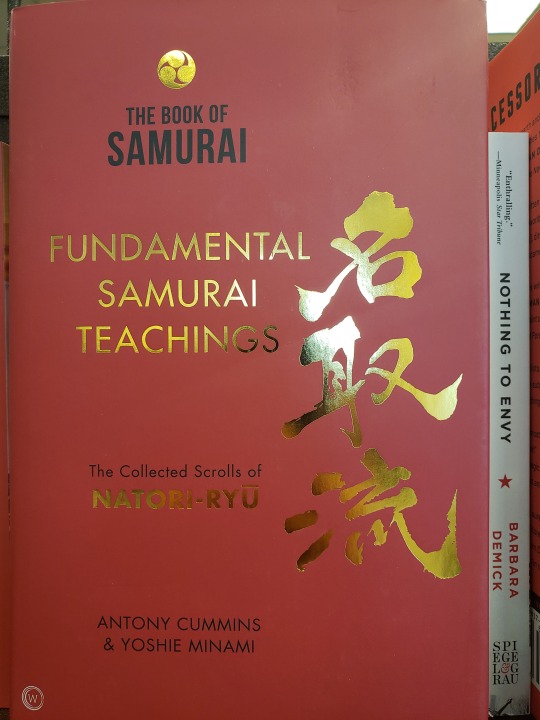
I’ve always had a liking for Chinese/Japanese calligraphy. It’s such a beautiful way to communicate, the lines seem so personified with each stroke!

I like the type having 2 colors. Also the way that the type interacts with the illustration is a great way to tie the title of the book into the cover. These elements don’t feel separated, but infused.
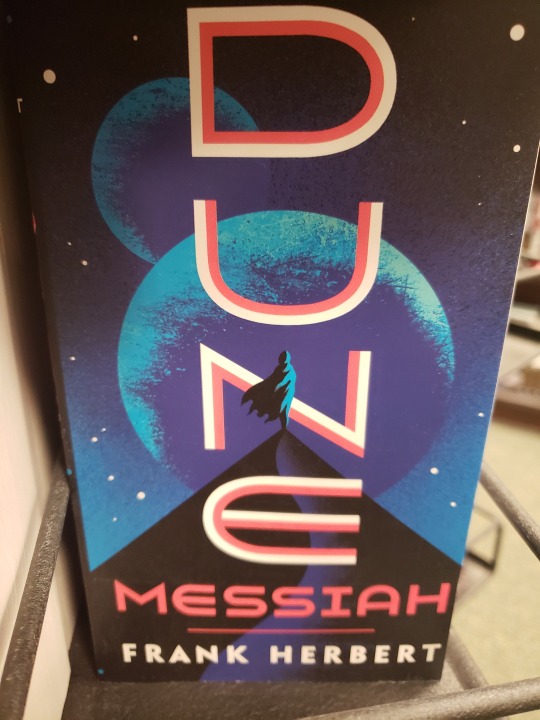
Again I just really like the way that the type and the imagery are working together!
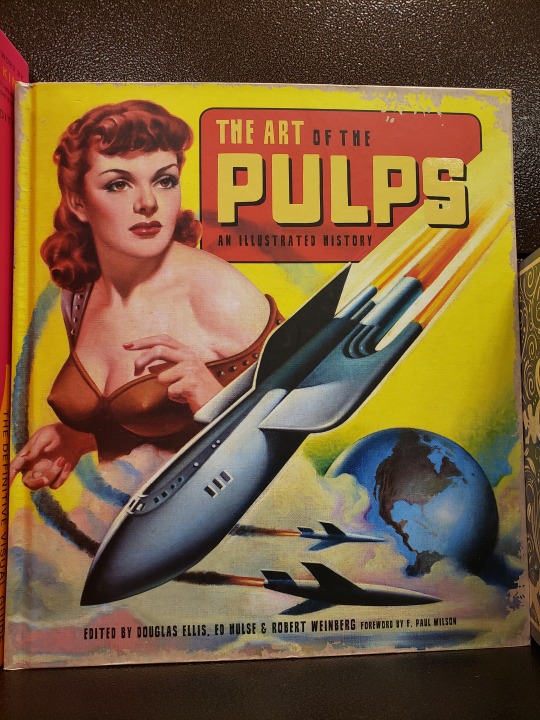
Since the beginning of comics was pulp (smut/inappropriate depictions of humans). I couldn’t help but take note of this particular book. I like the vintage aesthetic depicted on the cover page (I appreciate the lack of saturation, gives off a cartoon realism vibe.

The skull illustration with the vibrant colors and the type that introduces the readers to the book are very stylized. The handwritten cursive font really creates an interesting look. I like the organic shapes and the saturated colors as well.
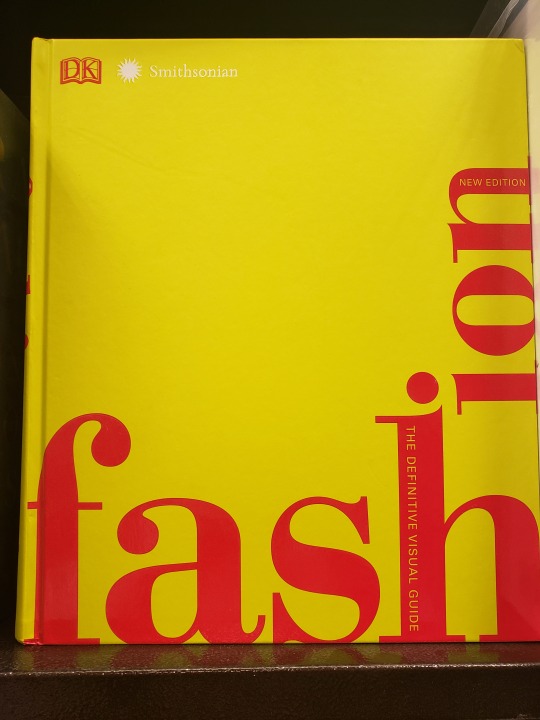
I enjoy the way the type is interacting with the concept of the rectangular form of the book itself. Instead of fitting all the type onto one line, the type runs along the side, almost like water filling into the cup instead of maintaining a specified shape.
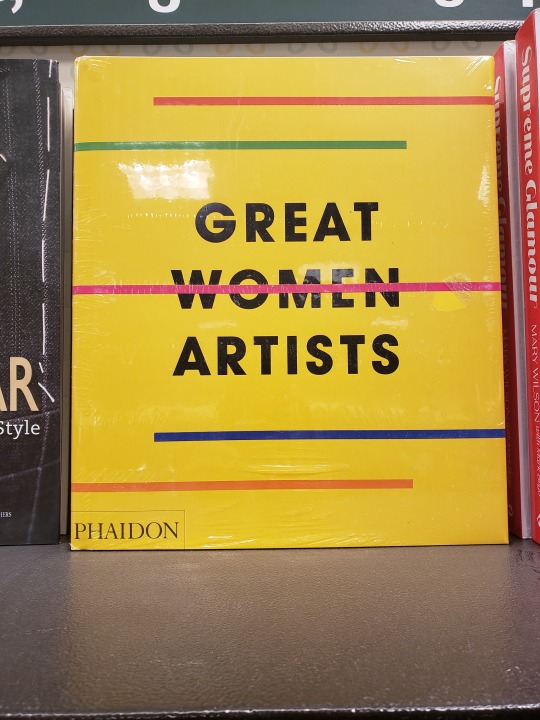
The lines on the cover are interesting, however, I was mostly intrigued by the line running through the word “Women.” I wonder why the designer chose this.

Vinyl covers are always awesome. I love the illustration!
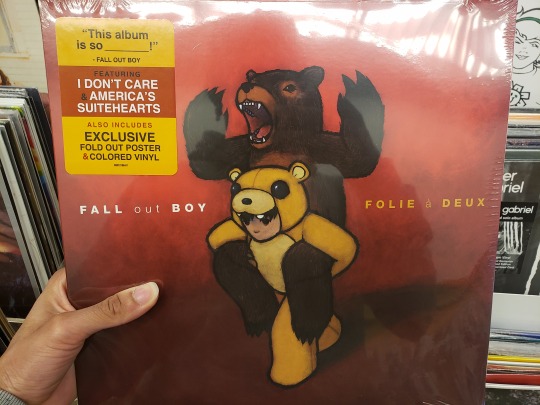
This cover was really interesting because of the way the type seems to float between the two bears. Also the illustration is super adorable.

One of my design role models Jamie Hewlett makes the cover art for the group Gorillaz. I find all of his compositions very inspiring and amazing. The monotone use of the dark, nasty green is working well with the illustration of the band members.
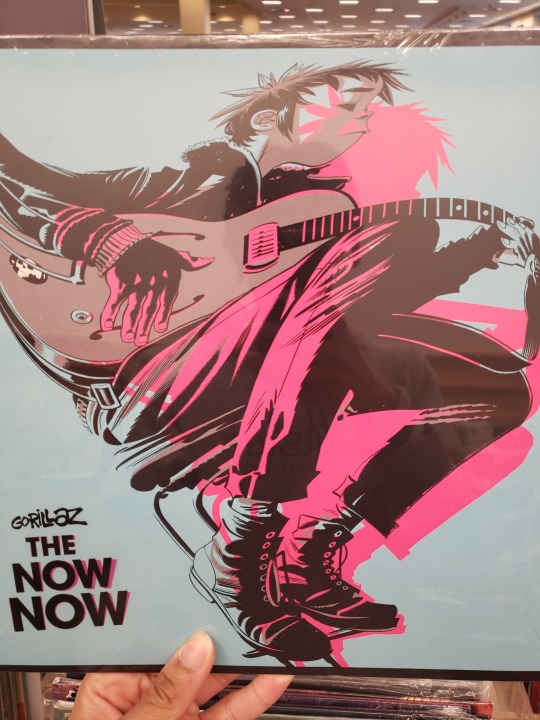
I like the way the colors aren’t completely aligned with the character on the cover. It creates a neon glow that sort of acts as a shadow for the figure and it works well against the light blue background.
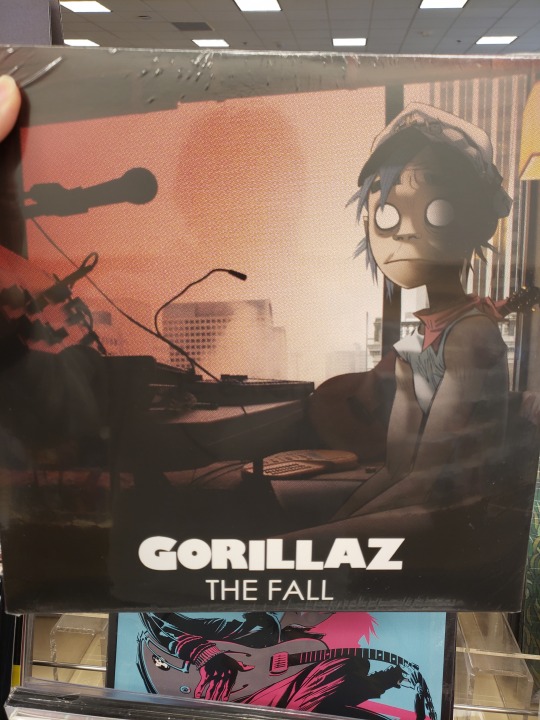
I like the dark theme. A lot of the Gorillaz cover art is more vibrant, but this piece seems more tragic.
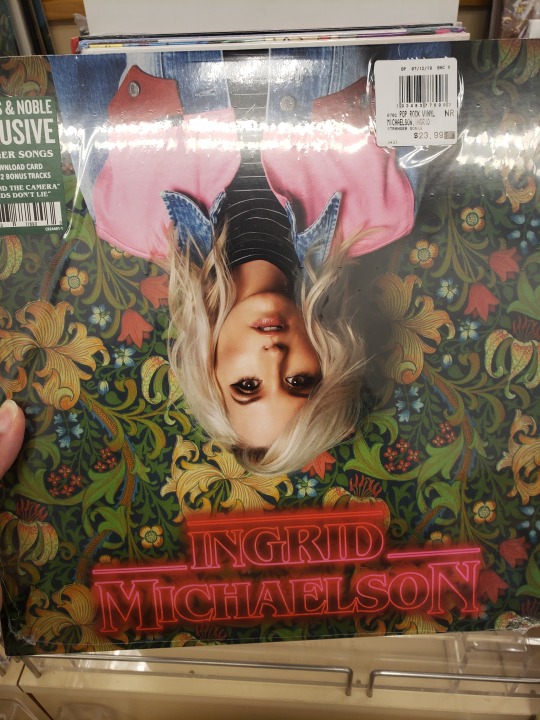
I like that I picked this vinyl up and wondered whether it was upside down or not. The contrast between the artist and the text were interesting and the Stranger Things type/font alongside the pattern design in the background was very interesting. The color choices prohibit any of the elements from being too forward or distracting from the main idea.

I love comic book covers, ESPECIALLY the Flash comics. The lightning bolts that are all over the composition is very pleasing to look at as it spans all over the place. Also the type is very interesting!
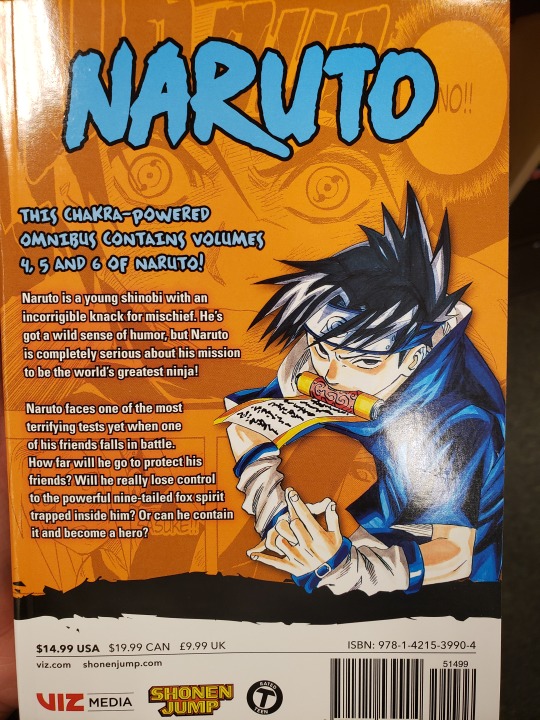
I appreciate the combination of illustration and text! They are related to each other with the amount of space they take up on the cover. Also the font for the word NARUTO is interesting. I like the edges being more jagged. That isn’t explored in a lot of titles of shows or movies.

I love the illustration here. I’ve always been a fan of compositions that take up an entire page. The different characters and their relation to the story of this particular issue are emphasized with their size differences and how they appear. This is a very dynamic illustration.
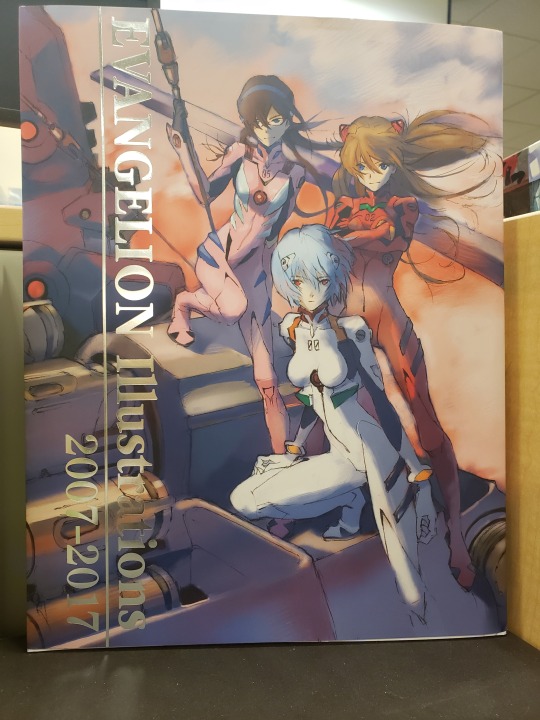
I like the character illustration and the way they’re placed in a scene that adds dimension to the composition. Also I like how the type interacts with the book cover. At one part the V in ‘Evangelion’ is almost perfectly aligned with an illustrated pole that causes movement from the text to the imagery.
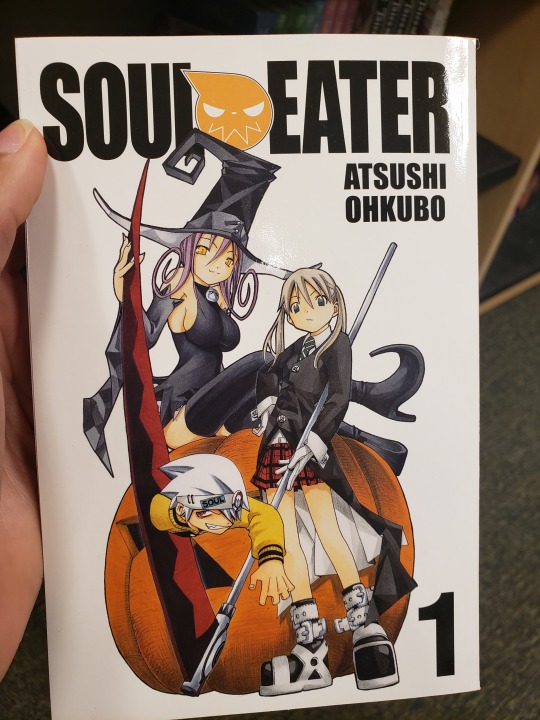
I enjoy the illustration. The character coming out of a scythe is interesting and fun to look at. Also I like the way that the elements point to the type. The tip of the witch hat interacts with the title of the book and so does the edge of the scythe. Also the pole connected to the scythe points at the books’ author.
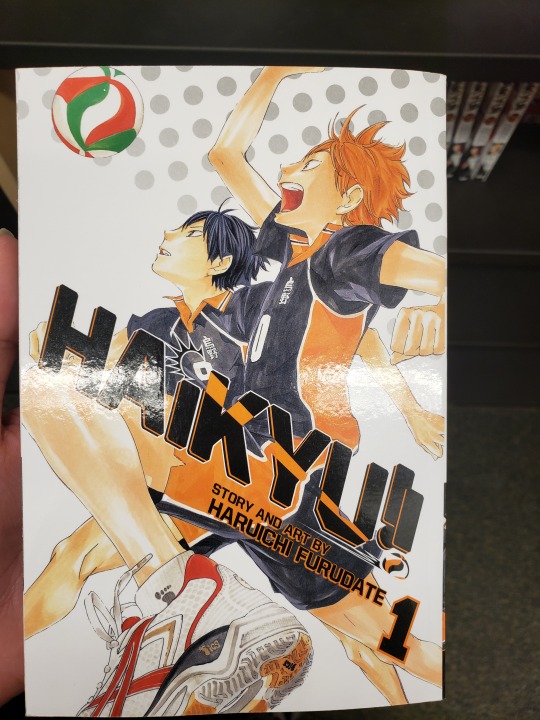
(I like anime and manga) This manga cover uses the illustration to interact with the type in a dynamic fashion. The art and design work together and makes the composition pop!
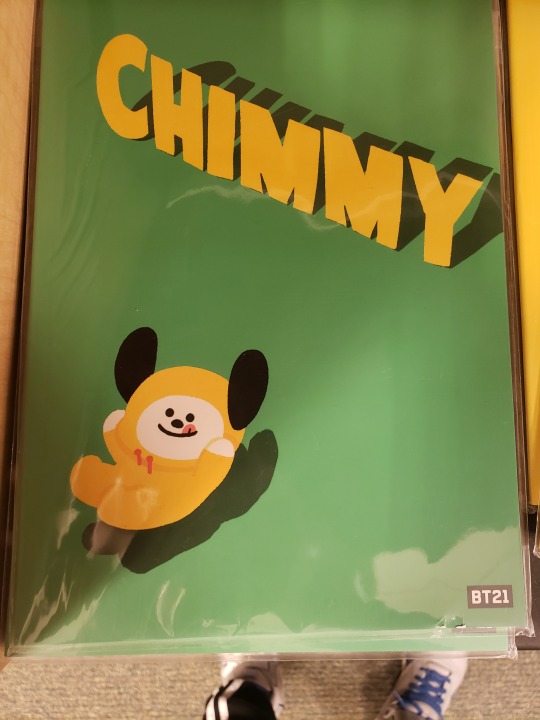
The type is very adorable (matching the character on the cover. Also from an illustrative standpoint. The shadow adds dimension and makes the brighter elements on the page stand out!
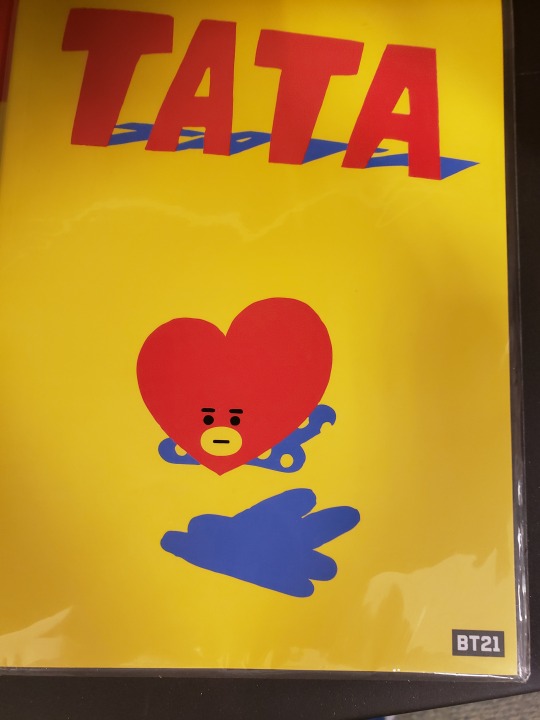
Same as the one before. This one is just really cute and the “blankness” of the cover creates an interesting emphasis on the character and the character’s name.

This detailed illustration of Luke Skywalker is very pleasing to look at. The colors associated with the character stand out very strongly against the stark, dark space background. From the cloak to the light saber and his bright hair and eyes, this illustration is eye candy.

The cursive type with the curvy lines that connect each letter form together and unifies the sense of sophistication for this particular brand is wonderful to look at. I like the lines that branch off of the uppercase ‘b’ and the lowercase ‘s’ at the end of the brand/company name.

I appreciate compositions that utilize type vertically, this is one example. Also, the use of the period after presenting the name of the mall makes it seem more like an announcement. The mall itself introducing itself to the viewer.
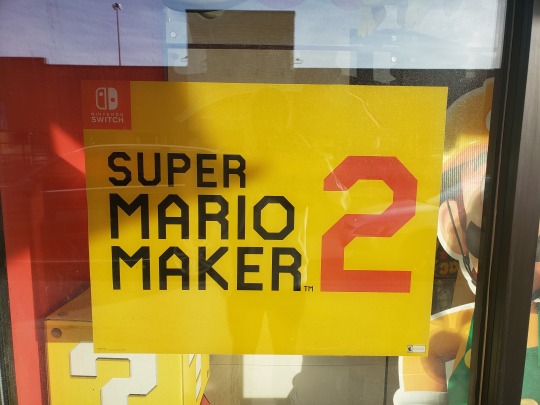
The main reason I chose this poster for Super Mario Maker 2, was the fact that the words are presented in this hamburger fashion, while the number 2 is gigantic next to it. I like the alignment of the number 2 and the title of the game.

This alcohol poster about “Alpha King Pale Ale” is accompanied by a very rich illustration of a samurai and a unique typeface used to present the name of the beverage in a fashion similar to a comic book or manga cover page! The poster uses the entire page covering it in wonderful illustration and a nice sized title to reel in the viewer.
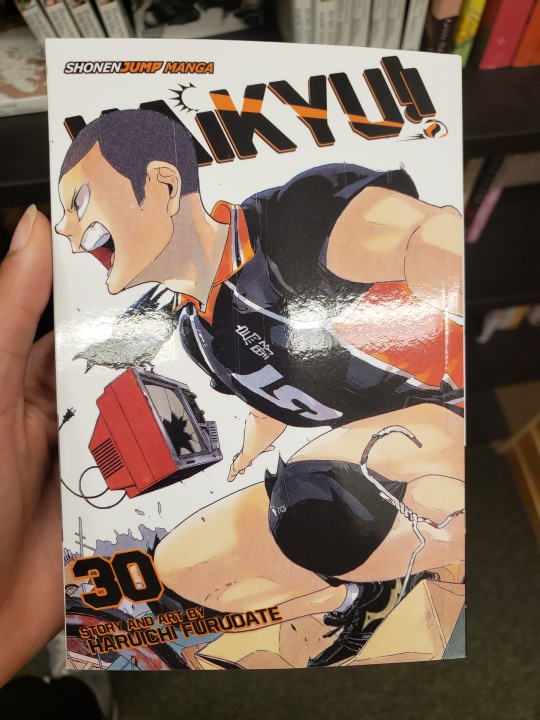
Here’s another manga cover with wonderful illustration. A big dream of mine is to be able to consistently draw very dynamic character figures/poses very similar to this one that covers an entire page and has type working around the illustration instead of the other way around.

Very similar to the flash comic cover presented earlier, I just love the dynamic presentation of the character. The illustration of this man running so fast that lightning is emulating from his body is very chaotic and a creative way to guide the viewers’ eyes around the composition. Also the type seems to move in a place of its own. Not sitting directly on a horizontal line, but flowing on a slant which unifies the sense of movement in the cover.
1 note
·
View note
Text
The Cinema of 2019: A Literate Ape End-of-Year Review
By Don Hall and Brett Dworski
Editor’s Note:
With projects like Star Wars: The Rise of Skywalker, Watchmen, The Mandalorian, and pretty much everything produced for the CW, we are smack dab in the epicenter of the Age of Fan Fiction. The films of 2019 have some nods to this trend with Joker, Once Upon a Time in Hollywood, and Yesterday playing hard and loose with expanding the existing iconography to tell new stories.
We enjoyed a lot of movies in 2019. While not a banner year like 1968 or 1999, the year certainly had its standouts. Here is our end of the year list of the films that impacted us the most compiled by Don Hall and Brett Dworski, both film fans and people with acceptable vision and hearing.
NOTE: These are not ranked because generally, we believe the practice of ranking films is fucking stupid. However, we do rate them from 1 to 5 Apes. Enjoy.
Apollo 11
4 Apes (DH)
There really was a time when America was great. Sure, there was still segregation and violence, the war overseas, the draft, and the host of problems faced by the country but the men and women who took up Kennedy’s challenge to get a human being on the surface of the moon elevated us all. Apollo 11 is a documentary using entirely archival footage of this historic moment when mankind exceeded itself.
Honey Boy
1 Ape (BD)
The anticipated debut of writer Shia LaBeouf is choppy and disappointing. Newcomer Noah Jupe plays child actor Otis—based on LaBeouf—whose drunken father disrupts his recent success. The film’s inconsistencies stem across the plot, casting and performances. The father, played by LaBeouf, flops between abusive asshole and tender daddy by the minute; neither is compelling. Lucas Hedges, who plays Otis as a drug-abusing teenager, looks nothing like LaBeouf or Jupe. And once things get interesting, Otis forgives his pop and tells him he’s “going to make a movie about him.” Very original, Shia. The fact that Honey Boy is based on LaBeouf’s life is intriguing, but the film is ultimately a huge letdown.
Midsommar
4 Apes (DH)
Ari Astor gives us a twisted break up story wrapped in the bloody flowered crown of a horror film set in blinding sunlight. I loved Hereditary for a million reasons. I loved Midsommar for five: Florence Pugh, the bizarre mating ritual, the fucked up mushroom visuals, old people willingly plunging to their deaths, and a dude being stuffed into the skin of a recently slaughtered bear and burned alive.
Dolemite Is My Name
3 Apes (BD)
Eddie Murphy rewinds the clock to his Raw and Delirious days in this biopic of Rudy Ray Moore, a comedian and musician behind the Blaxploitation movement of the 1970s. While wildly erratic at times, it’s also an affectionate and sobering look at the hustle of show business. It took years for Murphy to ditch his affable family-man routine, but it was worth the wait: Dolemite Is My Name cements the raunchy, cocksure comic as one of the greatest talents of all time.
Yesterday
3 Apes (DH)
I wrote about this here. Loved it.
The Lighthouse
3 Apes (BD)
Robert Pattinson and Willem Dafoe are exhilarating in this delirious indie thriller. They play 19th century lighthouse keepers who struggle to maintain their sanity upon learning they’re stuck on an island off the coast of New England. The stunning black and white landscapes of Nova Scotia are overshadowed by Dafoe’s and Pattinson’s constant bickering, farting, masturbating, and binge drinking. The Lighthouse is bizarre, hilarious, terrifying, peculiar… and quite good. You’ll never view seagulls the same way after watching it.
Endgame
5 Apes (DH)
The culmination of nearly two dozen interconnected films all stemming from my Gen X childhood? I’ve been waiting since I read my first Avengers comic when I was ten years old for this and it did not disappoint. Packed with incredibly satisfying moments (Professor Hulk, Cap gets the Hammer, “...on your left...,” and “I... am... Iron Man”) this was the most fun three hours I could imagine that didn’t involve cheese or sex.
The Art of Self Defense
4 Apes (BD)
This deadpan and absurdist comedy highlights toxic masculinity through a ruthless karate class. Jessie Eisenberg plays Casey, a lonely, frightened accountant who enlists in the course after a mugging leaves him hospitalized. Led by a vain and puzzling instructor, the class soon absorbs Casey’s life and brainwashes him to commit barbaric acts beyond self-protection. Although clearly a blend of Fight Club and The Karate Kid, The Art of Self Defense carries an unusual rhythm that separates it from its predecessors—and displays a refreshing kind of filmmaking from newcomer Riley Streams.
Joker
4 Apes (DH)
The politics that suddenly surrounded this were nothing more than distraction. Was it a response to the humorless Woke culture? An Incel Fantasy? Who gives a fuck. It was a film that did something a lot of movies lately refuse to do—it surprised us. It also included an amazing, painful performance by Joaquin Phoenix and, like Logan before it, used the pop culture iconography of the comic book tropes and deepened them in ways that only a bold approach could.
High Life
4 Apes (BD)
Visually-stunning cinematography and a harrowing storyline carry High Life, one of the most daunting films of the year. Set in a futuristic world where death-row inmates are sent to conduct eerie experiments in outer space, High Life is as morbid as it is alluring. The movie—which was made in 2018 but not released in theaters until 2019—resembles a space version of The Shining with its isolation-leads-to-madness concept. While too edgy for some, High Life is one of the most uniquely made films in years.
Once Upon a Time in Hollywood
5 Apes (DH)
Tarantino’s homage to revisionist history, the plight of growing old and becoming replaceable, 1960s Hollywood, and chock full of snappy dialogue, incredible performances, and both a sense of celebration and melancholy makes this one of the best movies about movies ever made.
John Wick Chapter 3
5 Apes (DH)
With next year’s Keanu-mas when they release both John Wick 4 and the Matrix 4 movies on the same day (yes, I will participate fully) the franchise that spawned the newfound love for all things Reeves is absolutely worth noting. Full of that comic book/video game world-building, odd but sensible rituals and oaths and rules plus plenty of head-shot, bloody violence, I sat in a Las Vegas theater with a crowd and we all gasped, laughed, and applauded at the absolute action-porn that is John Wick. Yes, these films are pornography of comic book violence and Reeves is our big-dicked John Holmes.
The Painted Bird
5 Apes (BD)
Those seeking a feel good shan’t see The Painted Bird, a bloodcurdling Holocaust drama seen through the eyes of a child. Petr Kotlár gives a robust performance as a nameless boy fighting to survive the violent societal breakdown in Eastern Europe. In doing so, he experiences one nightmare after another—each worse than the former—and loses hope in human kindness along the way. The beautifully shot black-and-white landscapes are a mirage for the routine abuse the boy encounters, leaving audiences as numb to it as he is by the film’s end.
The Irishman
4 Apes (DH)
Scorsese caps a triptych of films over decades with this much slower but no less magnificent look into the Italian Mafia from the inside/out. Goodfellas is an Irish kid’s ascent and is an explosive young man’s movie. Casino is a Jewish man’s climb up in the Mob and, while still explosive, is a bit more subdued and a decidedly middle-aged man’s film. The Irishman is an old man’s view, looking back, reliving awful and magnificent moments.
Together, the three films mark a masterwork in a genius director’s canon.
Ad Astra
5 Apes (BD)
Ad Astra takes a different approach than most solar-system journeys by exploring the man behind the suit. Brad Pitt is Roy McBride, an accomplished astronaut whose dedication to space has damaged his marriage. When called upon for secret mission to Neptune, the stoic McBride finds he’s more than a government robot, and his ascent to madness results in one of Pitt’s finest performances. Supported by a wonderfully played asshole in Tommy Lee Jones, Ad Astra is as much a family drama as it is a space adventure.
Star Wars: The Rise of Skywalker
5 Apes (DH)
Sure, there were unanswered questions leftover and I really didn’t care for that kiss at the end but I loved this film from start to finish. Completing a story as massive and, in many ways, disconnected, was a tall order and I think Abrams and team did about as good a job as anyone could expect. This will be in rotation at least a couple more times in the next few weeks.
Marriage Story
5 Apes (BD)
Oscar-worthy performances from Adam Driver and Scarlett Johansson drive Marriage Story, a clever, poignant narrative about divorce. Noah Baumbach’s behind-the-scenes view of the crippling situation separates it from movies alike, exploring factors beyond courtroom troubles and custody battles. Marriage Story empathetically—and even comically—shows both sides of the fight, and its effect will last far beyond the screen. Get your box of tissues ready.
Alita: Battle Angel
3 Apes (DH)
Not a Manga-Boy so the inconsistencies with the story and characters didn’t bother me. I thought this was the closest to watching a dramatic video game with some cool performances and great use of camera and technology. It was also the film I saw first as a resident of Las Vegas so that counts for something at least to me.
Parasite
5 Apes (BD)
Superbly written, shot and performed, Bong Joon-ho’s account of class discrimination in Korea is an electrifying and emotional masterpiece. What begins as a lighthearted story of two families—one rich, one destitute—spirals into shocking sequences of deception. It has every element of an instant classic: witty comedy, sexual tension, thrilling violence, social themes and a stunning finale that mirrors the horrors of reality. Calling it the best movie of 2019 isn’t enough: Parasite is one of the top films of the decade and transcends the arc of modern cinema.
#Movies of 2019#Honey Boy#High Life#Parasite#Ad Astra#Once Upon a Time in Hollywood#Yesterday#Marriage Story#Star Wars: The Rise of Skywalker#The Irishman#The Painted Bird#John Wick Chapter 3 — Parabellum#Joker#The Art of Self Defense#The Lighthouse#Dolemite Is My Name#Midsommar
1 note
·
View note
Text

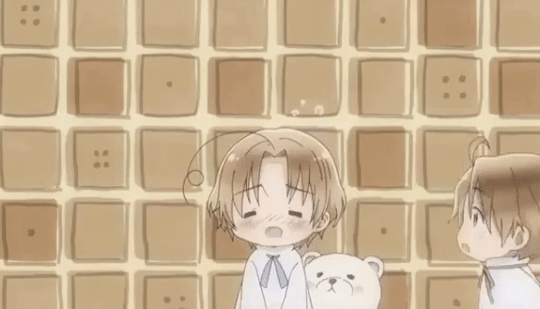
Introduction:
I’ll open things with a quick reminder that the practice of judging characters because they don’t live up to the perfectionist and fictional [unrealistic] standard that we hold them up to is hypocritical. Real life interactions and relationships are full of flaws, blemishes of the character, mistakes, and regrets.
Instead of holding up characters to this impossible pedestal, I believe that we should devote our efforts to appreciating how their life experiences reflect that of our own. Cliché as this saying may be, it’s something that’s always held to be true: no one is perfect. This includes fictional characters.
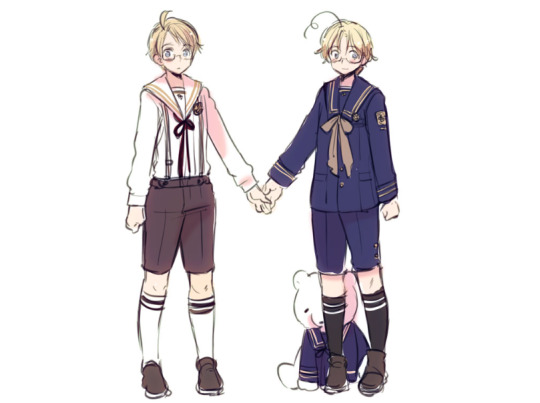
The fact that America and Canada’s relationship consists of several moments of jealousy, selfishness, and resentment is what makes their characters so developed. To get from point A to point B, a required component of character development is to overcome some sort of personal, emotional, spiritual, and physical struggle.
The scenarios in which these characters attempt to negotiate through these hurdles can be messy. Mistakes are inevitable and they will say things that they don’t truly mean. It’s important to recognize this rather than singling out a panel as evidence to prove that a character is “rude.” That’s a very simplistic way of looking at things. Not only that but context and motivation are needed if you’re to understand the true reasoning behind these outbursts, which are far more complex than merely painting the picture of a character lashing out for no particular reason.
That said, I’ve organized the breadth of America and Canada’s relationship into three main themes: Identity, jealousy, and autonomy. Let’s explore them.
Theme: Identity (or the lack thereof)
The most prevalent theme coursing through America and Canada’s relationship is identity. Canada’s struggle to overcome his invisibility primarily rests on his inability to form a stable and memorable self-concept, something distinct that he can use to formulate his own unique identity.
The problem is that he lives in the much larger shadows of England and America, albeit mostly the latter’s.
Ex: America is described as the source of all of Canada’s woes [x].

Ex: Kumajiro advises Canada to find something that shows who he is.
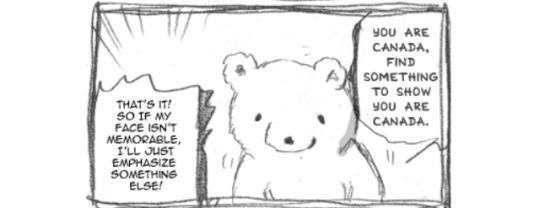
Ex: He’s often mistaken by other nations for America and has to deal with repercussions and hatred that isn’t even intended to be directed at him. In this case, Cuba assaults Canada, thinking that he’s America.

Another problem that Canada has by virtue of his invisibility is that he lacks an assertive presence. Remember that this is an old trope in the manga, so the humour will be a bit more exaggerated than something you would see in recent strips.
Ex: He has trouble “getting in a word” to America. Here, he had hoped to tell America to quit acting so “domineering” to other nations, as he ends up on the receiving end of other nations’ hatred.

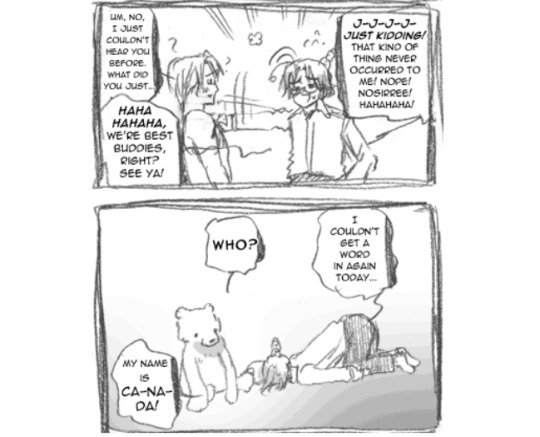
Ex: Canada reflects on how, even as a child, he wasn’t that memorable.
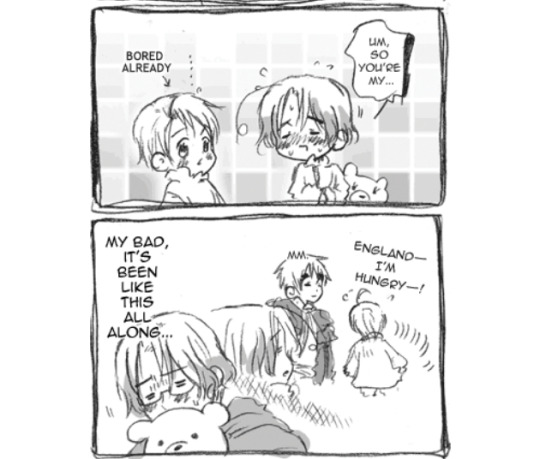
Ex: Canada’s sat on by Russia during a meeting due to lacking a certain presence and charisma.
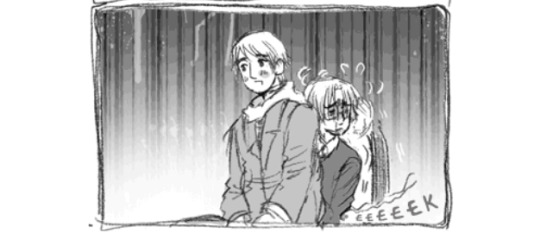
Ex: France and England both don’t remember Canada right away, as there is nothing distinctly remarkable about him. Again, I’ll repeat that the manga is based on stereotypes. Canada’s invisibility reflects how he’s still negotiating his national identity—what he’s known for.

Note: Canada’s anger here is justifiable. I want you to remember that when we look at other examples where he snaps and becomes angry. The emotions don’t simply emerge in a vacuum (i.e., out of nowhere). It’s pent-up emotions that he’s suppressed, having been pushed down, taken for granted, and ignored for most of his life.
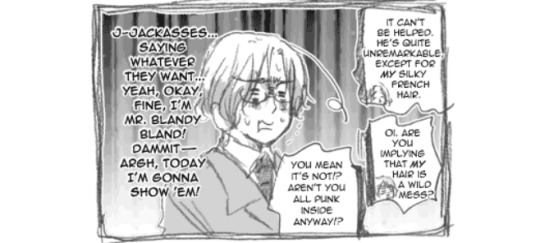
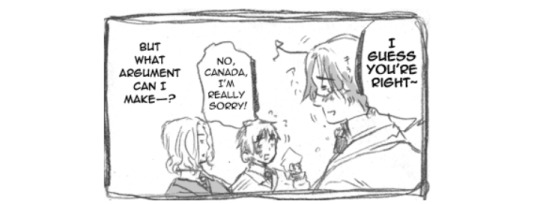
One scene that I’ve noticed has been grossly misrepresented in the past is this baseball scene. The gist of it involves America throwing a baseball too fast and hard for Canada to keep up with. It’s not meant to be abusive on America’s part.

If you look at the panels it’s meant to represent how symbolically, America pushes Canada too hard, operates at a much faster pace, and expects a lot from the latter. In particular, the differences in their paces will be important, as it’s something that Himaruya brings up again in World Stars.

Notice how it’s only after Canada has been pushed enough that he strikes back at America. The two get into a heated argument and both call each other names. It begins with America expecting Canada to do a favor for him and Canada responding that he’s not America’s “handyman,” as in he’s not someone who can be taken advantage of to do the latter’s dirty work.

America’s criticisms fall short when Canada loses his temper and criticizes America’s flaws for three hours straight. It’s enough to make America cry.

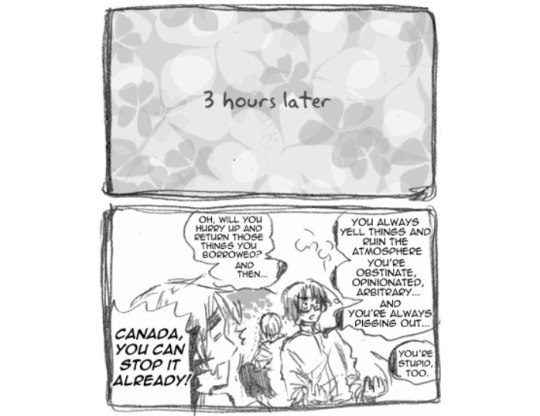
While America may take advantage of Canada, he also acts as Canada’s greatest support. On several occasions, he encourages Canada to form his own unique identity.
Ex: He advises Canada to be more receptive to welcoming immigrants to his country. Canada later becomes known for his multiculturalism.
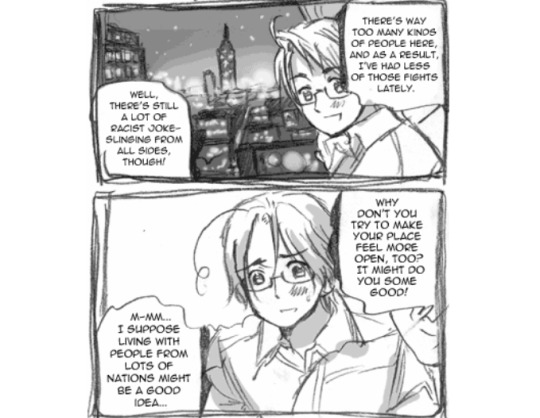

Ex: After Seychelles remembers that Canada’s a member of the G8, Canada overcompensates in his gratitude by dressing up as his stereotype. America tells Canada that he’s fine the way that he is, amusedly remarking how Canada went out of his way to stand out [x] [x].


As mentioned, it’s not just America that causes Canada’s identity (or lack thereof) to be obscured and insignificant. England too overrides Canada’s sense of self.
Ex: Canada at one point once used England as a mouthpiece to negotiate treaties with America [x].
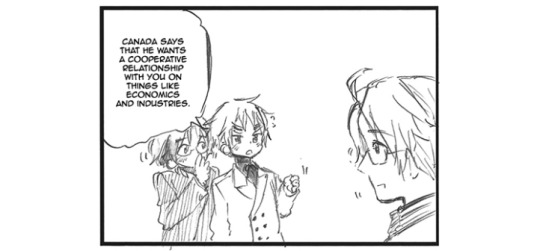
Ex: Post–American Revolution: America attempts to visit England, who fell ill following the conflict. Canada gets angry at America for one; barging in, and two; only worrying about England and ignoring how Canada was also implicated in the war [x].
“I’m Canada! This is Canada!
Can’t you see anything else besides England?!”
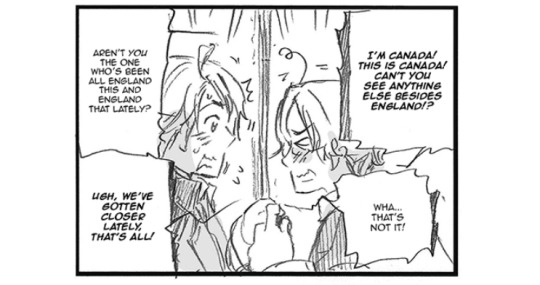
Canada refuses America entry, which ignites another argument. America criticizes Canada’s will and his inability to separate himself from England. In this case, America touches on how Canada eats marmalade instead of maple syrup to appease England.

Once again, it’s only after Canada is pushed far enough that he returns America’s insults. This scene is especially important because it culminates in Canada asserting himself by forcefully shutting the door on America.
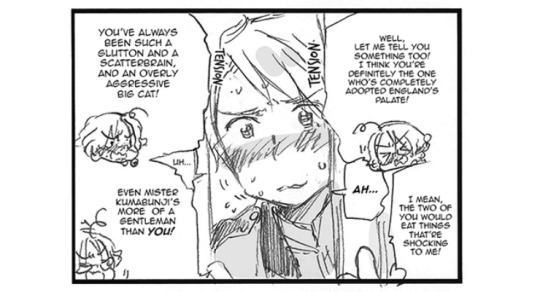

Theme: (Mutual) Jealousy
In light of being ignored, Canada unhealthily compares himself to America. This hopeless endeavor is a major contributing factor to his poor self-esteem.
Ex: Canada thinks that he’s plain and not good-looking. This conclusion stems from comparing himself to America, who’s well-known and described as a good public speaker [x].
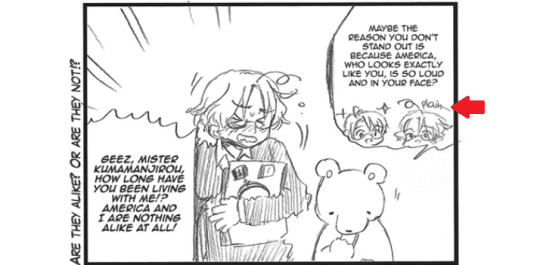
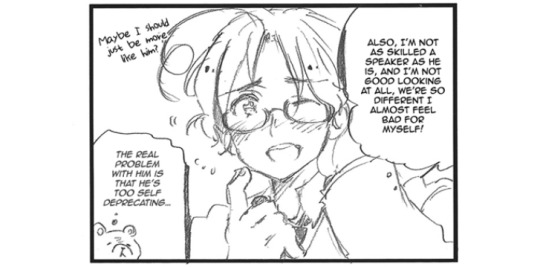
Ex: Canada being overshadowed by America is crudely portrayed when America sticks his own flag on Canada’s forehead [x].
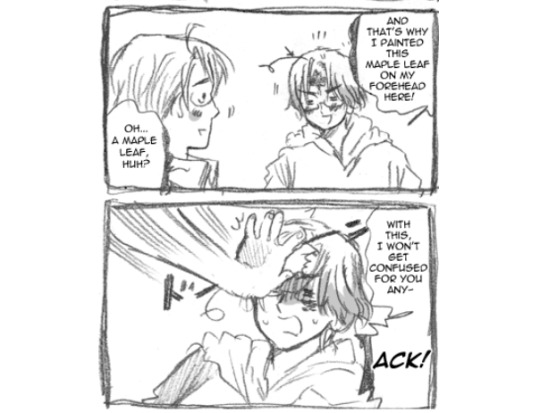
Ex: Canada takes an interest in American pop culture and media entertainment. America doesn’t reciprocate [x]. Keep in mind that Canadian media is a more recent phenomenon, as Canadians used to consume a lot of American content before things like CBC.
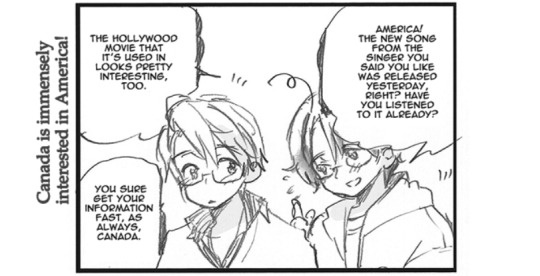
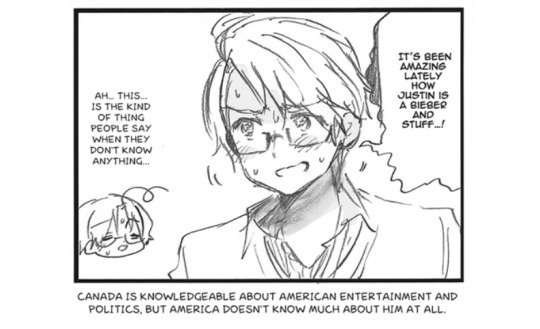
It’s symbolic of how Canadian content is often mistaken as something produced in Hollywood. This is seen in the Hetalia of the Dead strips, where New Zealand mistakes a Canadian film as American.
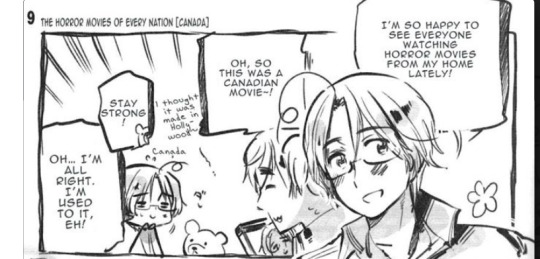
Ex: After realizing that America doesn’t know anything about his pop culture, Canada wonders if America has no interest in him and reflects on their childhoods [x].
Take note of the fact that they play in a field of flowers, as it will turn up as a metaphor in later chapters. Similarly, the idea of America aging quickly is reflected in the fast pace in which he makes decisions and excels versus that of Canada, whose growth and path to independence is hesitant and slow.
This is a brilliant and covert connection made by Himaruya, as it links back to the baseball strip [Fly Canada-san, fly!] where America pushes Canada too hard.


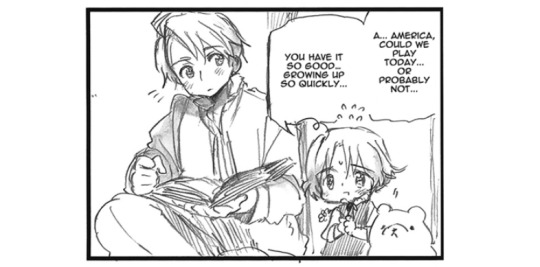
Lastly, it’s crucial to mention that the jealousy is mutual between Canada and America. Canada is jealous of America’s large impression and status in the world, whereas America is jealous of Canada possessing a personality that allows him to get along with people [x].
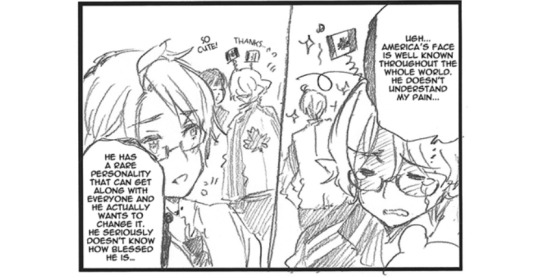
Theme: Autonomy (or the lack thereof)
The final theme I would like to touch on is autonomy. The premise of this layer of characterization is twofold. On one hand, it involves America self-interestedly expecting too much of Canada and pushing him too hard until they both explode and feed each other a piece of their minds. On the other hand, it involves the two of them unequivocally supporting each other, regardless of where their political interests lie.
As mentioned, America is Canada’s biggest supporter. He’s the one who encourages Canada to fight for his independence.
Ex: America urges Canada to gain his independence from England and gets angry when he perceives Canada’s wish not to pick a side as being indecisive [x].
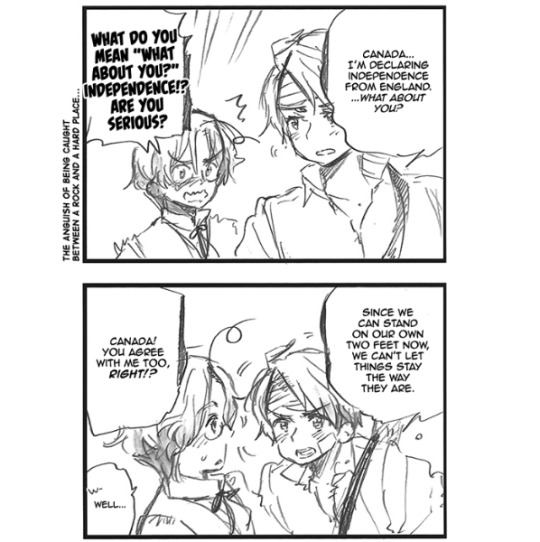

Ex: They speak to each other, despite technically being enemies in the aftermath of the Revolution [x].
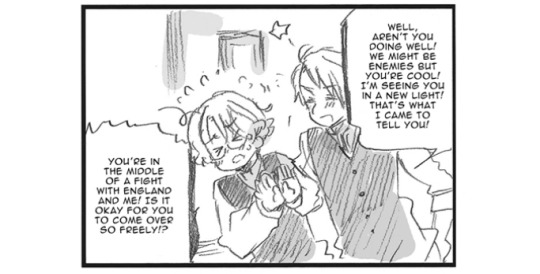
Canada’s sheltered life as a subordinate to England is revealed in his naïve perspective of world politics. He has trouble wrapping his head around how England and America are able to keep trading with each other while in the midst of a fight. Having never been in control over his own affairs, Canada doesn’t recognize that practicality comes above personal issues in politics.
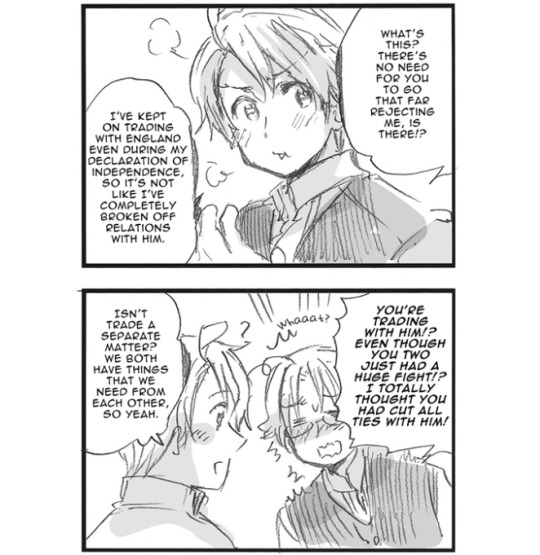
Ex: After improving his relationship with England, America attempts to establish a treaty with Canada. The way he does so is abrupt and rubs Canada the wrong way. He’s both spoken for and spoken over [x].

Another link is made with older strips. America “drags” Canada at his own pace without realizing that Canada operates and does things differently.
America’s opinion that he never voices out loud after Canada reprimands him is particularly important. He knows that Canada is slow and won’t make any moves on his own. It’s because he recognizes that Canada’s grown accustomed to living in England’s shadow.
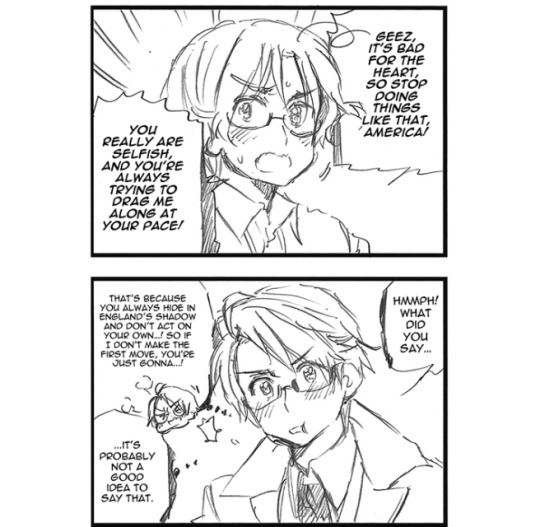
Ex: The second time America asks Canada about his independence, he gets a response…more or less [x].
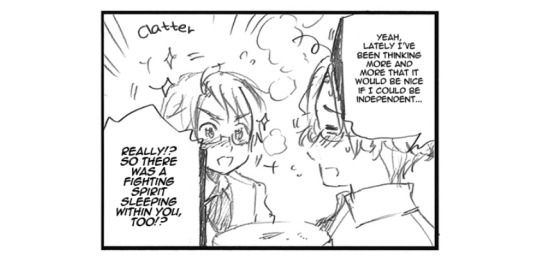
What disgruntles America is that Canada expects to gain his independence by being on good terms with England. As someone who had to fight for his autonomy and has experienced the harshness of the ‘real world’, America can’t control this next outburst. It’s out of concern for Canada’s naïve, childish, and softened perspective of the world.
Remember that childhood metaphor I mentioned earlier? This is it.
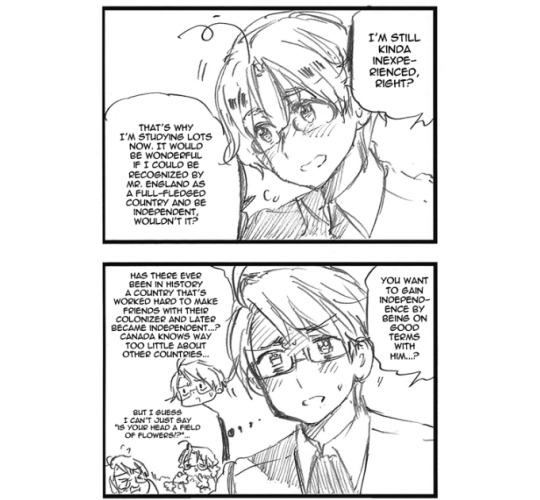
“Is your head a field of flowers?!”
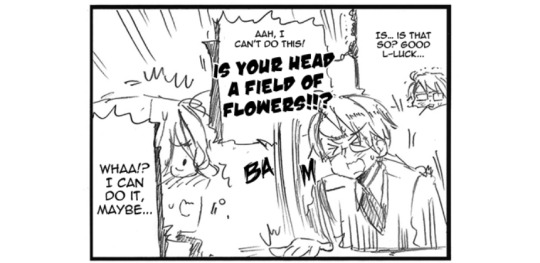
Ex: To get Canada a more immersed understanding of the world, America encourages him to do some travelling instead of simply focusing on domestic issues [x].
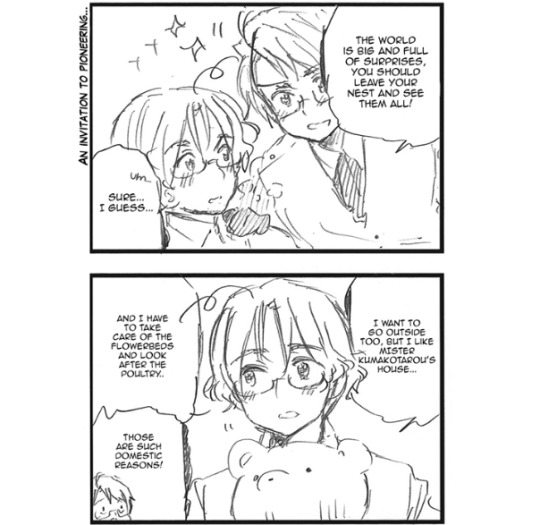
In the same strip, he pushes Canada to become independent again. His rationale is that without England in the mix, the two can be closer. What doesn’t sit well with Canada is America’s self-interest; what he has to gain by improving their relations.
Regardless of how much he wants to deny it, America’s influence on Canada is profound. Canada even recognizes this as he declares his independence [x].
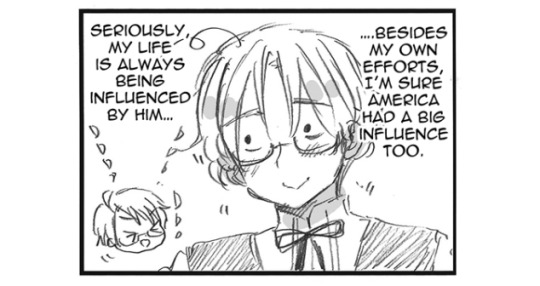
Ex: It’s no secret that America “underestimated” Canada and believed that the latter wouldn’t be able to support himself [x].

On the other hand, when he does visit Canada to congratulate him on his independence, the progress they achieved in their relationship is unmistakably present.
Rather than shout and get into a fight, as illustrated in a sequence depicting what they would have liked to say to each other, the two accept their differences in opinion, enjoy the congratulatory moment, and remain civil. They were always best friends in their hearts. This reconciliation confirms the sentiment [x].


Conclusion:
In sum, even though Canada may still struggle over his identity in modern times due to America’s overbearing influence and frequently get into arguments with America, it doesn’t do their relationship any justice to characterize them as hating each other. America cares very deeply about Canada and acted as his biggest support, regardless of his egotism. Canada too cares very deeply about America despite getting frustrated with the latter when his boundaries are pushed too far. Siblings are siblings, and while they may fight and get on each other’s nerves, the two are still very close.
Why else would they host a cooking show together? [x].

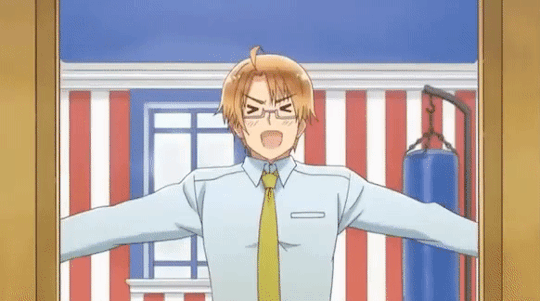
#hetalia#characterization in hetalia#aph America#aph Canada#aph England#longest post to date#yup readmore 's not showing up when it's posted#my god tumblr get your shit together already it's been over a week lmao
260 notes
·
View notes
Text
qb anime of the year list 2018
Anime of the Year 2018 - the year of girls going to aquariums together
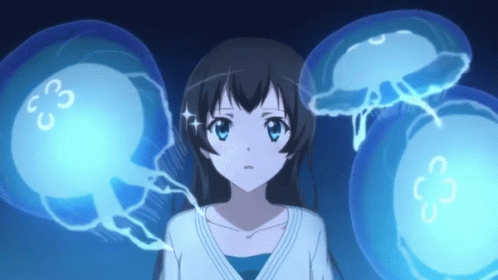
I’ve seen at least one person who claimed that 2018 was the best year for anime in recent memory and I’m inclined to agree. A large majority of my top ten list is shows that I would consider perfect and even shows that blew away what I thought was possible in the medium. It was a revolutionary year and makes a strong argument that anime wasn’t a mistake after all. - qb
#1
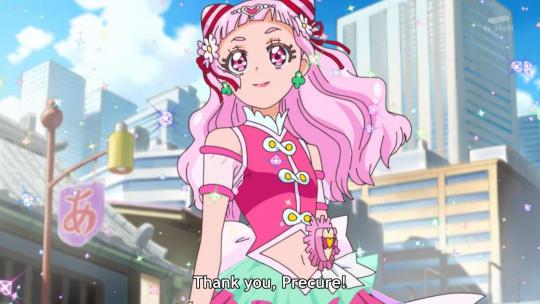
Hugtto! Precure blew away my expectations every week for close to a year. I don’t exactly know what to say about it here, since this isn’t the last time I’ll talk about it for sure. It doesn’t even end in 2018, but it was such a huge part of my 2018 in anime that it would be inaccurate to not include it. The only way I can think to explain Hugtto! Precure is to talk about the Netflix She-ra reboot. She-ra’s a pretty basic modern Dreamworks cartoon, with some interesting ideas thrown in and likable characters, but mostly held back by what they could realistically allot for production. Because of this limitation, She-ra goes hard on a single perfect episode (if you’ve seen it, you know which one) that stands out in a big way and shows the full potential of what they set out to make. Usually, Precure is lucky to get a handful of these stand-out episodes in a season, and most of the time just gets by, due to being an annual series that can never, ever take a break. Normally, the first few episodes of a Precure season can be counted on to be strong, but the realities of anime production being hella tough inevitably catch up.
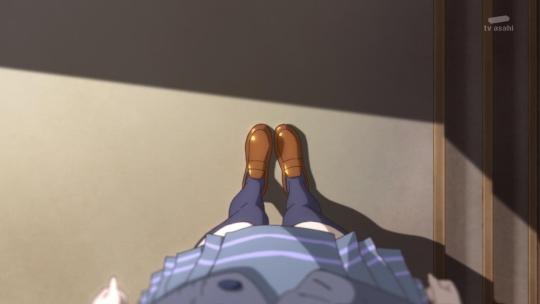
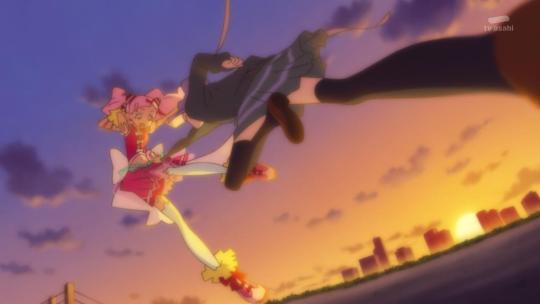

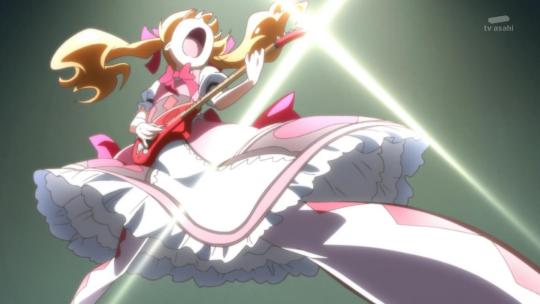
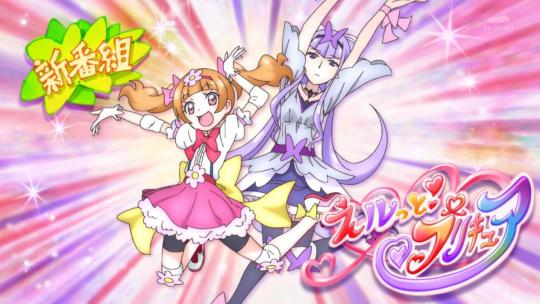
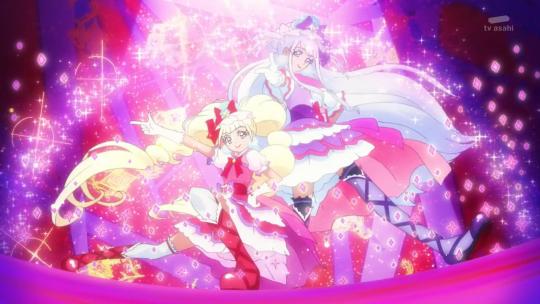
Hugtto! Precure started with an incredible opening arc, then never let off the gas pedal. Nearly every episode of Hugtto is a stand-out, never-before-seen, innovative tour-de-force. The combination of production miracles that resulted in Hugtto has been talked about by me on this blog before, (http://vanilla-blessing.tumblr.com/post/176000267859/hana-is-getting-unstable-a-pink-precure) but the length of time that Hugtto stayed in the paint, going extremely hard every single week with few exceptions, was just absurd. Every season of Precure has one or two peaks, sometimes a good season gets lucky and has even more, the best seasons bat a solid average, but are still expected to be held back by reality. Coming out of the fifteenth season of Precure with a majority of the best episodes in the entire franchise isn’t something that I can wrap my head around, but it definitely happened, mostly in 2018. It’s simultaneously a love letter to the franchise’s past, present, and future made by the biggest Precure fans on the planet, and it’s unquestionably the best season. Hugtto threw what we all knew was true and had accepted about Precure clear out the window, retroactively made older seasons better, watered my crops, brought world peace, ect.
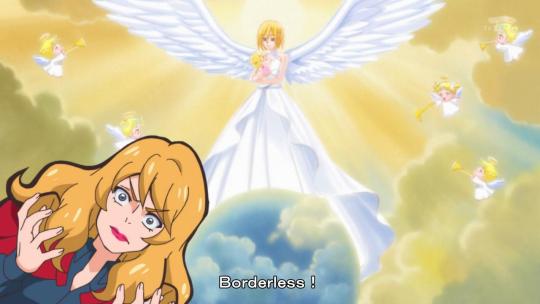
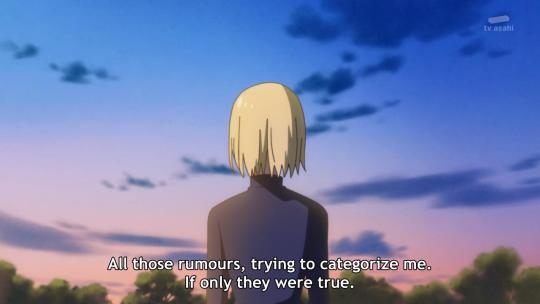
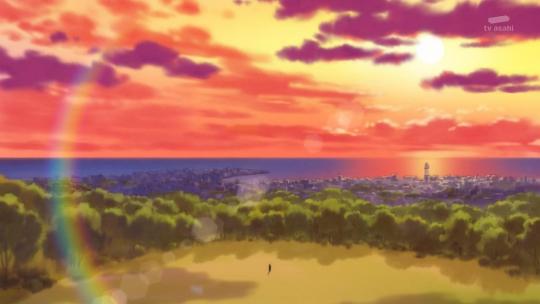
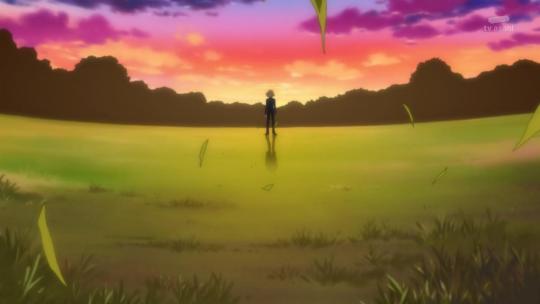
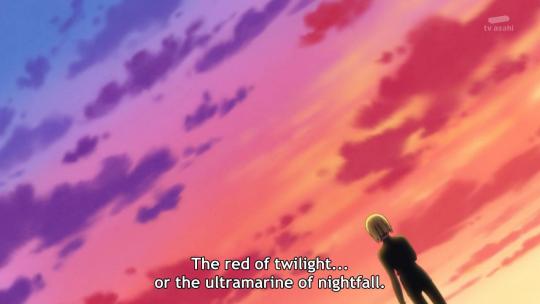
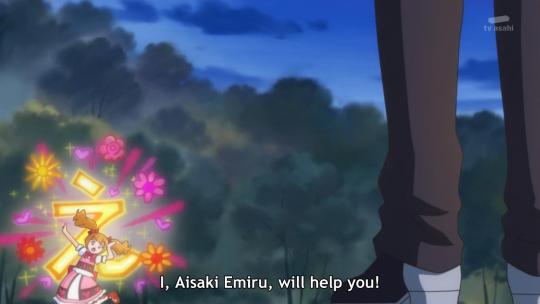
Oh yeah and boys can be cures now.
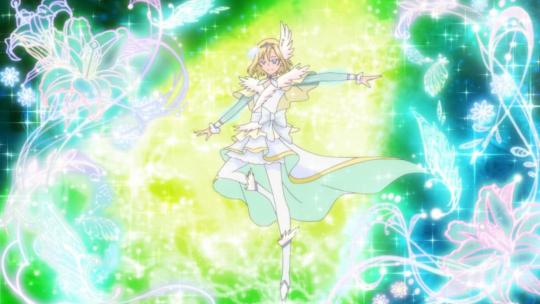
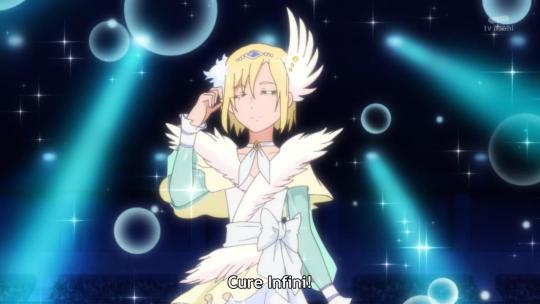
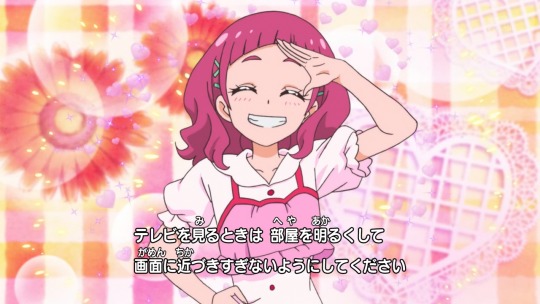
#2
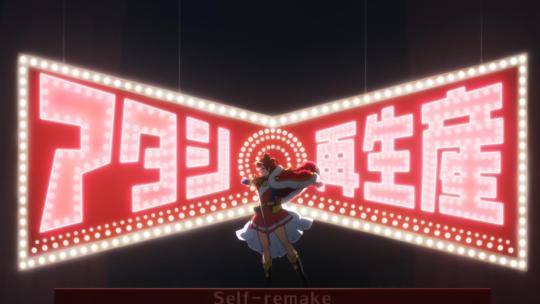

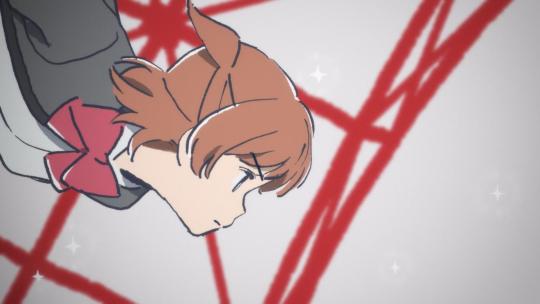

I’m definitely not done with Revue Starlight and this won’t be the last time I talk about it. Revue Starlight essentially carried the Summer 2018 anime season on its back. Starlight absolutely dominated my anime watching schedule; my week was seriously just waiting for and watching different translations and releases with every other show being almost incidental, far less important than waiting for the song lyrics to get translated for an episode I had seen three times already. I won’t get into everything here, since I’ve already talked about it on this blog after all (http://vanilla-blessing.tumblr.com/post/179023723689/subtext-is-for-cowards-revue-starlight), but I need to reiterate that it was such a commanding, unique, stylized experience and didn’t drop a single episode in its entire absurdly high-level production. The only reasonable explanation for this is devil magic, and hell, it was worth it. Revue Starlight is probably in my top 5 anime of all time and I wouldn’t get this list out if I said everything I wanted to say about it. It’s great. Watch it twenty times.
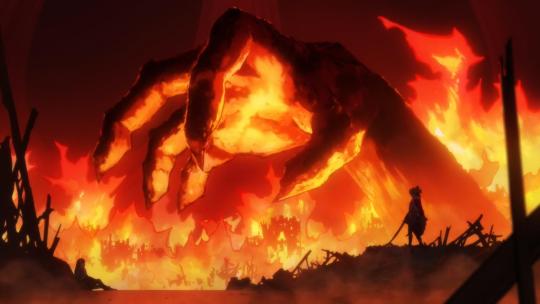
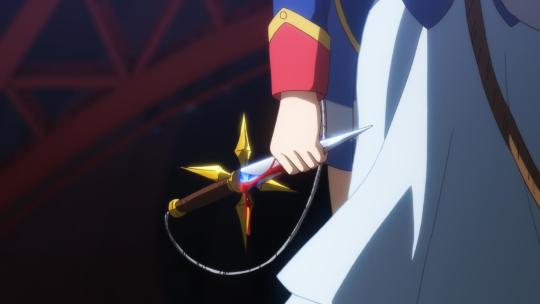
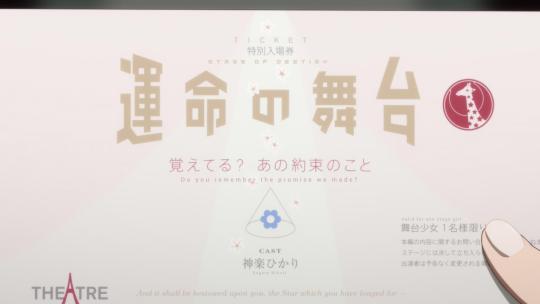
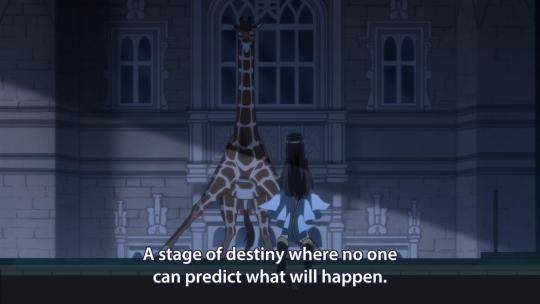
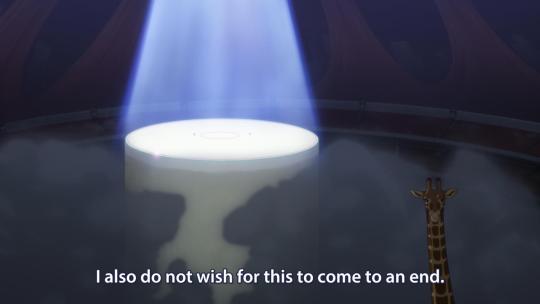
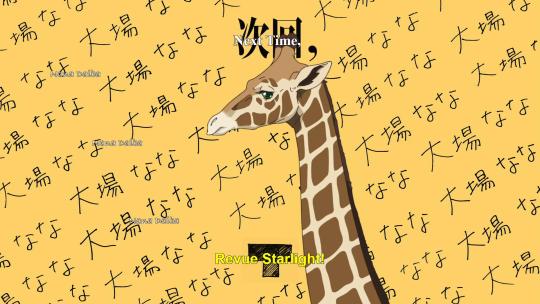
#3

Pop Teen Epic, or Hoshiiro Girldrop, was the most wildcard that has ever been in seasonal anime, and could have been absolutely anything. What none of us predicted was just how much of anything this show would be, encompassing an unprecedented range of artists, voice acting talent, and whatever AC-bu are, each giving their very individual takes on a self-described shitpost comic strip, sometimes covering the exact same material two or three times, with no regard for any sort of cohesion or structure.

Nothing about this idea should have been funded, nothing in Pop Team Epic has any reason to work, and as a straight adaptation probably wouldn’t have worked. PTE spun gold from trash through the raw effort of artists doing their own thing, which captures the original spirit that made the formerly-cancelled comic popular in a way that’s much too intelligent for haters to understand. Also it got a dub, which is the most ridiculously bad idea i’ve heard in my life, and it owns that it happened.
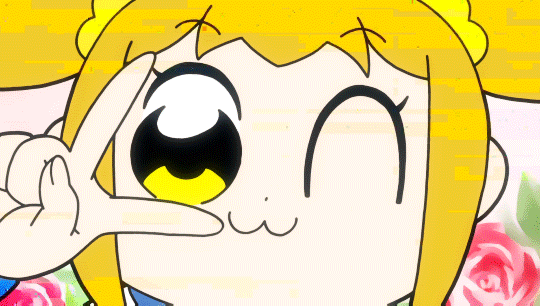
#4

Spider-man into the Spider-verse is legit the best comic book movie ever made. It’s a fun, expressive twist on the most tired superhero origin story of all time, and showcases some of the most sssssssssstyle and raw, real emotion I’ve ever seen in animation. Its particular selection of influences is brilliant and poignant, rising far above the simple fanservice you’ve come to expect from Spider-man. The unrelenting individualistic spirit of this movie will stick with you the longest in the soundtrack, bravely incorporating a side of pop music that you don’t usually get to see in big-budget productions, pulling soundcloud rappers out of their grody (i’m told) dens into the spotlight with equal importance alongside the heroic score. Spider-verse is all about establishing your own unique flavor, and it manages to overwrite every other entry in this cursed franchise with its bold taste.
youtube
youtube
#5
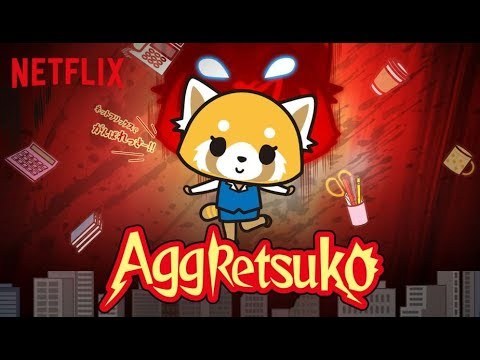
It doesn’t make sense to me how amazing Aggretsuko’s dub is. The impeccable timing of each line, the perfect integration with the comedy, and the optimal length of the episodes are all far beyond what I expected from a Netflix show. It not only converted the original series of shorts that I already had on my top 10 the first year into a godlike longer series I didn’t know I wanted, but went to the effort to bring real metal singers in for the karaoke. Honestly just repeat everything I said in my 2016 list and multiply it by five. I hope they make more. They’re making more.
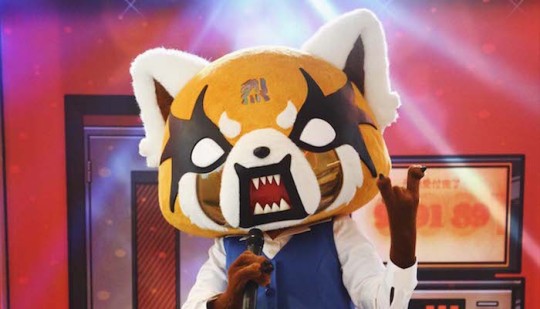
#6
youtube
I was pretty slow to pick up anime in the Winter 2018 season, but I never missed Hakumei and Mikochi, maybe because it was like, the only simulcast on my favorite online anime streaming subscription service HiDiVE. The subs weren’t great, and it certainly wasn’t all that popular, but it was just the relaxing show I needed. Hakumei and Mikochi brought me back to my favorite non-racist parts of the Redwall series of books: friendly animals, delicious foods, alcohol, and rustic songs. I was ready to put it on my list for simply being a cute healing foodie anime, but to my surprise, it had much more in store within its tiny world: stark confrontations with mortality, a shy riverside necromancer, the inexplicable remake of The Raid: Redemption in miniature, fashion trends, frogs, carpenter weasels, carpenter skeletons, ghost celebrations, a country beetle with lofty dreams. The list of memorable people, places, and things contained in the gnomish roommates’ tiny world goes on and on.
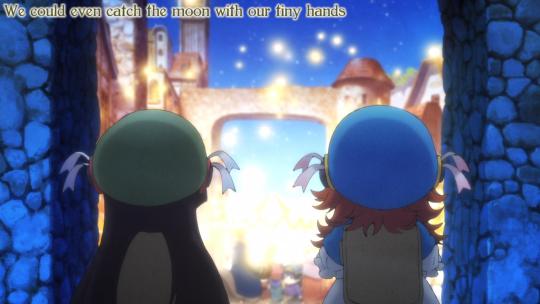
Masaomi Ando’s directing went completely along with the storybook aesthetic, maybe even to an overall detriment, which is exactly the kind of reckless commitment to style I love to see. The distinctive paneling, constantly gorgeous backgrounds, and deliberate pacing perfectly captured the imaginative stories I loved to read as a kid, but with more alcohol, and more sophisticated themes under the surface. Even something anime rarely get right, endings, were perfectly capstoned every week with a short digest that explored more of the history, legends, and very personal lore of their small, unique world. At its core, Hakumei and Mikochi is the calming story of tiny roommates you think it is, but it’s also so much more. They have day jobs and get drunk and remodel their house after it explodes that one time. They gamble dangerously to escape a blizzard, help a photographer give herself a little credit, and rescue their neighbor from a fancy grave of her own making. By the end of the show Hakumei practically built half a town. The collective stories from their everyday adventures build into something tremendous, and it all wraps up on the most perfect ending sequence I could have hoped for, which calls back to every story thus far as a new verse of the show’s central duet is sung. In any reasonable AnimeOTY Hakumei and Mikochi would be my top anime of 2018, but this year, the competition was unreasonable. This show will just have to settle for being the best regular anime of the year.
youtube
#7
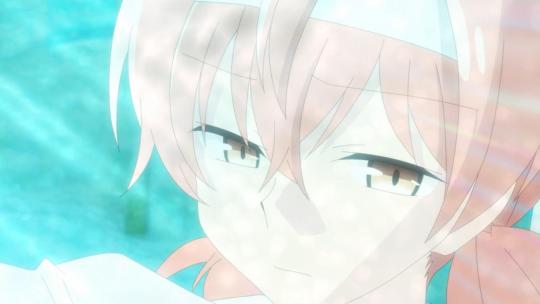
Bloom Into You is an incredible adaptation of an apparently yuri romance manga that raises the bar for anime adaptations in general. I don’t know when, but somewhere along the line I stopped expecting that serious capital R Romance anime would have a distinctive style, and gave up to the notion that there was no demand anymore and a stylized, seinen/josei romance would just never get made. Well that was 2016 and then Scum’s Wish happened which this blog has covered extensively.(http://vanilla-blessing.tumblr.com/post/168842023559/how-lerche-adapted-an-average-trashy-romcom-into, http://vanilla-blessing.tumblr.com/post/168789506264/scums-wish-and-our-messy-uncomfortable) To me Bloom Into You feels similar in concept, as a difficult romantic situation with no easy answers or completely happy people. The main perspective character, Yuu, is among my favorite romantic leads in any series; she doesn’t get romantic feelings, although she wants to, and despite being easily motivated, is kind of dispassionate. Her relationship that she was pushed into with Touko might as well be out of mutual convenience, since Touko doesn’t want to fall in love with someone who would love her back, and Yuu doesn’t think she can.
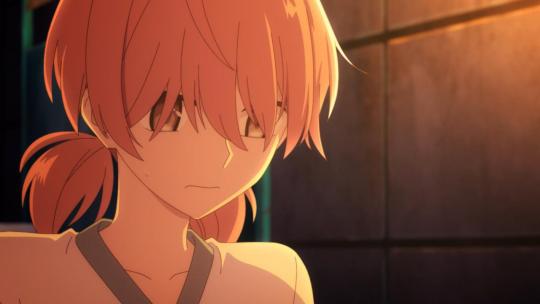
Yuu filters the developments of the series as they grow closer through a very different perspective compared to more emotional leads of usual romance stories, methodically breaking down and considering where she’s at, observing where others are at, before taking an action that makes sense to her. Her growth through the series takes a very different direction than the common dramatic formula; instead of running headfirst into misunderstandings to overcome romantic challenges, she’s compelled to take a step back and position herself in a way that allows her to understand and confront her girlfriend’s issues. The changes that she experiences herself during this process are extremely gradual, but are no less significant to her. Although the dramatic weight of the series is obviously all about Touko, the central thesis of Bloom Into You is to explore Yuu’s complex feelings, and ask to what degree our actions are dictated by our emotions. It’s a heavy topic to be sure, but what makes this anime adaptation special in particular is how the directing and production pull it off, to maybe an even stronger degree than the original material.

Bloom Into You’s most striking and noticeable feature is the incredible conservation of small movements that connect expressions naturally. Minute changes in characters’ faces are vital to observe the almost imperceptible changes in Yuu over the course of the series, and every aspect of the direction is in service of highlighting these subtle moments. In addition, repeated cinematic themes are reinforced over the show’s run, such as the use of light to impart a blinding realization, flower language to inform deeper personalities, even using a literal (not literal) cinema. Symbols such as trains, masks, and mirrors are used constantly and consistently to reinforce the show’s themes, which should be immediately obvious from the opening animation. I’m still kind of stunned that Bloom Into You’s ending theme is such a banger and managed to use an oscillating sine curve in a metaphorical way. These details might be lost without the brilliant layouts, intentionally resembling a stage, which always push the minute differences front and center. As an anime adaptation, Bloom Into You adds so much value in such a subdued, conservative way that it puts uninspired adaptations to shame.
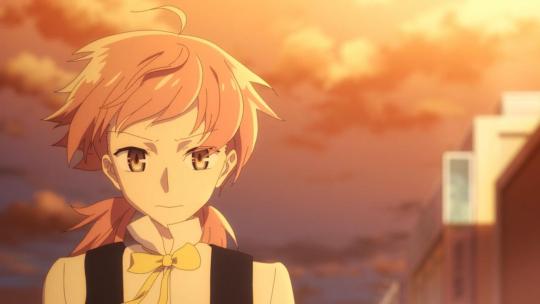
#8

Thunderbolt Fantasy 2 rounded out the year with a good old new-fashioned Japanese-speaking Chinese-Wuxia Taiwanese puppet show. The novelty of this wild series, like, existing at all, is still incredible to me, but I was really wowed by the new characters and the direction the series went in after the already high standards of the first season. Following the outrageous action and fights of the previous season, I did not expect that season 2’s introductory goon would 1. Live past the first episode 2. So quickly become my favorite swordfighter and 3. Have inarguably the most complete character arc of the entire show thus far. The Princess of Cruelty’s struggle against her inner and outer demons in a unreasonably stacked, desperate situation developed her into easily the most compelling character of the season, and the rest of the cast including a corrupt police officer with extremely disconcerting and bad puppet teeth, a ventriloquist rock-lutist, and a nihilist monk each bring their own unique flavors to the table. The table that they throw the puppets in the air from to make the show. All of the new elements of Thunderbolt Fantasy 2 improved an already strong formula even more, and revealed an emotional depth to the series that I’m excited to see developed further. Some people might not call this anime, but those people haven’t seen Thunderbolt Fantasy for longer than 2 seconds. It’s so anime.

#9
I blasted all available seasons of Star vs the Forces of Evil early in 2018, and it was basically my first foray into straight-up American cartoon magical girl, despite watching all the Japanese ones, which was probably an oversight on my part. That’s because Star Versus is really good, and provided a flavor of magical girl I had been missing out on. I could talk about the excellent sparkle witch aesthetic of the show, fluid animation, and hilarious comedy, but I’d rather spend this blogspace posting Star Butterfly faces.


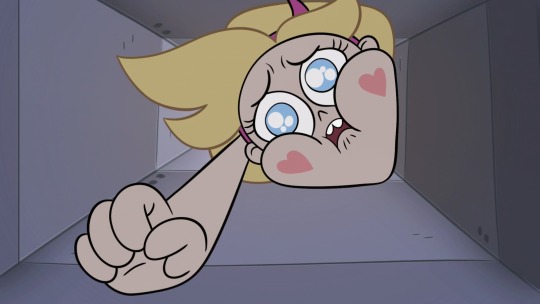
#10
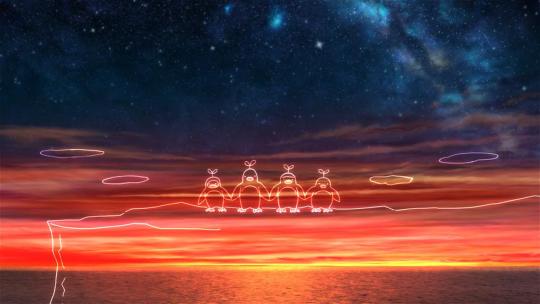
A Place Further Than the Universe, or YoriMoi, or my preferred moniker That Antartica Anime, wasn’t on my radar until well after it had finished airing, but it stuck with me for most of the year. Although it’s definitely melodramatic at times, it utilizes this tendency in exactly the right way to enhance the individual characters’ emotional arcs. Even though I was personally sort of taken out of it for many of the girls’ personal trials, :penguin emoji: is obviously thoughtfully written and carefully constructed, and especially knows how to orchestrate an immense emotional reaction with pitch-perfect timing. If there’s one particular aspect this anime has absolute mastery over, it’s hitting that perfect note and cue to create a memorable narrative climax. And for all my bellyaching about not fully relating to some of the characters, Miyake is definitively the #1 qb-relatable character of the year.
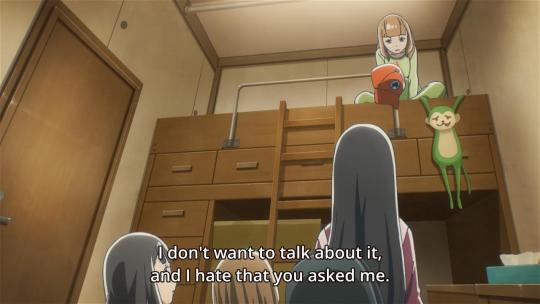
Here’s the rest of my list. Don’t @ me about it because if its not on my top ten then it doesnt really count anymore i dont make the rules thats just how it is
11. Yuru Camp
12. Hisone and Masotan
13. Asagao to Kase-san
14. Devilman Crybaby
15. After the Rain
16. Planet With
- friend of the show @queuebae on twitter
That’s why the 2018 anime of the year award goes to Kaiju Girls 2.
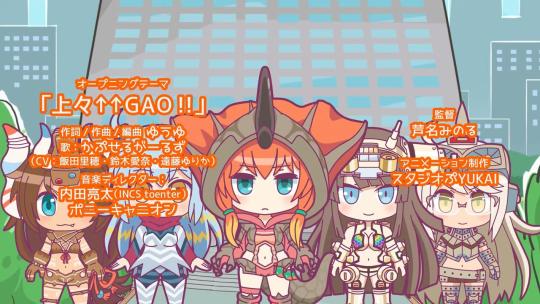
#top ten anime 2018#top ten pop team epics#pop teen epic#pop team epic#hoshiiro girldrop#poppiteppikiu#popttippiku#bob team epic#bob epic team#PTE 2018#Pop Team Epic Season 2
10 notes
·
View notes
Text
Sympathy for the Devilman: The Legacy of Go Nagai's Magnum Opus
I've always had a thing for villains. Unlike my brothers, as a kid I'd always choose the "bad guy" action figures. If they went for the ninja turtle Leonardo, then I'd go for the uber-buff Super Shredder. I personally identified with villainy because of how it connected to the idea of "evil." I personally see evil as a generalized concept that expresses antagonism toward violent and dominant societal structures. Due to a coercive religious upbringing, I now see how my younger self unconsciously found ideologically-oppositional comfort in "evil" art. This eventually led me to one of my most cherished pieces of fiction: Devilman.
Devilman has left an indelible mark on manga and anime creators over the last few decades, inspiring major industry heavyweights such as Hideaki Anno, Kentaro Miura, and Kazuki Nakashima. The series was created by Go Nagai, a manga auteur also responsible for Mazinger Z, Cutie Honey, and Violence Jack (which is a Devilman sequel). Although Devilman retains much of the explicitness native to Go Nagai's usual fare, it uses these graphic elements uniquely to deliver a haunting, unforgettable, and compassionate message.
Let's explore the surprisingly relevant political and social significance of Devilman, along with a few of its animated offshoots. Read on but be forewarned, this article contains major spoilers!
Devilman (original manga, 1972)
via Seven Seas Entertainment
The Devilman manga is a dark antiwar narrative in deep contrast to the standard monster-of-the-day, "evil fights evil" set-up of the anime (which ran at the same time as the manga). Ryo Asuka — who turns out to be Satan, the leader of all demons — helps convince the world that anyone dissatisfied with the status quo could turn into a demon and needs to be killed. Every nation starts a war with each other, and Japan creates the "Demon Busters" to murder anyone suspected of being a demon. This plot twist is the most explicitly political angle in Devilman and a clear critique against the genocide of marginalized peoples. One page features a taste of the global hate brewing around the world: a collective white desire to murder Black communities, the renewal of German anti-Semitism, and hatred for any protestor. There are also many moments that display the horrors of historical genocide when Akira and Ryo travel through time.
Devilman builds additional nuance around this theme with Ryo's character. In the manga's final scene, Ryo describes how demons were once oppressed by God, and that they in turn preyed upon humans in the same way that God preyed upon demons. Ryo recognizes that he continued the same cycle of genocidal hate and marginalization he once suffered. This is a striking moment that functions as a cautionary warning against abusing imbalanced power dynamics, and how even once marginalized groups are still capable of enacting horrors against those with less power.
via Seven Seas Entertainment
Ryo's character also made a groundbreaking stride in the representation of marginalized gender and sexual identities. His true form as Satan is easy to interpret as trans, possessing emotional, mental, and physical traits that defy the standard gender binary. The manga also makes it clear that Ryo considers Akira more than a friend, and is actually in love with him. Amazingly, Go Nagai does not use Ryo's trans-coded self or his queer love for Akira as fodder for insulting or disrespectful commentary from other characters. Ryo's gender-variant form is certainly mentioned, but it's never negatively framed or conflated with his murderous attitude toward humanity. Additionally, the manga never suggests Ryo is evil because of his romantic feelings for Akira (a simple, yet important distinction). It feels all the more impressive when you remember that this was made in 1972. Devilman's subversive portrayal of non-normative gender and sexual identity could still be considered groundbreaking even by today's standards.
Devilman OVAs
The first OVA, The Birth, covers Ryo and Akira's discovery of demon existence, with a very brutal early sequence that shows the bloody survival-of-the-fittest origins of life on Earth (which beautifully expands upon and mirrors the same sequence from the manga). It concludes with a gore-soaked finale where we see Akira's fateful transformation into Devilman. The sequence is filled with face stabs, top-notch body horror, and decapitations galore as Devilman rips apart demon after demon in a nightclub setting.
The second OVA, The Demon Bird, had the same crew that worked on the first OVA and contains a very similar feel. This OVA is more action-oriented than the first since it doesn't spend time on the build-up and exposition leading to Devilman's initial appearance. The animation and art design is probably even better than the first episode, which is most notable during the fight with Sirene. On a side note, the Manga Entertainment dubs for these first two OVAs are absolutely essential if you're seeking a fun evening with fellow anime nerds with a decent sense of humor. Their typically sleazy dubs — where Manga Entertainment excessively hyped up the seedier, more "adult" side of anime in order to market their products as wildly different from cartoons for kids — contain an assortment of unnecessary profanity and generally crude dialogue compared to the Japanese source material, to great comedic effect.
The third OVA, Amon: The Apocalypse of Devilman, is based on Amon: The Darkside of Devilman manga, an alternate-universe offshoot by Yu Kinutani. This OVA contains a reworked version of the end of Devilman and has a much darker edge compared to the first two OVAs. This entry in the series has an ugly, grim quality to it – such as the horrific depiction of Miki and her brother getting slaughtered by an angry mob — that initially felt off-putting to me. I started to enjoy it more on subsequent viewings however, when I remembered that, well, the entire Devilman mythos is pretty damned bleak in general. I think the desolate mood would have been more bearable had Akira felt like the compassionate, tragic hero of the manga.
Actually, overall I'd say that Akira's portrayal is one of my biggest complaints about these OVAs. He displays a cold lack of care for human life — like in the Demon Bird when he unconcernedly tears through an airplane while fighting Sirene and allows its passengers to presumably plummet to their deaths — that for me, offsets one of the biggest strengths of Devilman's core: that although Akira has the body of a demon, he never loses the tender heart of a human. With that in mind, let's explore Devilman Crybaby.
Devilman Crybaby
Devilman Crybaby is my favorite animated incarnation of Devilman, period. I might be in the minority with that opinion, but I think there's a lot to love. Masaaki Yuasa is already one of my favorite recent anime directors — Kaiba, Mind Game, and Lu Over the Wall are highlights — so it's no surprise I'd be head over heels for his take on a classic Go Nagai story.
Yuasa impressively shifts the '70s setting of the original into modern-day Japan: The group of surly highschoolers from the manga are replaced with rappers and smartphones are everywhere. In the hands of a lesser writer, a modern setting would be no more than a cosmetic, surface-level change of scenery to an already-written narrative. In contrast, Yuasa avoids this trap by using the modern setting to make incisive social commentary relevant to our times: social media is the means for both horrendous and beautiful moments in the show. It leads to Miki's murder when she posts on Instagram to defend Akira, but also serves as the online catalyst that unites Devilmen across the globe (in contrast to the original manga, where a set of demon-possessed psychic monks unite the Devilmen). Yuasa explained this in a 2018 Japan Times article:
"Today's situation is a lot closer to 'Devilman' than it was when Nagai wrote it in the '70s," he says. "The popularity of social media means people are a lot more connected, for good and bad – like someone getting shot over a video game. We learn about unarmed black people being killed by police, people being tortured and the rise of nationalism in politics. In Japan, too, where a lot of problems are openly blamed on foreigners.
"But it can also help spread good that we wouldn't otherwise know about. We see people coming out as gay or trans on social media, and there's a greater opening up and acceptance of different opinions and lifestyles."
Another beautiful aspect of the show is how Yuasa amplifies the queer elements present in the manga. Ryo and Akira's relationship feels even more loaded with romantic undertones, and Yuasa also introduces two queer characters unseen in the original manga. One of the characters is named Miki Kuroda, initially portrayed as a jealous antagonistic foil to the Miki we all know and love. Miki Kuroda changes as the episodes progress and she becomes a Devilman, and we eventually see her sacrifice herself in an attempt to save Miki Makimura, who she confesses her love to before dying. It's refreshing to see a queer woman represented in a story that previously had none, and incorporated in a way that feels organic and thoughtfully integrated within the larger narrative.
In contrast to the Akira of the OVAs, I absolutely adore this incarnation. Yuasa did a stellar job showing not only Akira's horny goth-jock side but also his compassionate traits. As the name implies, there's a lot of crying in Devilman Crybaby, and Akira is responsible for at least half the tears throughout the brief 10-episode series. Akira evokes such intense compassion and cares for people around him, which is a noticeable deviation from his cold demeanor in the OVAs. The human heart at the core of Devilman is on full display here, taking the emotional elements from the original and turning the volume up to 11. Though the art style and setting might be drastically different from what you'd typically expect of a Devilman remake, Yuasa did a masterful job honoring the source material while injecting it with fresh life and even fresher modern resonance.
What other aspects of Devilman — or its many incarnations — did you find important or interesting? Let me know in the comments below!
Do you love anime? Do you love writing? If you have an idea for a features story, pitch it to Crunchyroll Features!
6 notes
·
View notes
Text
Spring 2019 First Impressions
The Spring list is late as usual (is it usual if it’s only the second instance?), but at least I’m closer to the beginning than last year. I’ve reached 50% completion on the doing this for an entire year consistently, so nice.

Aikatsu Friends!: Kagayaki no Jewel (Aikatsu Friends!: Jewel of Radiance): Aikatsu is relatively low on my priority list of magical girl megaseries.

Bakugan Battle Planet: This show actually premiered last semester, but in English, and this season is when the Japanese dub started. Either way it’s somewhere deep in the Bakugan series, which is based off of what are probably my least played children’s toys.

BAKUMATSU Crisis: Second season of an otome game adaption that looked okay when I started it, but I still haven’t watched past the first episode.

Bokutachi wa Benkyou ga Dekinai (Bokuben / We Never Learn): The main show that I know the source material of, and it is just about meeting my expectations. An average guy who has to study rigorously to maintain his average grades is put in charge of tutoring the two smartest people in his school. This might not make sense until it’s explained that he has to tutor them in their worst subjects, because those subjects are the ones they want to major in for college. It’s a nice theme of working hard for what you enjoy situated in a rom-com with some haremy aspects and an unusually high density of goofy faces, so watch it if you like those aspects.

Bungou Stray Dogs 3: I still need to see what they did with HP Lovecraft in season 2
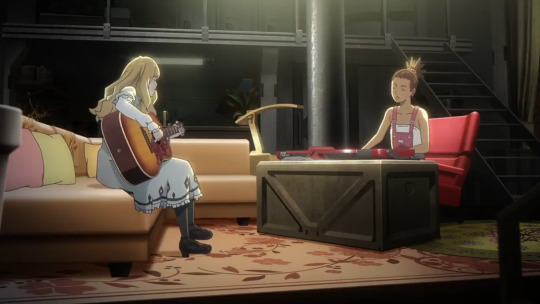
Carole & Tuesday: What happens when a runaway rich girl and a poor orphan girl meet up on Mars? They form a band of course. A tale of two lonely souls finding each other and become a little less lonely in a big world, making music together. It looks great and it sounds amazing, so this is definitely a priority watch.

Chou Kadou Girl 1/6 (Amazing Stranger): Imagine Buzz Lightyear from the original Toy Story except in a 20 -something guy’s house and then failing the don’t move when humans are around rule almost immediately. That’s what this show is.
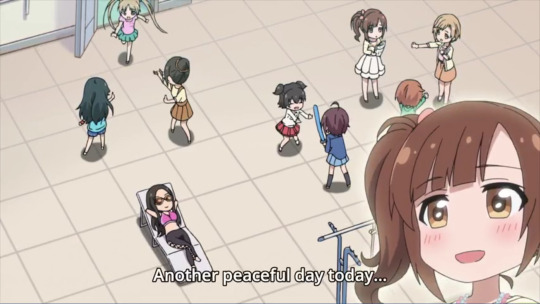
Cinderella Girls Gekijou CLIMAX SEASON (Cinderella Girls Theater CLIMAX SEASON): For somebody who doesn’t watch idol shows, the theater shorts are pretty fun, though I’m not nearly caught up in this one to say how this season is going.
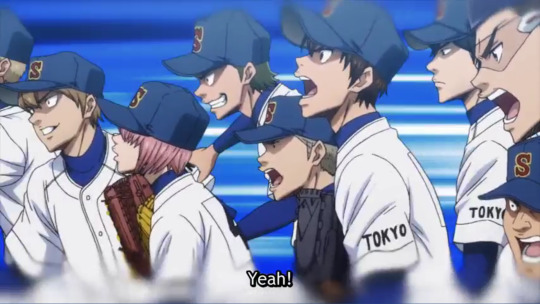
Diamond no Ace Act II: Oh boy there’s so much baseball this season and a lot of it is sequels.
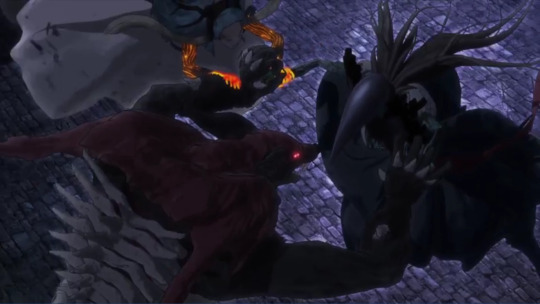
Fairy Gone: There’s a lot of things going on in this show but I think I can simplify it to military use of fairies to give soldiers super powers. The protagonist has been taking jobs as a mercenary to find her sister who was split from her after their village was burnt down. Then at an auction that she works as a guard, things start going wrong and the thief who appears is none other than that sister. The first episode ends with the end of a three way fight between security and the girls, so I’m not sure where the show’s going at all. Maybe if the show didn’t flash back to the protagonist’s village burning down three times, there would be a little more time to give direction.

Fruits Basket (2019): I never know how to deal with reboots for shows that I can remember, but haven’t seen the original. I know there’s people who turn into animals and a “do the carpets match the drapes” joke, and that’s about it from the 2001 anime.
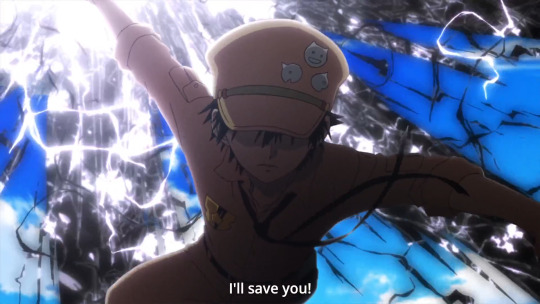
Gunjou no Magmel (Magmel of the Blue Sea): After a new continent appears in the world, explorers flock to it, not always as prepared as they should be for venturing into the unknown. The main character works at a company to rescue explorers from mishaps along with a few others. The worldbuilding is interesting and the main character’s black lightning is pretty cool looking, but his attitude and decision making abilities kinda put me off for now. That and the comprehensibility of the subtitles I was watching fell off a cliff halfway through the episode.

Hachigatsu no Cinderella Nine (Cinderella Nine in August): So far it looks like a pretty standard club building show based around women’s baseball. It looks nice and we have 4 club members as of the first episode, so they should make it to at least full team of nine pretty quickly. It looks nice outside of an odd montage near the end of the episode when the club plays a game with some local kids, and the character designs are a bit more memorable than the usual baseball cast. I appreciate the fact that they’re playing hardball, but I’m not the type of person to watch anything sports ever.
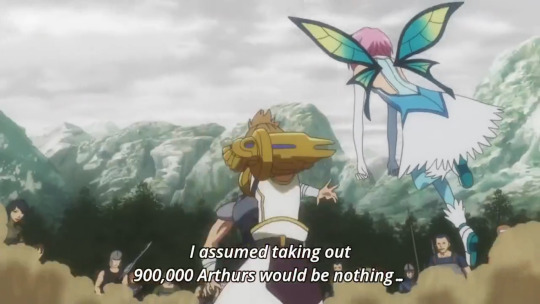
Hangyaku-sei Million Arthur 2 (Operation Han-Gyaku-Sei Million Arthur): All I know about this show is that there’s a bunch of characters named Arthur and that it’s a sequel.
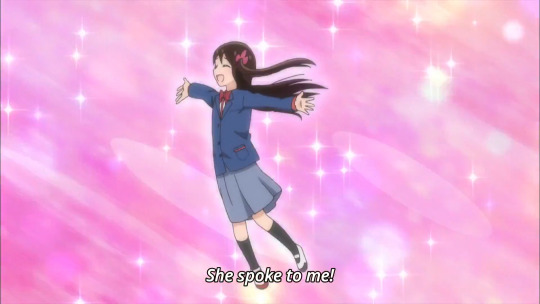
Hitoribocchi no Marumaru Seikatsu (Hitori Bocchi's ○○ Lifestyle): When one of the most socially anxious kids in elementary school gets separated by her only friend when they go to different middle schools, her friend gives her a quest: to become friends with everybody in her new class. She’s got a real go-getter attitude, but from feeling physical pain from trying to talk to a stranger to fainting when somebody actually responds to her, she’s got a rough path ahead of her. It’s a really fun show that gets you rooting for the main character in her attempts of communicating with others in a normal manner.

Isekai Quartet: Four of the biggest isekai series in one short mash-up is a recipe for confusion. Especially since they’re all put together in a school setting where no fighting is allowed, even if there are holy gods and undead abominations in the same class. Anything can happen with all these people taken from their original normal lives, tossed into various fantasy worlds, and then slam dunked back into a relatively normal setting.
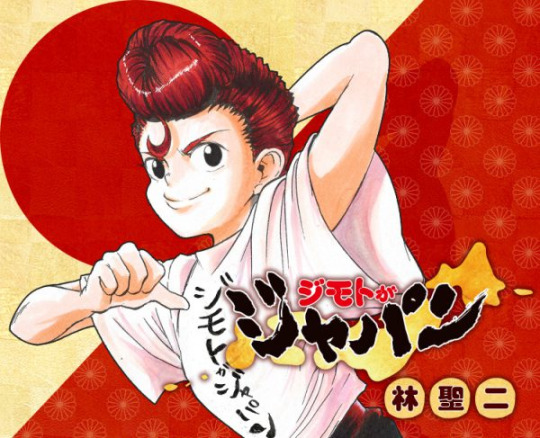
Jimoto ga Japan (I’m From Japan): I cannot find a trace of the anime anywhere online and I am glad of this having read the manga. It is just a really dumb comedy about Japanese prefectures that I struggled to read a few chapters of before giving up.

Joushikausei: A silent anime, as in there’s no spoken words, about a few high school girls. It’s an interesting concept, but I found it a bit uncomfortable to watch, mostly due to the whimpering and other nonverbal noises the girls were making.
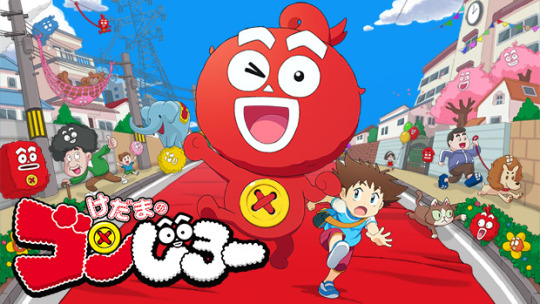
Kedama no Gonjirou (Gonjiro the Yarn Ball): A children’s show that hasn’t been licensed and no group is fansubbing it, how unusual… It actually looks interesting though so I might search for the raws to check it out.

Kenja no Mago (The Magi’s Grandson): A child raised by a powerful wizard in the country reaches an age where he can move out to the city and attend a magical high school. Unfortunately for him, his parental figures only taught him combat and magic, so he doesn’t really know how to sustain himself in the reals world. It is a decent concept but there’s a 50/50 chance of any scene looking nice or looking awful, and the scene transitions all look like they were made in Powerpoint.
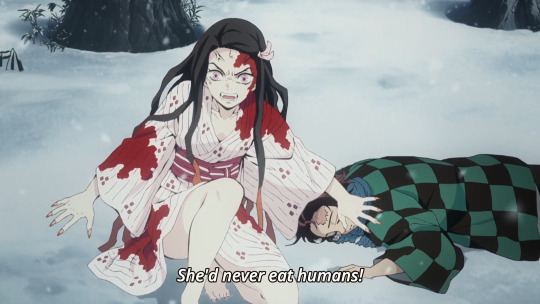
Kimetsu no Yaiba (Demon Slaying Blade): A happy family of coal sellers is destroyed in a night when a demon strikes. The eldest son was out due to a combination of work and a blizzard, and when he returns he finds all but one of his family members completely cold and covered in blood. This last member is rushed down the mountainside for medical aid, only to turn into a demon on the way down. A meeting with a demon slayer turns tricky as he tries to protect his demonized sister who’s fighting between killing instincts and her love of her brother. The opening promises some beautiful animations and the overall show isn’t slacking either, so overall it’s a very promising show.
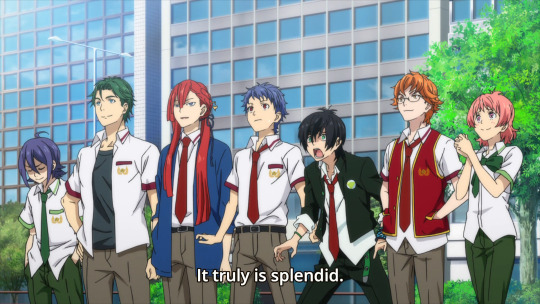
KING OF PRISM -Shiny Seven Stars-: It’s the TV version of a boy band movie tetralogy which is also a sequel I think?

Kiratto Pri☆chan Season 2: A sequel to a idol anime that I reviewed last year. I think this is one of the first times a sequel has shown up that I also reviewed the first season of, though unfortunately it was for a show that I didn’t watch fully.

Kono Oto Tomare! (Stop this Sound!): One more club building show for this season, this one about a Japanese instrument called a koto. After all the upperclassmen of the club graduated in the previous year, only the main character is left in the club, and needs more members before the club gets closed, the usual. The first new member is a seemingly delinquent 1st year who is surprisingly diligent. There wasn’t too much interesting or unique other than the topic of the club, so music fans might find this more watchable than I.
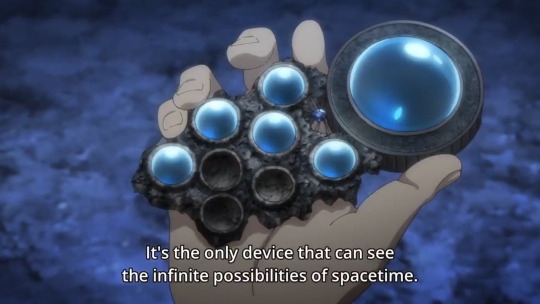
Kono Yo no Hate de Koi wo Utau Shoujo YU-NO (YU-NO: A Girl Who Chants Love at the Bound of this World): The first episode for this kind of front-loaded introducing characters and pulled out its premise of parallel dimensions and a device to navigate them towards the end, which means I’d probably have to watch another episode to figure out how I feel about it. It’s nice to not have a giant exposition dump take up the first episode of a show, especially since it will have two cours to tell a story, but I didn’t feel any particular gravitation towards the characters by this point, so I won’t be prioritizing any follow-up on it.

Mayonaka no Occult Koumuin (Midnight Occult Civil Servants): With a job at a place called the Nocturnal Community Relations Division, the first thought of the type of people dealt with is most likely not going to be fairies. Our main character is taken from a world of the ordinary to being able to see and talk to the supernatural creatures that live locally, called Anothers. His co-workers are equipped with magically enchanted police tape and other trinkets to help solve issues that occasionally arise between Anothers. I like the modern fantasy setting, and the fairly low level fights with the supernatural so far, so there’s promise in where the show goes.

Midara na Ao-chan wa Benkyou ga Dekinai (Ao Can’t Study): While the name Ao is usually blue, or sometimes even moth, in this case, it stands for Adult Only, the 18+ rating in Japan. This is due to her father’s profession, an erotic writer, and surprisingly, the main character hates her father for naming her that and spends her entire life studying to get into a college far enough away from him. This is thwarted by a guy confessing to her and filling her mind with romance and lewder thoughts, with the help of her father. I hate this as a concept and don’t watch this.
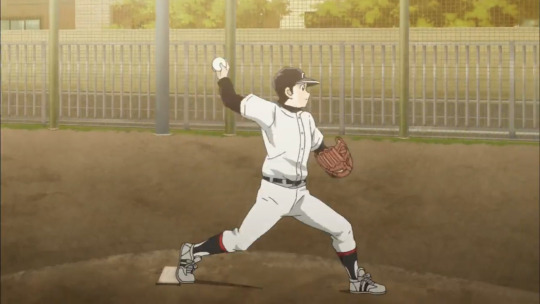
Mix: A semi-sequel baseball anime. I say semi, because from what I’ve gathered it is recommended but not necessary to watch the original first.

Nande Koko ni Sensei ga!? (Why is my Teacher Here!?): It’s about a male student and his teacher, ending up in awkward situations together, like being trapped together in a men’s bathroom stall. A show of pure fanservice through and through, so there’s not much else to say.

Namu Amida Butsu!: Rendai Utena: What started out as an action about cleansing impurities from the world gives us a quick bait ‘n switch to a slice of life about gods bumbling about in the human world attempting to be competent humans. I found it irritating to watch, and it was very clearly based off of a gacha game, which do not have a good track record of making good shows.
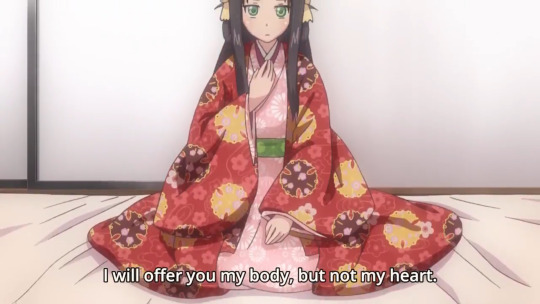
Nobunaga-sensei no Osanazuma (Nobunaga’s Young Bride): A modern age middle school teacher way down the ancestral tree of Oda Nobunaga meets the bride of the man himself, who traveled to the present from the day of the original Nobunaga’s death. She’s no older than when she left her original time, which leaves her at 14 years old, with no knowledge of modern day Japan so she’s stuck with the main character’s family and decides to be the new Nobunaga’s bride anyways, which… is weird.

One Punch Man 2: A big sequel of the season, and one where people have been waiting with wary anticipation due to the change in animation studio and director. It definitely looks a lot stiffer than the first season, for action and non-fight scenes, but the story is a bit more interesting in my opinion, as the show starts working on fleshing out other heroes and why they fight.
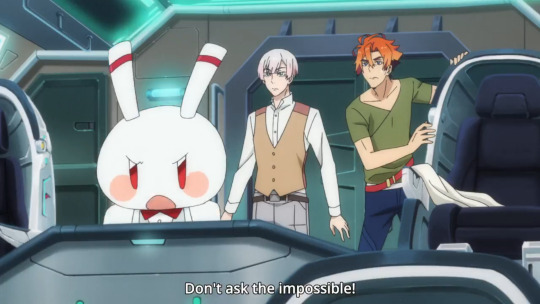
RobiHachi: the first episode of this really is a springboard for setting up what the plot and cast will be, just about starting right at the very end. We’ve got an ultra gullible man in debt, a genius teen with no sense of purpose, a robot rabbit helper, and their spaceship that blares its own theme song when it transforms into a mech. They set off to find a legendary planet that grants happiness after a couple of hijinks on their starting planet. It’s a very busy show, both visually and plot wise, but still an enjoyable experience if you can keep up.

Sarazanmai: 50% connecting with other people through oversharing with them, 50% kappas stealing souls from other people’s butts. It’s hard to describe the show but I’m having a good time, and the art is gorgeous, and special care is taken with little details in the show. I’d say watch the first episode definitely, and then decide whether or not to follow up on the rest of the show.
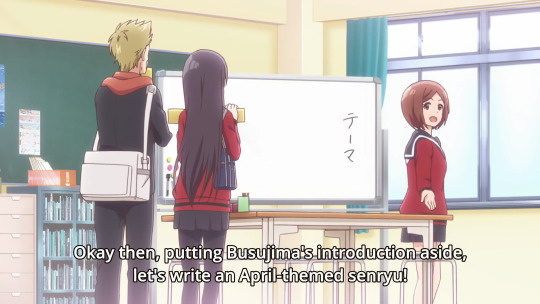
Senryuu Shoujo (Senryuu Girl): The focus of the show is on the Japanese poetry type of Senryuu, mostly because the main character can only communicate with others through writing these poems. Thankfully, she’s got some good friends and is in her school’s Literature Club, so she has plenty of practice and is around people who appreciate her work.
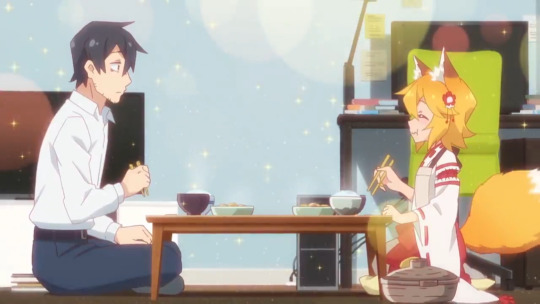
Sewayaki Kitsune no Senko-san (Meddlesome Fox Senko): The fox gods of the world have a duty to protect humans, and are becoming more proactive in seeking out humans with negative emotions before those emotions go out of control. In comes the male lead of the show, an overworked businessman who has basically just been going through the motions of life by this point. One of the fox gods appears in his house, doing the cooking, cleaning, and other tasks to help relieve the main guy’s stress. It’s comfy and there’s some funny moments, but I feel like the show would be better off as a more episodic show featuring various humans rather than just the one that it looks like the show will focus on. I’m also worried about the romance genre tag that the show has.
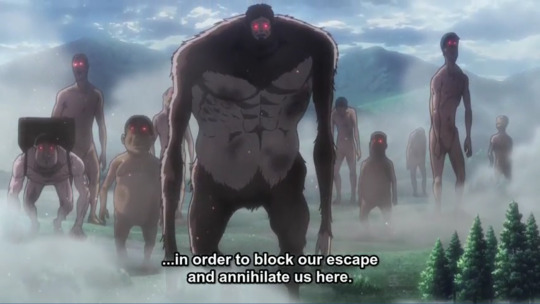
Shingeki no Kyojin 3 Part 2 (Attack on Titan 3 Part 2): I’m still on episode 5 of the original series, with no particular motivation to make it any further. More people die in bloody explosions probably.

Shoumetsu Toshi (Lost City): As the title of the show would imply there is a city that has been lost to humanity, as in, it just disappeared one day. The main female character is the only one who survived the city disappearing, and is targeted by a mysterious group due to that, and she tries to return to where the lost city used to be due to a message by her father who went missing with the city. In addition there was a monk with super powers who was standing on a motorcycle’s handlebars facing off against the main girl who could summon her Lost bodyguard with a bunch of guns but that was kinda just thrown in at the end.

Strike Witches 501 Butai Hasshin Shimasu! (Strike Witches 501st Join Fighter Wing Takes Off!): Oh god it’s been so long since I’ve consumed Strike Witches content. This is a slice of life spin off of the original series, so the context is recommended, but not necessary. The animation is also very much on the rough side for a ten minute long short.

Yatogame-chan Kansatsu Nikki (Yatogame’s Observation Diary): After briefly being disappointed in the lack of heavy Nagoya dialects encountered in Nagoya, the main character runs into a classmate who happens to have one. In addition, all of her favorite foods and animals are popular or famous in Nagoya, so he sticks around with her for meeting his ideals of what a Nagoyan should be. They then travel the city as part of the photography club to see all the sights of the city.

Youkai Watch!: Despite what it looks like from the title, this is pretty deep in a line of sequels of Youkai Watch.
1 note
·
View note